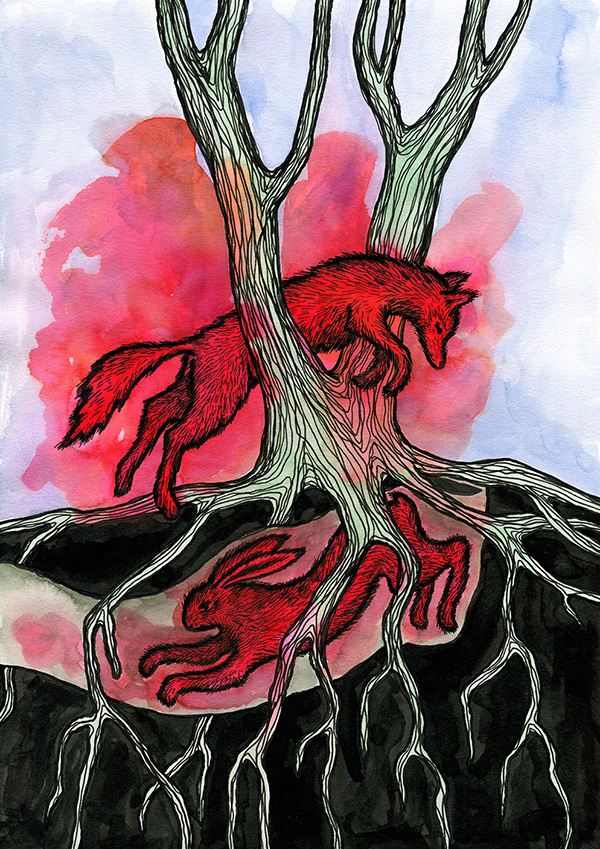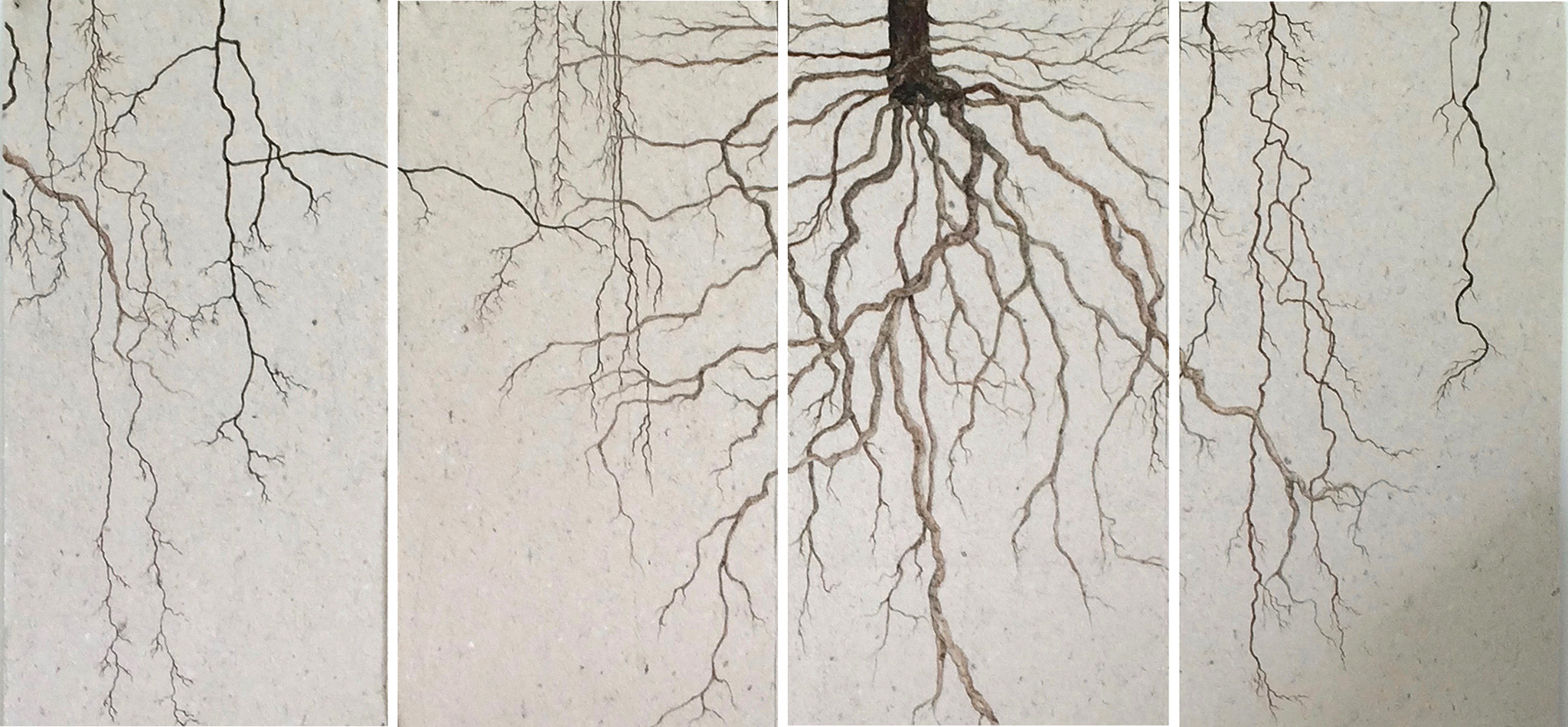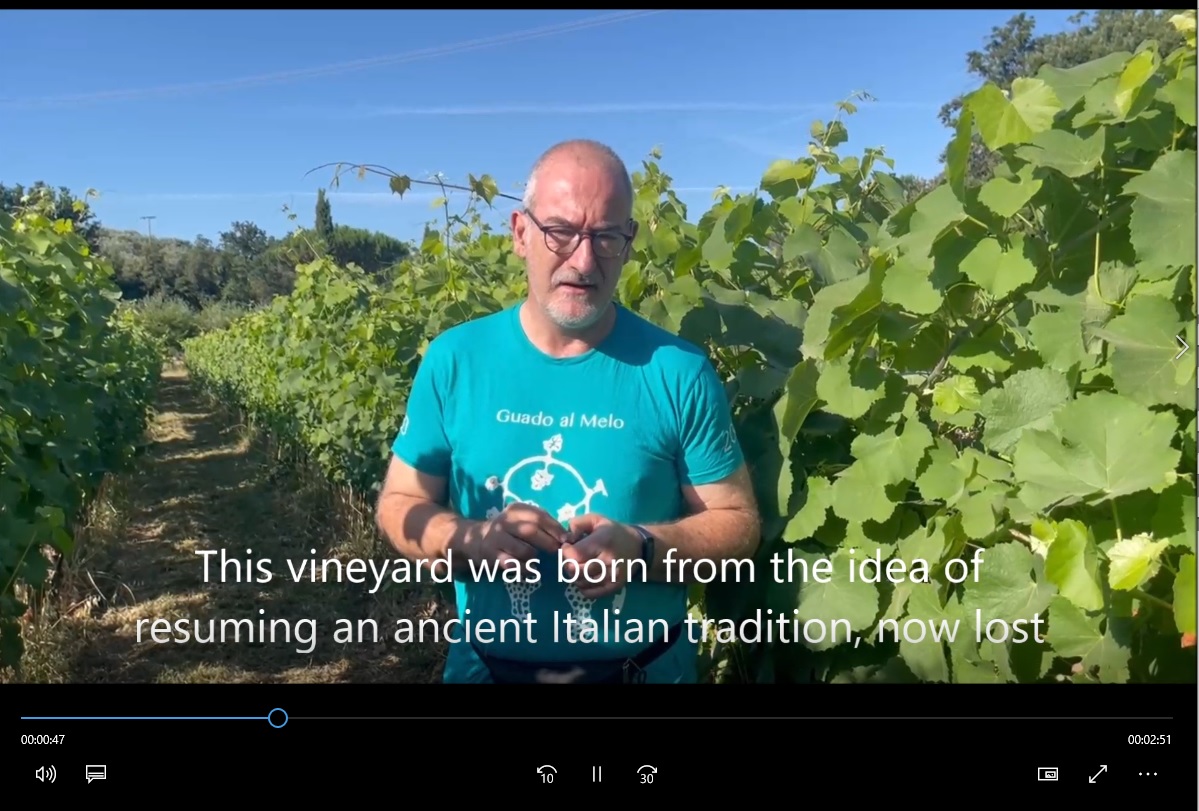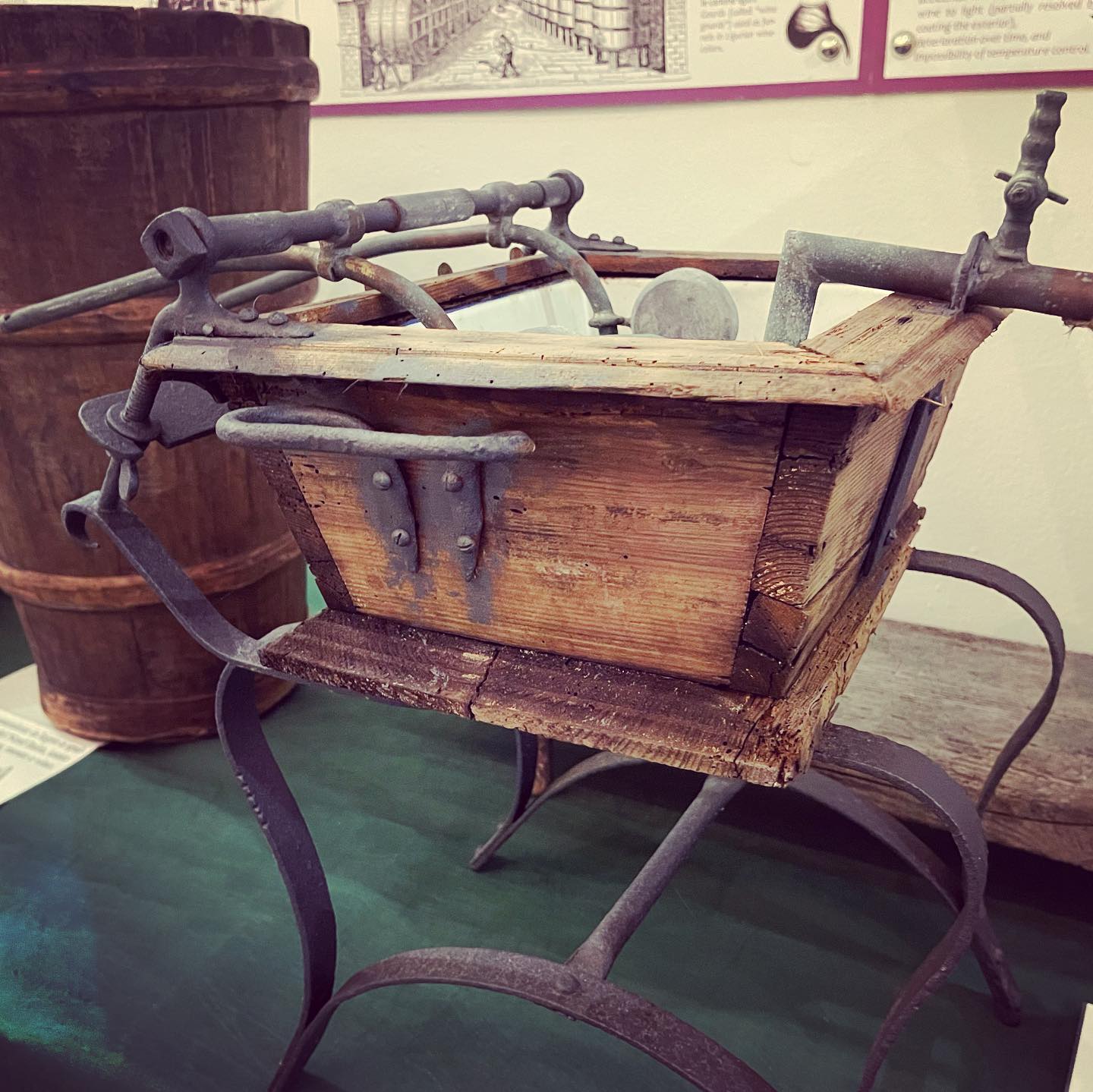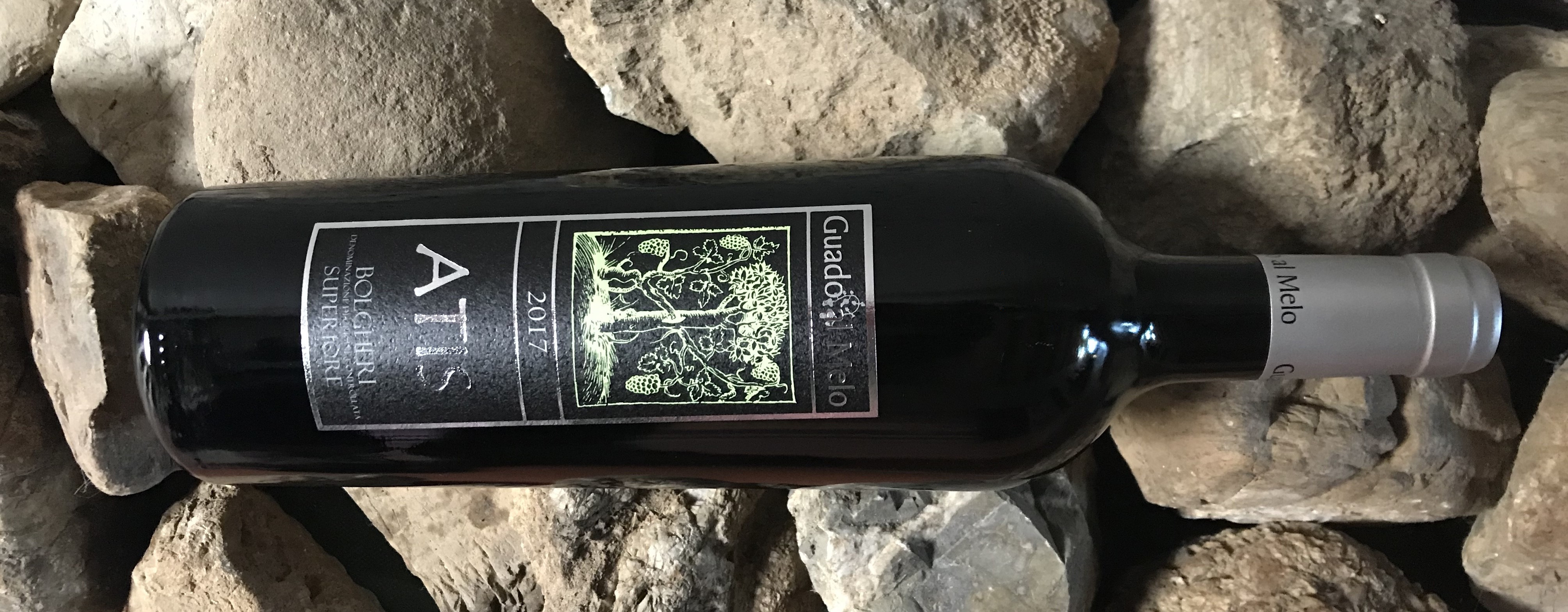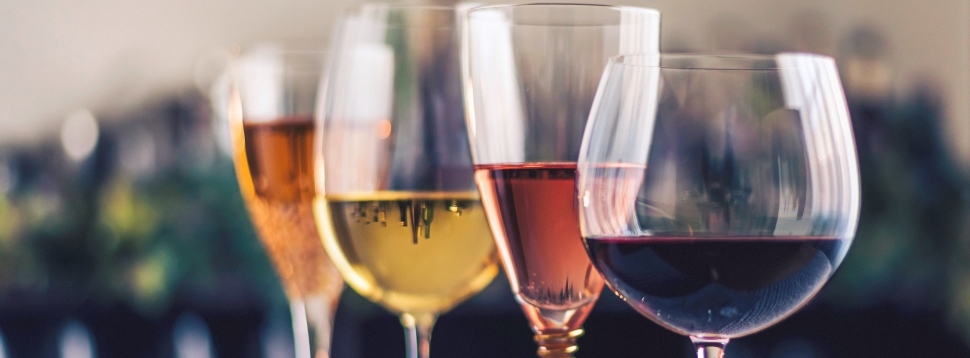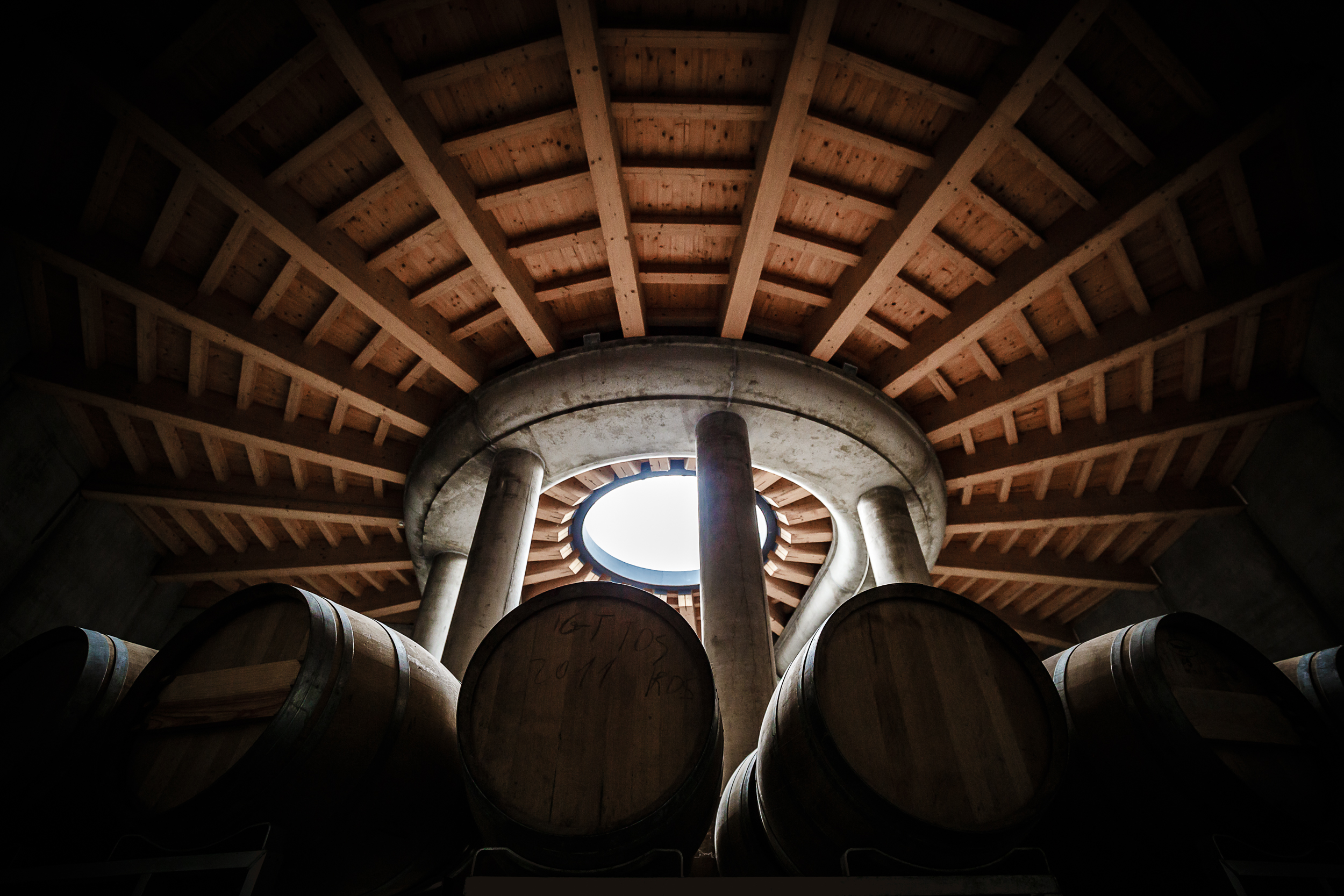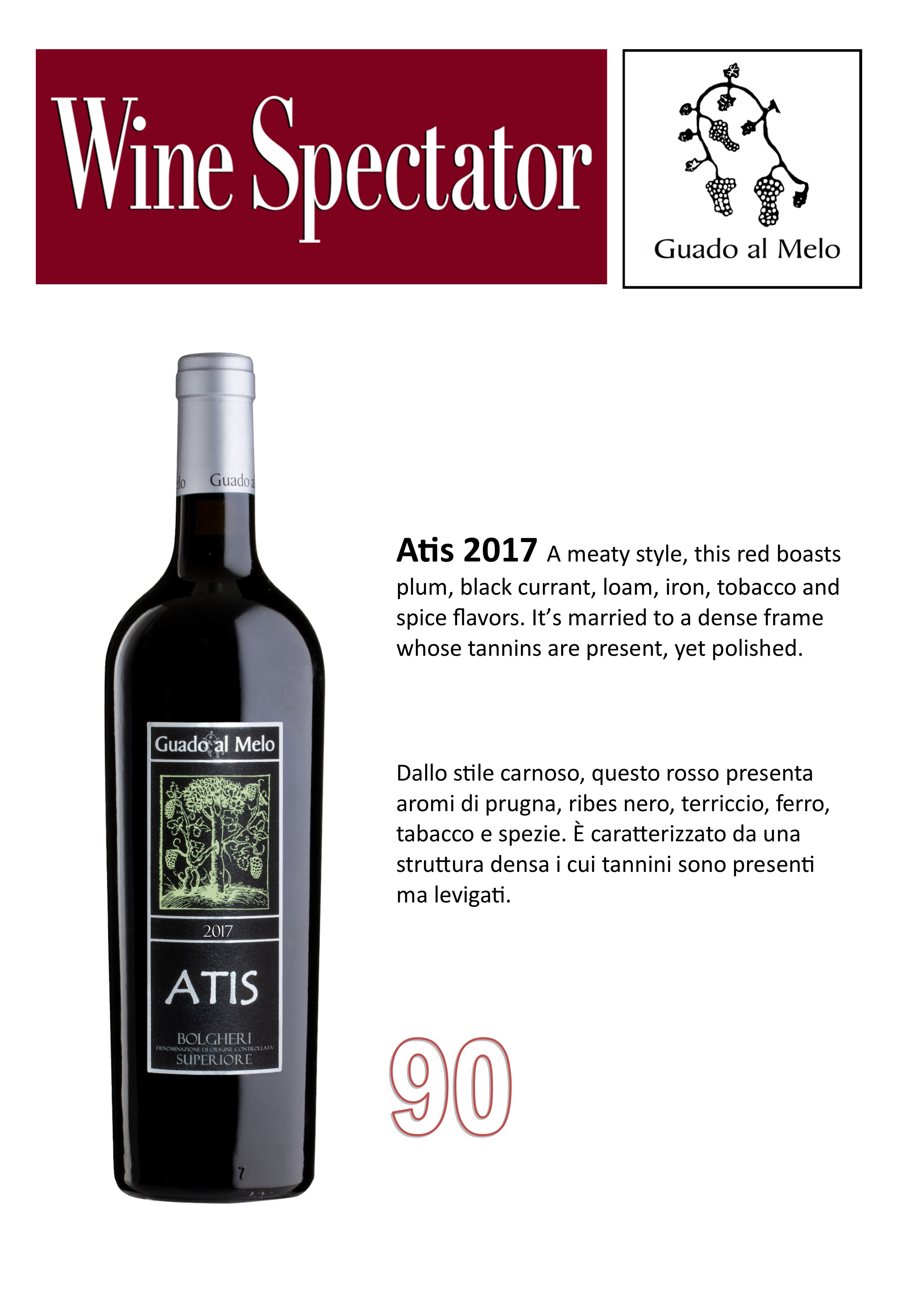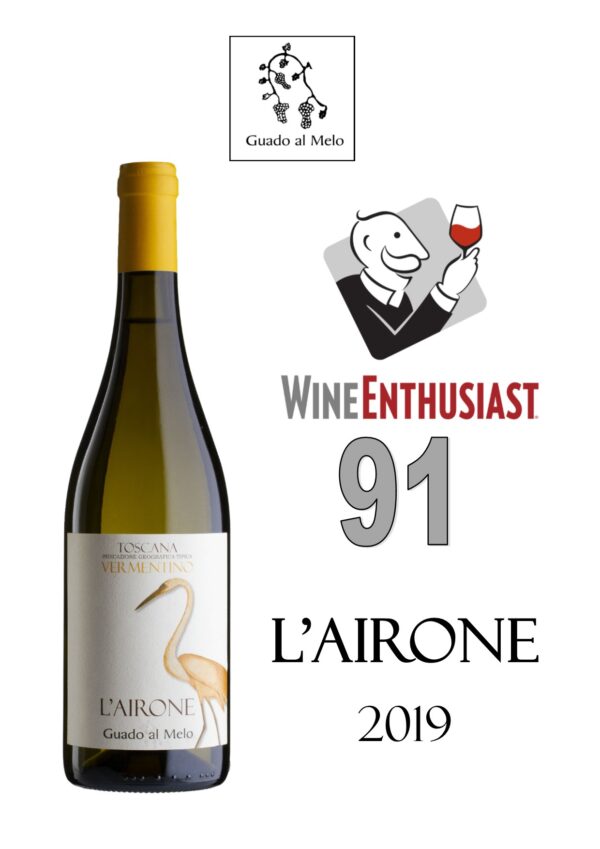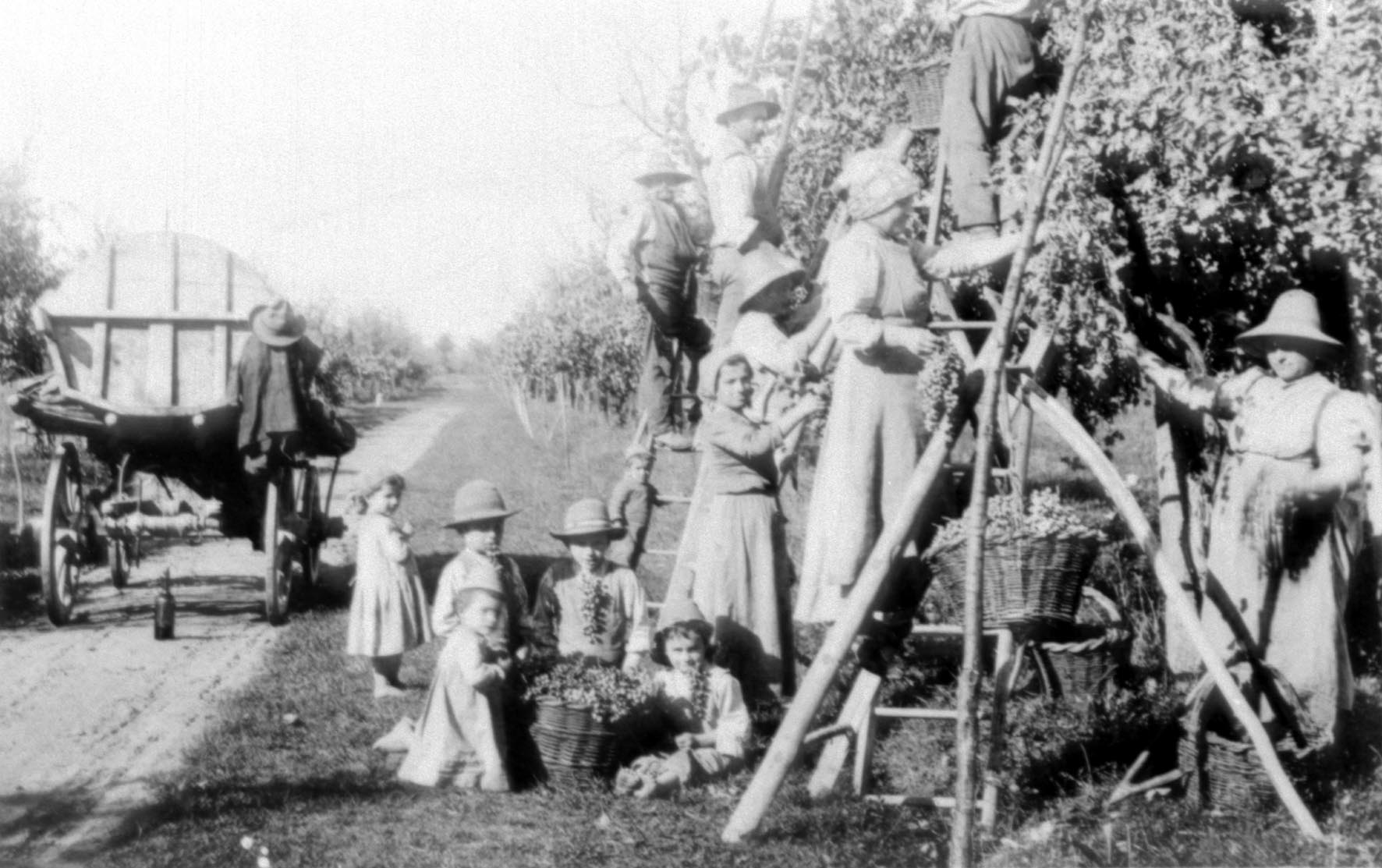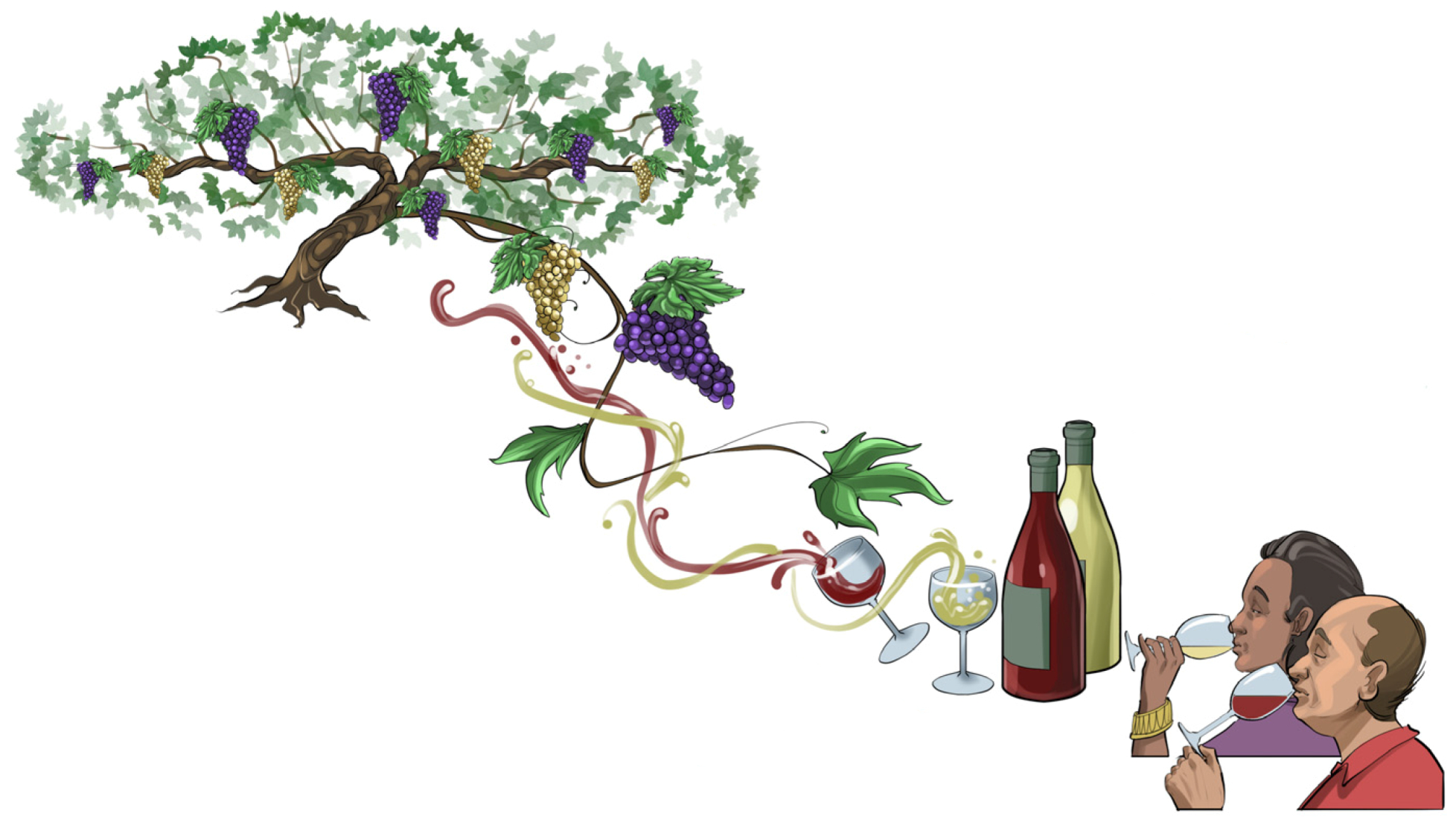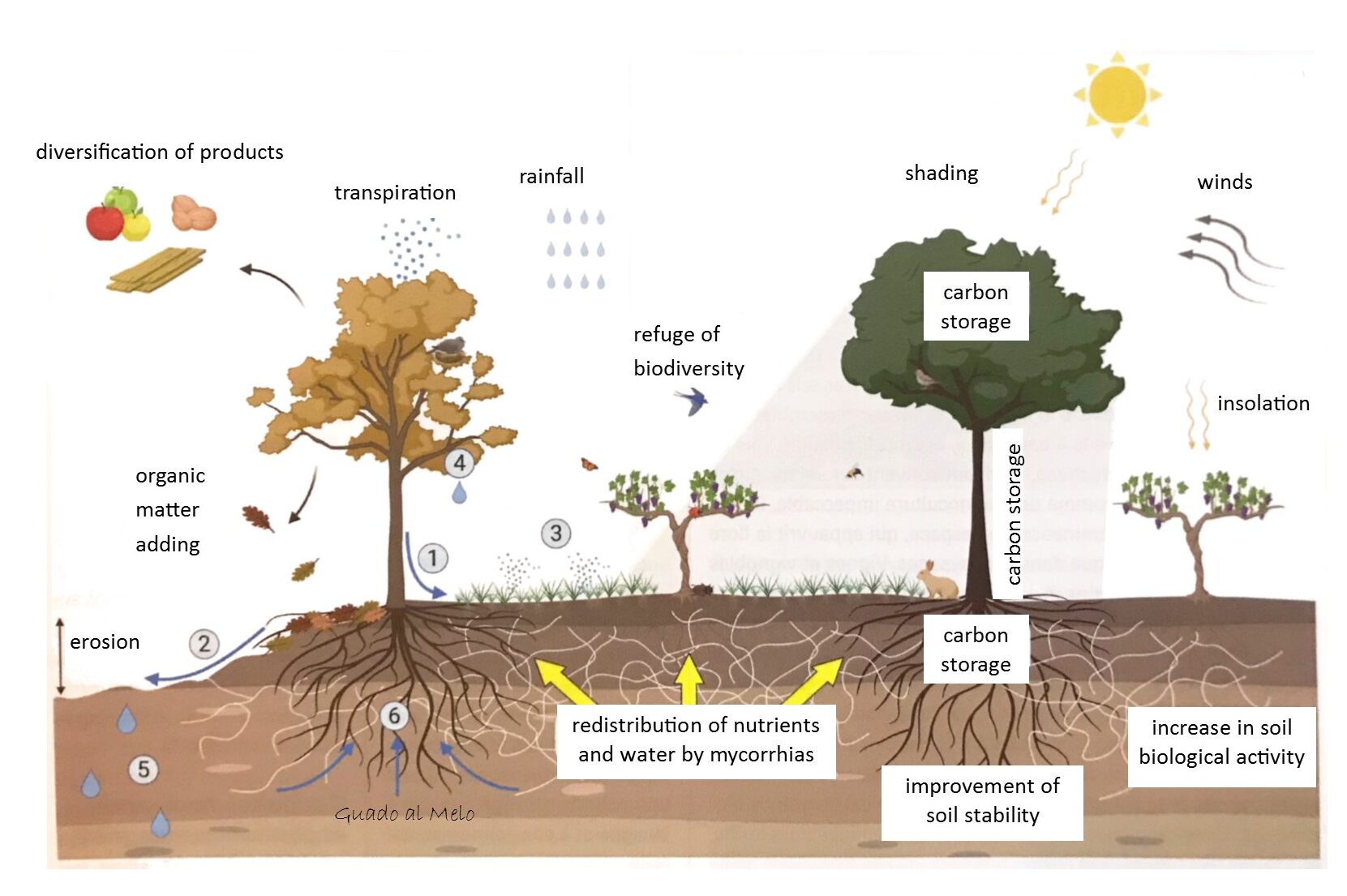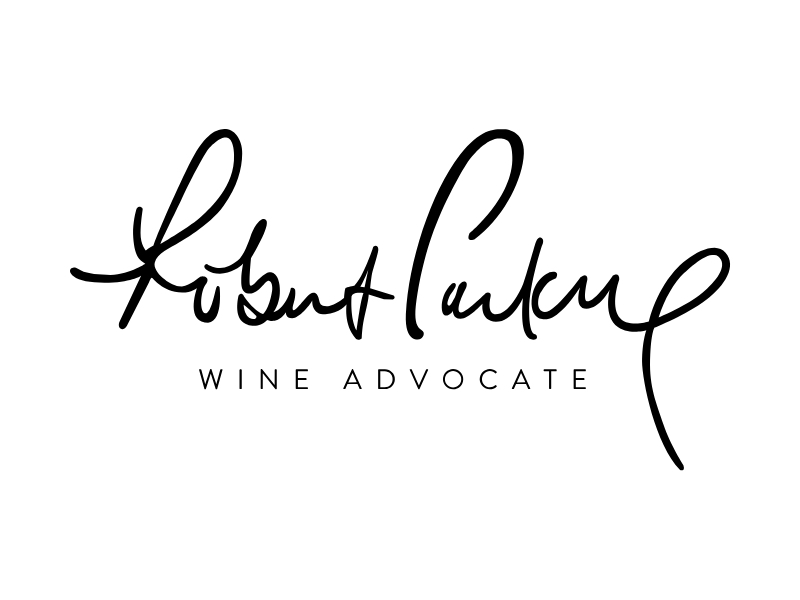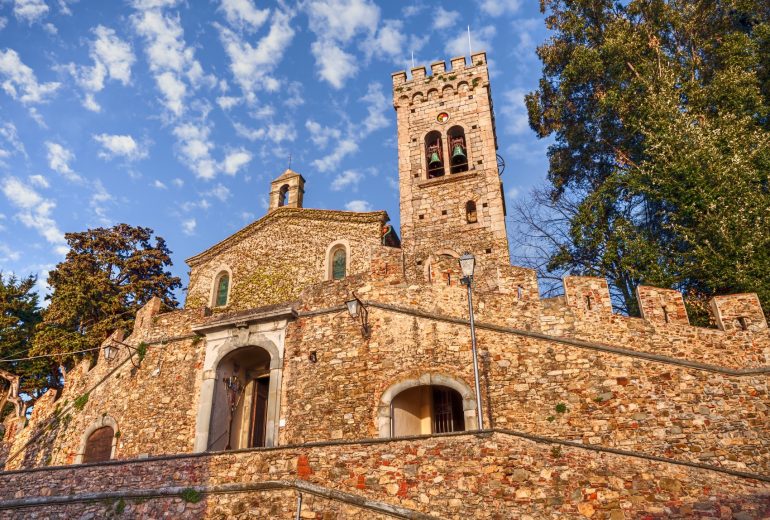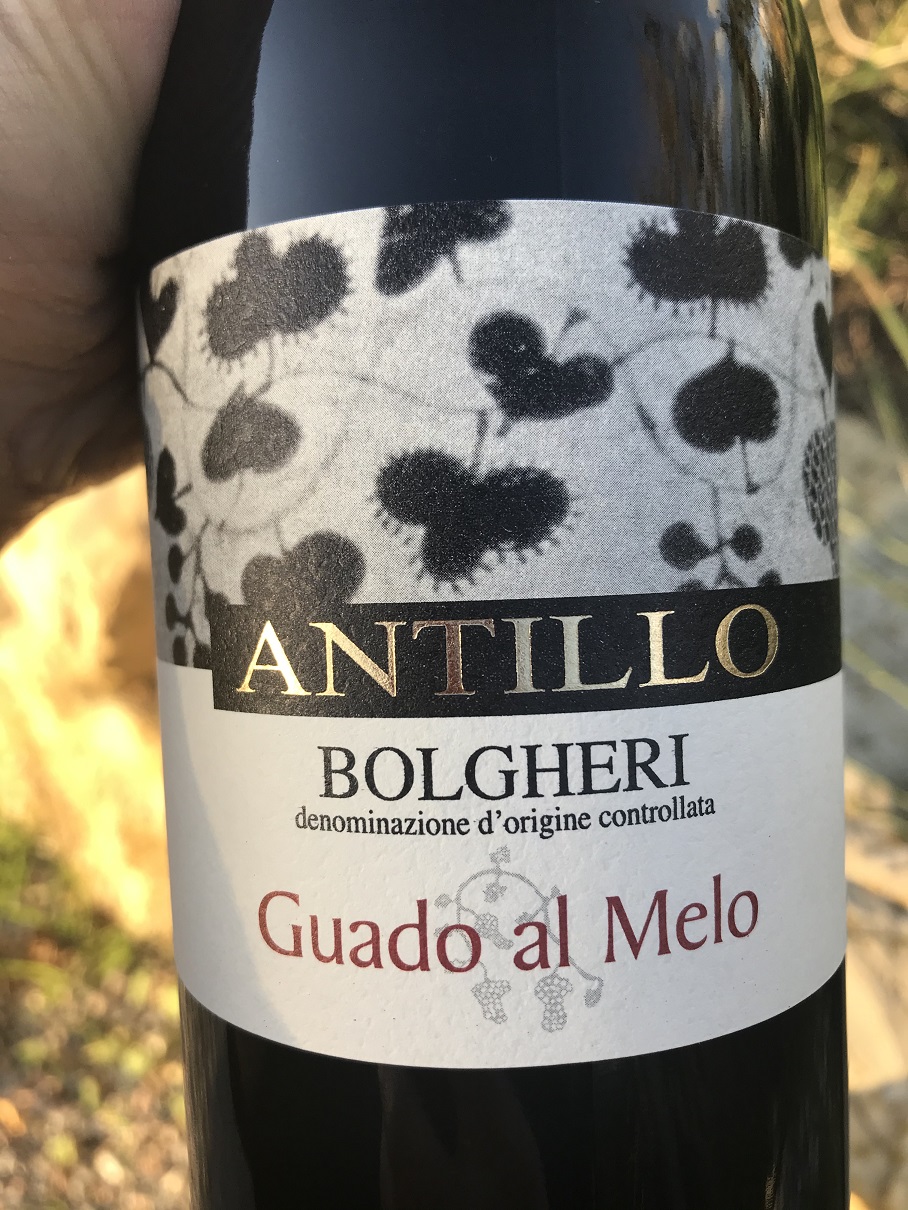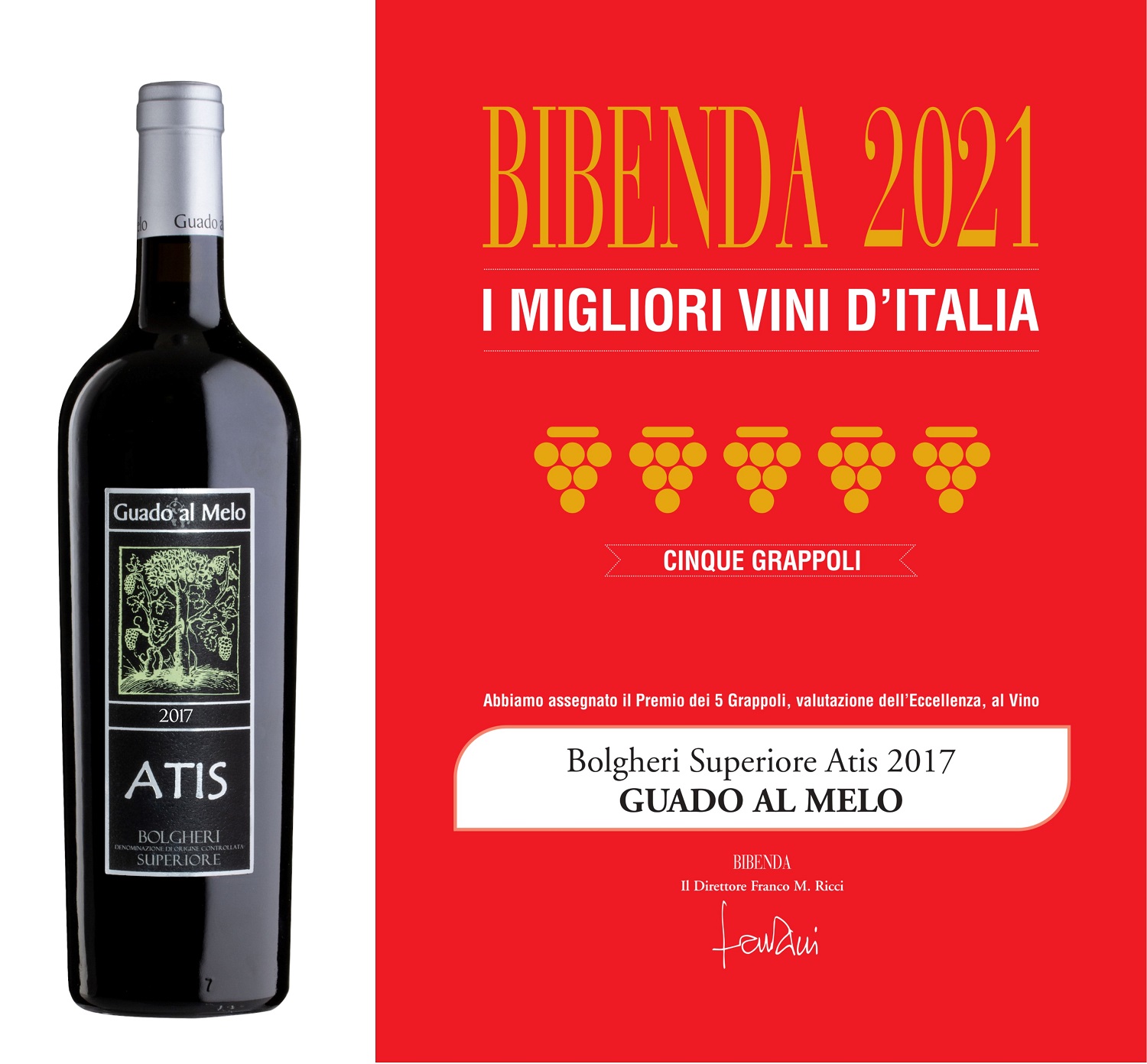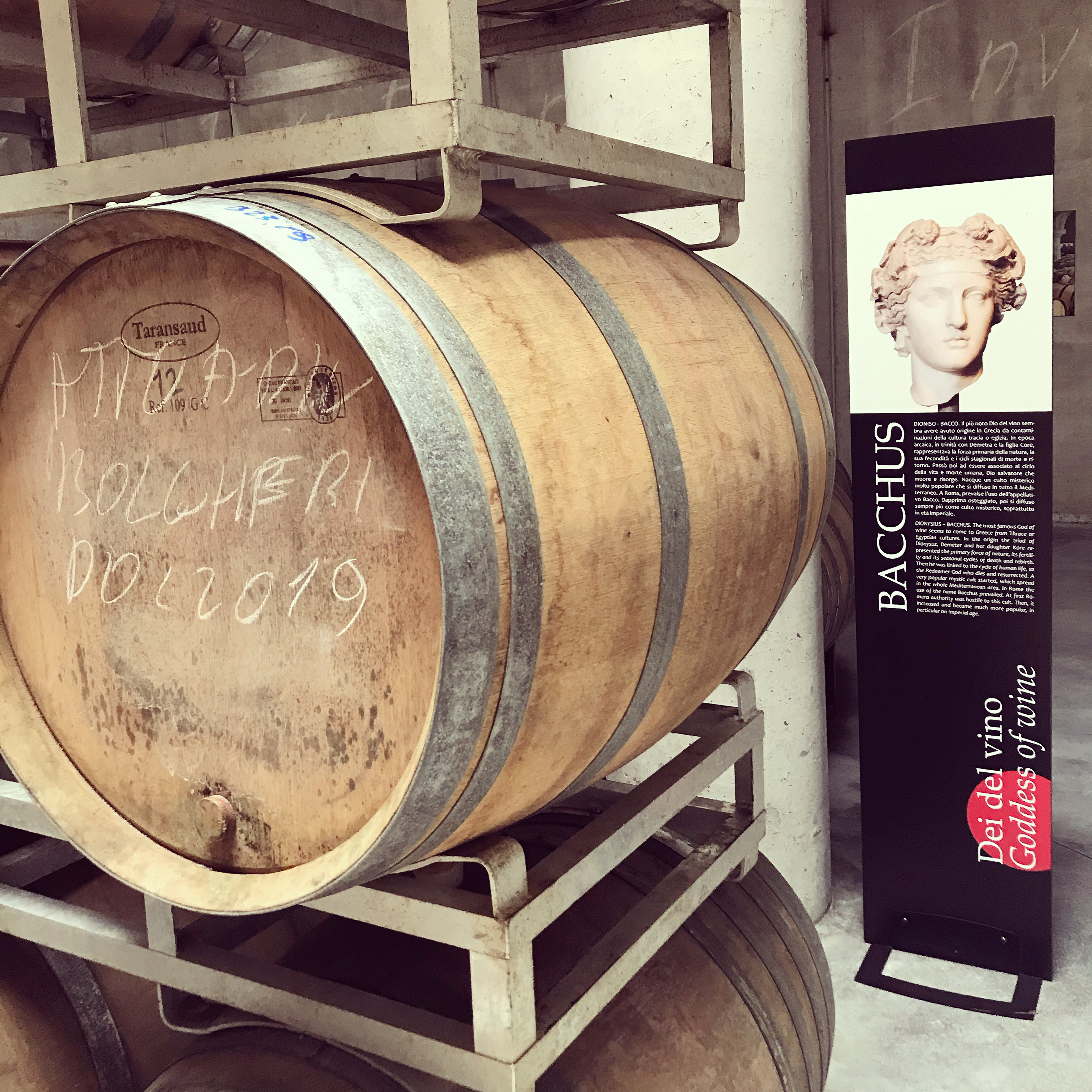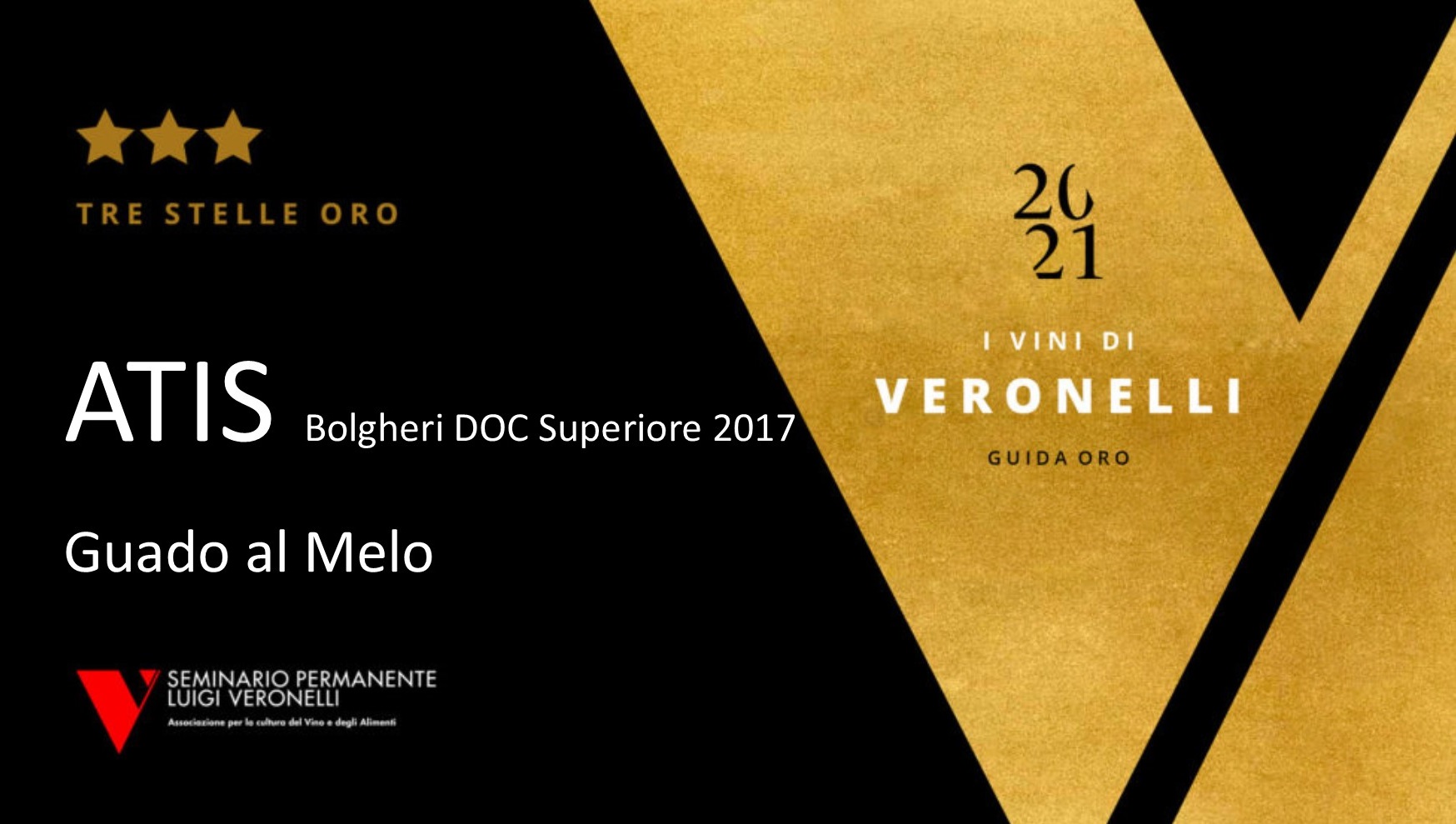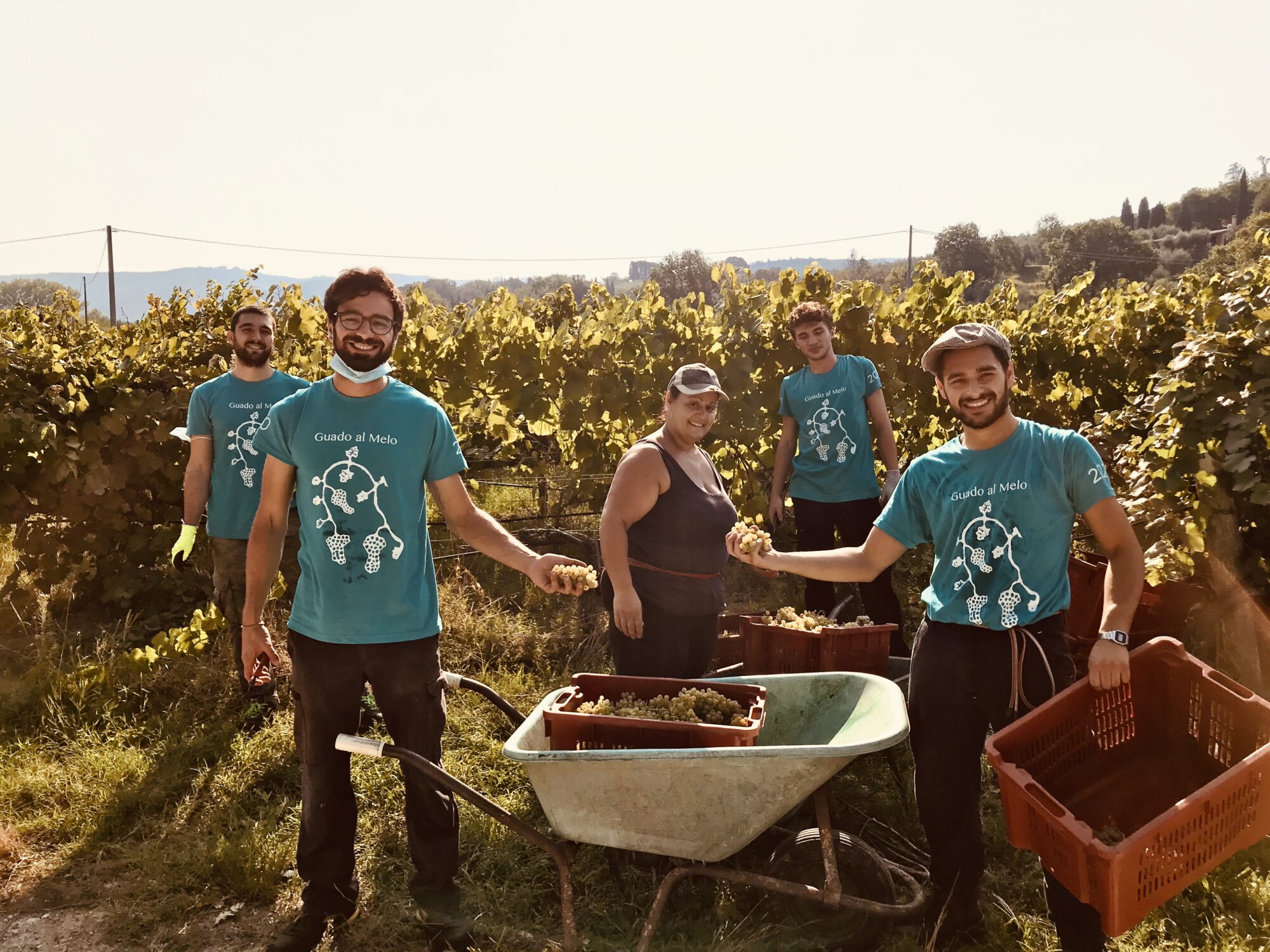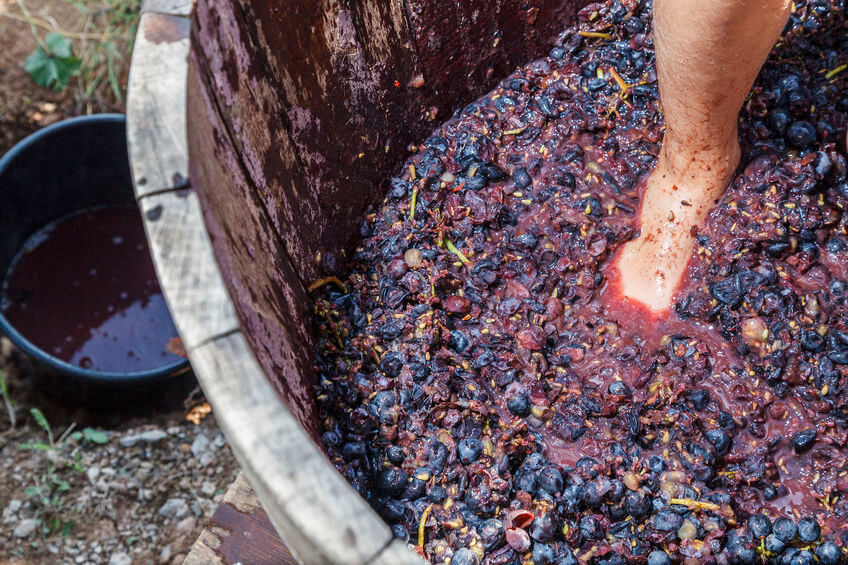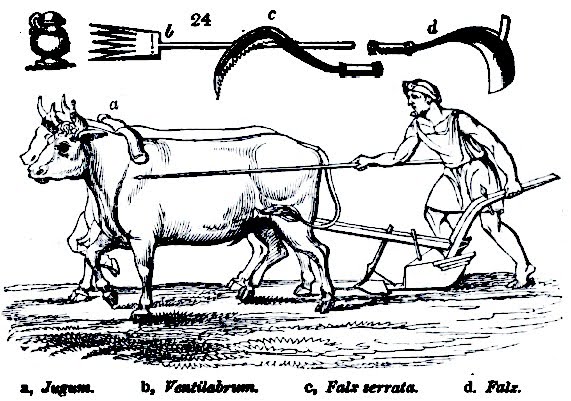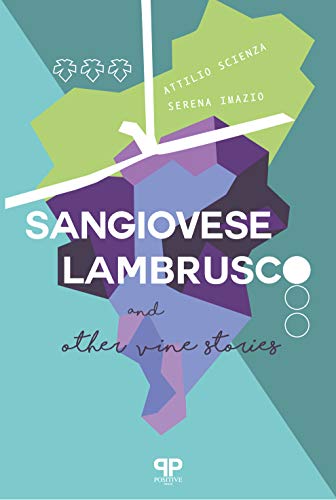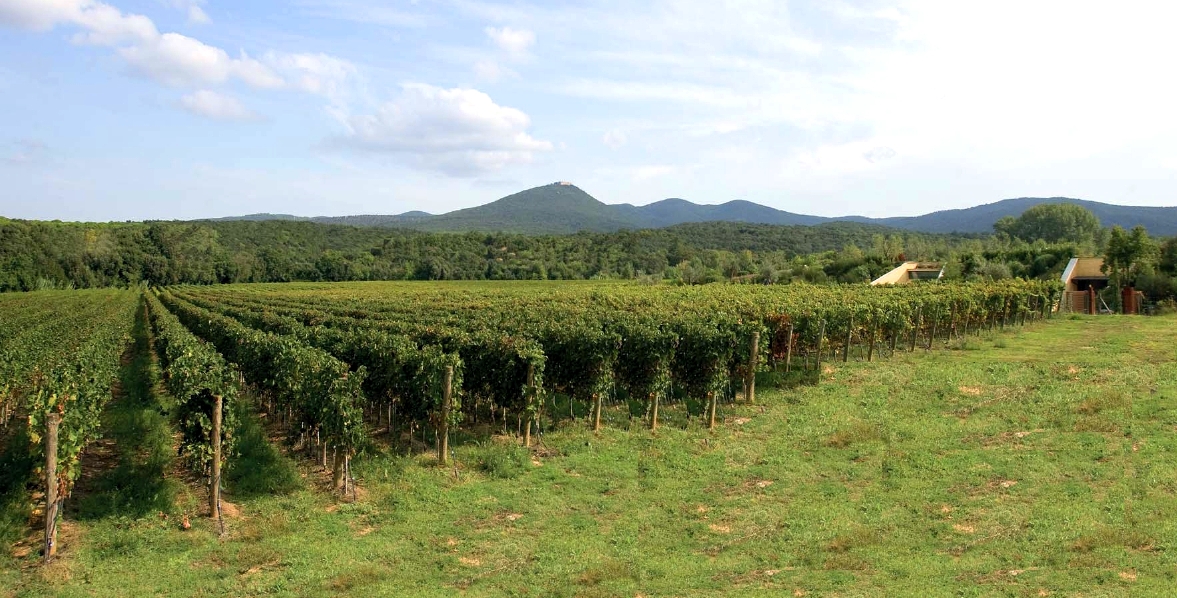Our Rute, first on the best wine list of Bolgheri according to Gambero Rosso
I am pleased to discover that the August issue of Gambero Rosso dedicates a long article to the cuisine and wines of our Livorno coast. And who stands out? Our Rute Bolgheri DOC Rosso, of course. Thanks a lot to the editors.

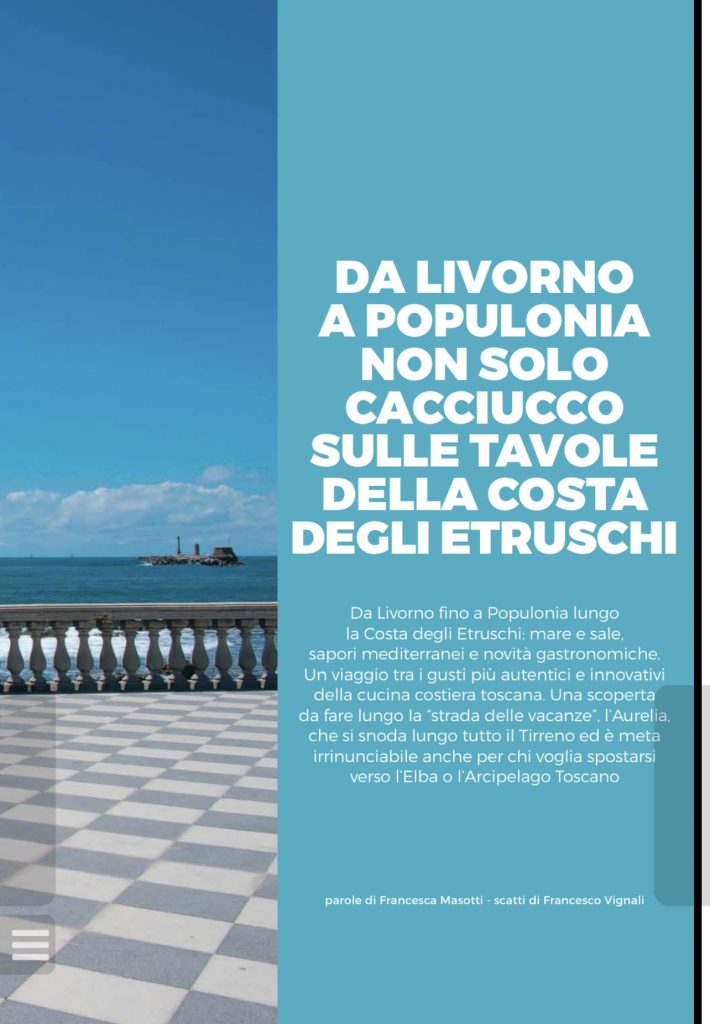
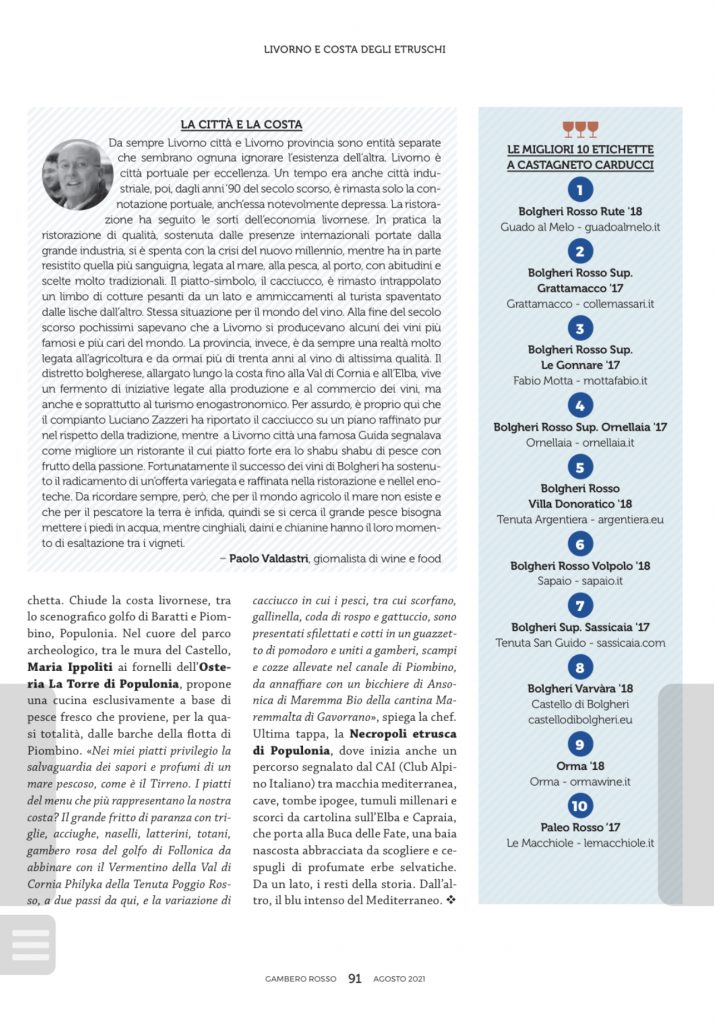
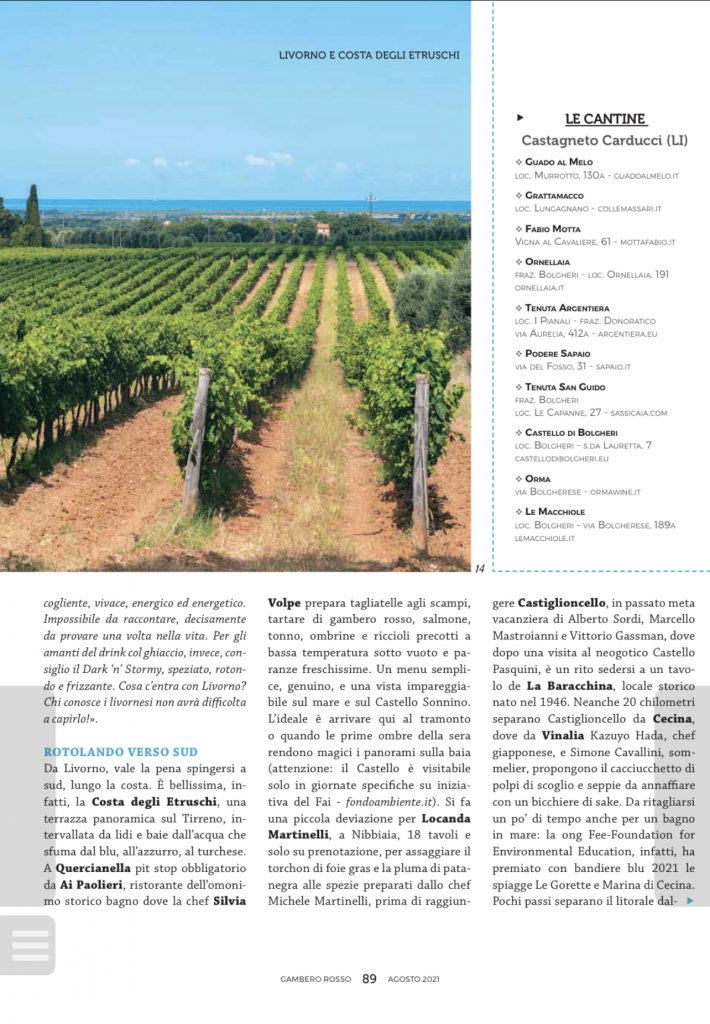
Roots, the underground life of the grapevine (2)
Continued from here
"Leave the flowers to others, still too far away. Your thought remains with the seeds and with the firm grip of the roots …" (Margherita Guidacci, "To myself")
We keep talking about roots. Let's see their functions and the influences that agricultural practices have on their development.
My main source is “Vine roots” by South African professors E. Archer and D. Saayman (2018, The Institute for Grape and Wine Sciences, Stellenbosch University), as well as several illustrations. This is an excellent overview. The University of Stellenbosch is considered to be the world’s most qualified center on wine-growing soil studies.
Water and water stress
The roots mainly influence the production of the vine on the basis of their ability to ensure water. They have evolved to survive in an environment at the limit for it. So, if well managed, they can be of great help to overcome the difficulties related to the climate change.
The vine does not need a lot of water, indeed it is established that it produces grapes of higher quality when it is a little stressed, not with the maximum of its vigor. However, the stress must not be more than necessary, otherwise the quality of the grapes undergoes and, therefore, of the wine. Especially at certain times of its cycle, the plant must have the water it needs on a regular basis. Conversely, the vine does not like excess water and the roots avoid stagnation areas if possible. They approach the aquifer and absorbs the water that rises above it by capillarity. The water table recedes during the late spring and early summer. The roots, which are in a phase of active growth, follow it (if they do not find obstacles).
Water absorption occurs mainly thanks to the thinnest roots, which is why their optimal development is important. It was once thought that the woody ones (with the bark) were completely excluded from this function. However, they also play a role, especially when the vine awakens and the subtle roots are very few (as we have already seen). The lignified roots can absorb water from the frequent breaks or cracks that form in the bark to allow lateral roots to emerge. However, they have a much lower absorption capacity than non-lignified ones (minus 40-70%).
The absorption and transport of water occurs in the plant mainly thank a sort of "suction" force that is created due to the water loss by leaf transpiration. The water molecules are strongly cohesive with each other and pressed in the thin tubes of the xylem (this is why we speak of capillarity): they thus form a kind of train, made up of many wagons linked together, which are dragged upwards.
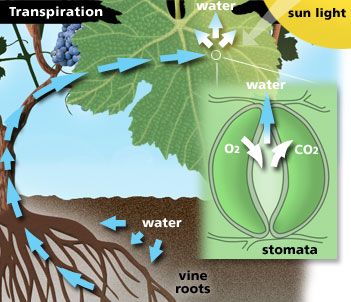
In the early spring, however, the leaves are not there yet. In this phase, the water thrust comes from the roots. When the soil begins to warm up, the roots resume metabolic activity and an osmotic potential is created, that causes water absorbation. That generates a pressure in the roots that pushes the water upwards. The roots are capable of very strong pressure: it has been calculated that they could carry water up to a height of 35 meters. When there'll be enough transpiring leaves, they'll become predominant in leading the process.
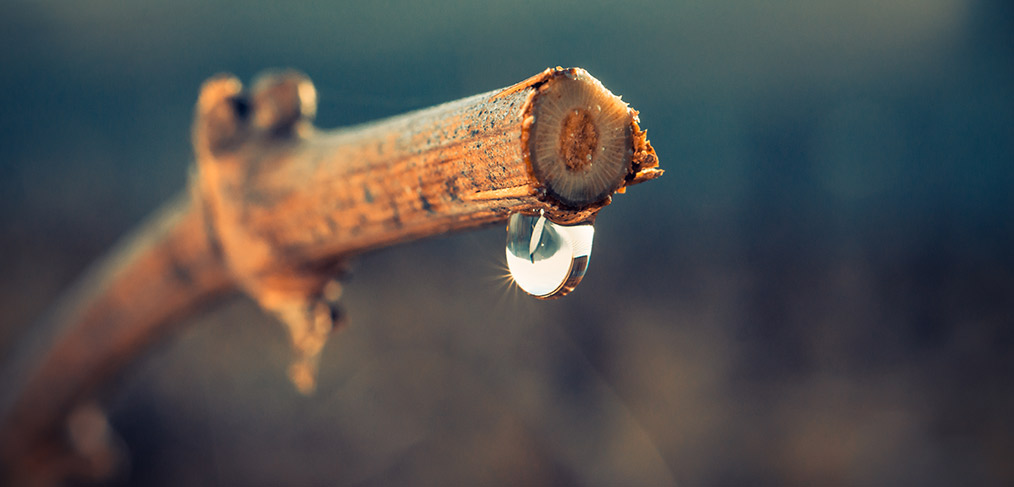
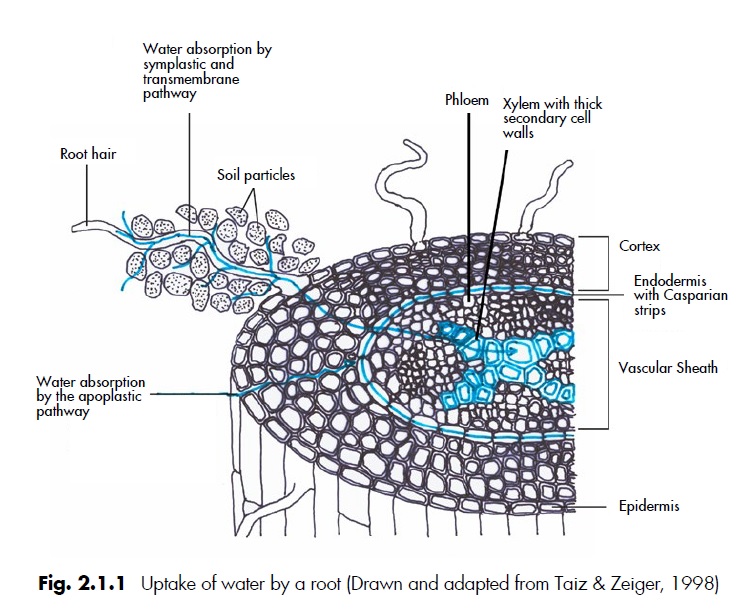
How does the plant regulate the flow of water? The vine, following a water stress, brings into play a whole series of changes that are driven by hormones, mostly produced by the roots, which we will see later. Among the different responses, there is the limitation of transpiration with the closure of the stomata, the stimulation of the root growth, the inhibition of the growth of the shoots, the production of proteins that prevent the cell membranes from drying out, etc.
In general, the grapevine has a great ability to resist drought, more than many other plants. It depends on its ability to form, if necessary, very long roots that are able to explore the soil and reach the water. This ability is essential in Mediterranean climates where summer is arid but, if the soil characteristics allows it, the roots can reach the deepest or most distant humid areas.
In a drought climate, however, there are other problems for plants. If part of the roots cannot find water, it may dry out and die. Also, imagine a straw where you suck too hard: the walls could crush, blocking any other transport. The great ability of the vine to resist water stresses also depends on its particular resistance to the contraction of the xylem vessels. However, this also happens because the vine is not a simple suction straw. Water does not enter only by physical forces, but, as mentioned, the plants control and regulate the flow. Moreover, compared to other plants, the vine has a not so thin xylem system. For this reason, the grapevine has a low hydraulic resistance: the "suction" is never too strong (except in really extreme conditions). For the same reason, the roots that remain without water do not die: there is a quickly redistribution to them of the available water. This phenomenon is called hydraulic conductivity of the roots.
However, in very extreme conditions, even the vines can have problem. If the aspiration become too intense, some air bubbles may form in the vessels (embolism) which interrupt the water column and hinder the transport.
Mineral salts
In addition to water, the roots also absorb mineral salts. They are essential for the nutrition of the vine, to support all its vital functions. Some, such as phosphorus and nitrogen, are indispensable for stimulating the growth and branching of the roots.
The grapevine has the reputation of being able to live in very poor soils, due to its ability to use the minimum presence of minerals and to "go and look for them". The roots, in fact, have a strong chemotropism: they develop in the direction of where they find the nutrients. For this reason, it is important that there is not too intense fertilization, especially in the first years of the vineyard, otherwise the roots would be induced to develop only in the fertilized areas.
The roots of the vine also have the ability to avoid, up to a certain point, intoxication due to excesses of some substances, such as sodium or metals (as aluminum or copper). Their transport is blocked in the roots and they are stored.
The absorption of mineral elements occurs mainly in the thinnest roots. Some, such as potassium, can migrate centimeters, nitrogen even over 10 cm. Some elements instead (such as boron, phosphorus and calcium) must be in the immediate vicinity of the root to be absorbed, a few millimeters away. In these cases, the help of the subtle hyphae of the mycorrhizae can be useful.
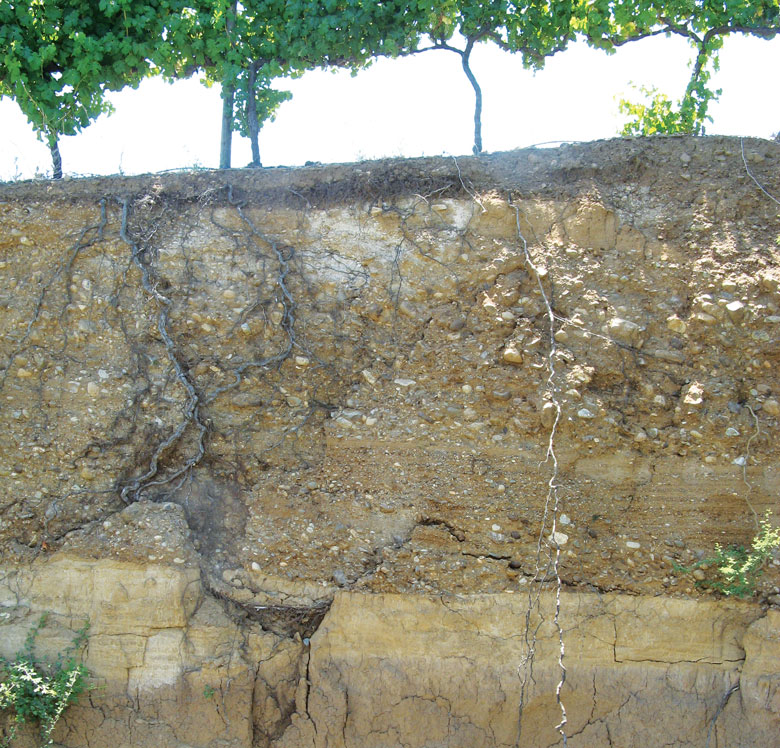
The absorption of the mineral elements of the soil, as well as for water, can take place both passively and actively. Mineral salts are absorbed in the form of cations and anions. As for water, the passage into the endodermis is only active, after neutralizing the charges. The ions are bound to transport molecules, which accompany them in the passage through cell membranes and then in the xylem flow.
The absorption of mineral salts is not continuous. Understanding their cycles is essential to understand the moments of real need for the vine. For example, one of the most important elements is nitrogen, the absorption of which has peaks and periods of stasis throughout the year. From awakening to the end of the rapid growth phase of the shoots, the plant seems to depend above all on the nitrogen accumulated the previous year. The vine begins to accumulate nitrogen again after the flowering until the veraison. From the veraison to the harvest, the absorption stops and the bunches are replenished above all by that accumulated up to that moment. After the harvest, the root absorption begins again: that is an important moment to restore stocks, in view of the future budding. The roots continue to accumulate nitrogen until the leaves fall.
For iron uptake, one of the most difficult times for the plant is that of the pre-flowering phase, , when it can show symptoms of deficiency. This happens because the iron is mainly absorbed by the tips of the thinnest roots which, at this stage, may still not be sufficient in the cooler climates.
However, there is a huge difference between the different rootstocks in the ability to absorb the different mineral elements from the soil solution, making them more or less sensitive to certain deficiency problems.
Storage of reserves
The vine not only accumulates nitrogen but also other reserves to support particularly difficult phases of its life. The stocks are made up of mineral salts, sugars and other substances (amino acids, citric acid, etc.). The sugars are produced by the photosynthesis and are stored in a storable form, the starch. When it is needed, some enzymes are activated that break down the starch into sugars (especially sucrose, as well as glucose and fructose). All the woody parts of the plant can act as storage sites for the reserves, but 80% of the starch and 70% of the nitrogen are in the roots, the rest in the trunk. Potassium, for example, is higher in the trunk.
The spring awakening of the vine is totally dependent on these reserves. It cannot be otherwise: at this stage, the leaves (that produce sugars with photosynthesis) are not yet there and the thinnest roots, the most absorbent ones, have not yet developed. The reserves remain important throughout the growth phase of the shoots. Then, they are partially restored, and consumed to support the growth of the bunches. Finally, they are strongly restored after the harvest, to guarantee the possibility for the plant to start a new cycle the following spring.
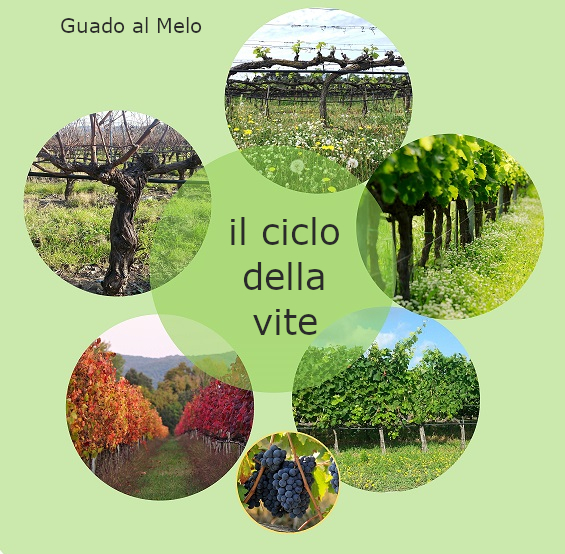
After the harvest, you might think that the vine will go into dormancy and therefore don't need much. On the contrary, it is working hard to accumulate stocks. Therefore, it is essential that the vine has the correct availability of nutrients, particularly nitrogen and potassium, and that it can continue to do photosynthesis as long as it can. Several studies have shown that vines that have accumulated low reserves in the fall will produce a limited number of shoots at the time of budding and will have poor shoot growth. The autumn accumulation can be altered by environmental stresses such as excessive drought, excess water, soil depletion, … This is why it is said that one vintage affect its production but also (partly) the next. Bad cultivation practices can also have a negative effect, such as too early pruning (done before the natural fall of the leaves), poor soil management, lack of fertilization, etc.
The production of hormones
Another very important function of the roots is the production of most of the hormones, chemical messengers that modulate the reaction of the vine to its environment. Let us therefore remember that any negative condition that prevents the growth and function of the roots, interferes with the synthesis of hormones, thus modifying the general performance of the plant.
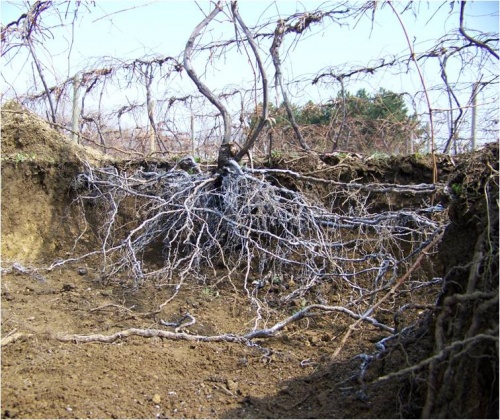
The main plant hormones are a group of molecules that are divided into 5 families: auxins, gibberellic acids or gibberellins, cytokinins, abscisic acids (ABA) and ethylene. The first three are mainly related to plant growth stimuli, the last two mainly to the aging and ripening of the fruit. ABA is among the most important for the response to water stress, with the regulation of the closure of the stomata. These hormones never act alone, but always in relation to one another. All the processes of growth, development and maturation of the vine are the result of the variable ratios of these hormones. That creates the possibility of a very fine and differentiated regulation.
The production of hormones depends on the stimuli of the external environment, both natural and those caused by the winemakers (pruning or topping, for example). The least expected aspect is that the most important stimuli do not come so much from the surface environment but often from that of the soil, that is, those that act on the roots: water stagnation, dryness, salinity, nutritional deficiencies, damage to roots due to toxicity phenomena for various substances, parasites, root cutting, etc.
It is not a hormone, but the roots of the vines are also the main area of production and accumulation of the citric acid. It is transported from here to the fruits, where it is oxidized to malic acid.
The influence of the agricultural practices
I have already talked about different practices in the course of the description of the roots, but here I add others that have a strong influence on the development of the roots.
A central moment, but often overlooked, is that of the birth of the vineyard. Numerous studies have shown that mistakes made in this phase, in relation to the root system, compromise the entire future life of the vineyard, both in the quality of production and in its longevity. The planting of the vineyard is fundamental: you have only one chance to do it well, afterwards it is impossible to change. First of all, of course, there is the choice of where to make the vineyard, in relation to what has been explained so far on the importance of the soil characteristics. Therefore, it is essential to know your soil well with well-done geological analyzes, in order to understand its viticultural potential, guide the choices of planting and of the future management. Another essential step is the preparation of the soil. This preparatory work affects the actual depth of the soil. It has been seen that an absent or shallow preparation in any case limits the root growth to the most superficial layers and there can never be sufficient root colonization.

Numerous studies have also shown that the way in which vines are planted also affects the root growth and its distribution throughout the life of the vineyard. If the digging system compacts the earth too much on the sides and bottom, it create like a small cage from which the roots will no longer be able to get out. The root reduction is also reflected in a weak growth of the rest of the plant. The depth of the excavation is also relevant: if shallow, the vine often dies from drying out; if too deep, downward root growth is inhibited. It is also better to make attention to too small holes, excessive cuts of the roots, to the distribution of roots in the digging hole, etc.
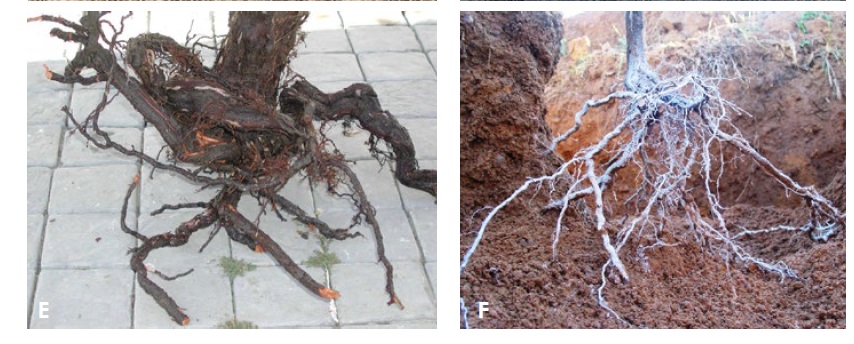
It has been seen that there is a decrease in the root mass for each vine with the increase in planting density (as we can expect). However, it has been seen that there is also an increase in the density of the roots, especially in the deeper profiles of the soil, with a better use of the available volume. However, by increasing the density too much, this positive effect stops, with a reduction in vigor that affect the quality of the grapes. Furthermore, with too high planting density, the soil resources can be consumed too quickly before the end of the growing season, especially in a dry and poor soil. Therefore, the choice of plant density should be determined by the potential of the soil to induce vegetative growth. Let us remember that it is a slight stress that gives better grapes. Too much stress produces poor grapes (and wine).
Once the plantation is done, it is important to keep the soil at its best to have optimal roots. Over time, the soil tends to compact and impoverish. For example, it has been seen that the frequent passage of the tractors in the vineyard can create a hard layer that reaches even 60 cm in depth.
The choice of the soil cultivation (how often, how deep and where) is linked to each specific situation. However, it has a destructive action on the roots of the worked layer. The utility of the root pruning is discussed. If done badly, too deep or too frequent, it has an inevitable limiting effect on the plant growth. If done lightly, it causes a slight stress on the vine which can increase grape quality. A light stress also seems to push the roots to colonize hitherto unexplored parts of the soil. In general, compared to the past, today most of winemakers avoid deep and continuous cultivation, which in any case affect too much the root system.
The roots that are most affected by the work of the winemaker are the superficial ones, also known as interception roots, which usually lie between 7,5 and 25 cm of soil. Numerous studies have shown how different soil management affects them in different ways. The most superficial roots remain in a soil managed with herbicides or mulch, while they are absent whit soil cultivation or with grassing (for a competitive effect). They can decrease in any case with the bare soil, because it is more subject to temperature fluctuations and excessive dryness. However, the different managements of the soil have consequences on the roots that can become advantages or disadvantages depending on the specific soil and climatic situation. If we do not know specifically our soil characteristics, we cannot choose the best management for our vineyards. For example, the grassing limits the vine's roots in the most superficial layers of the soil, but it can positively stimulate the exploration of the deeper ones. However, this is only an advantage if the soil is really deep, and if the layers are suitable for the roots.
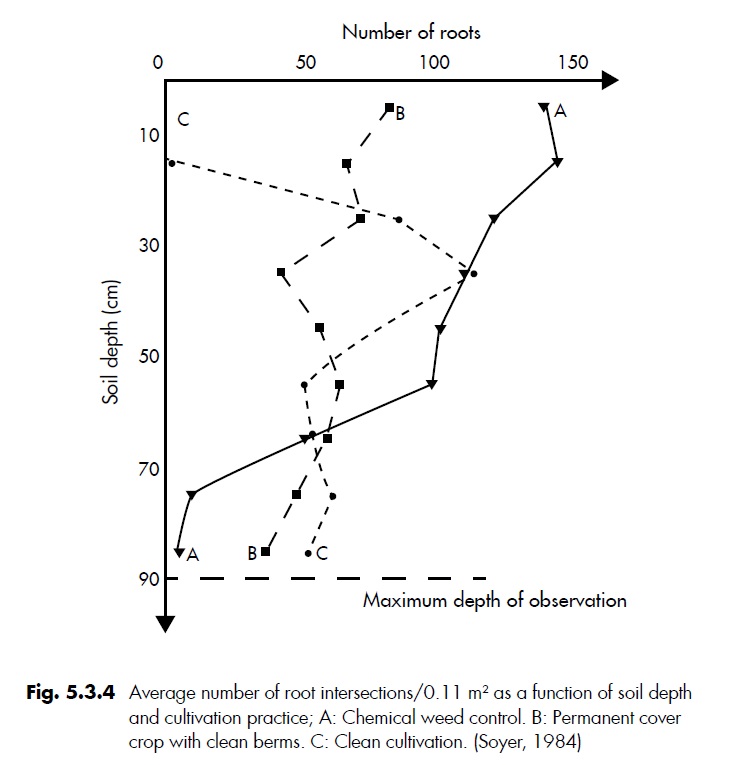
Also fertilization has an important effect on the root system. It has been found that the best effect on root growth comes from composting with vegetable waste, such as shredded shoots from pruning. These also create a layer of mulch which makes the soil temperature more stable and avoids excessive surface dryness, as well as a natural herbicide effect. Instead, the constant use of manure has been demonstrated to depress root growth. It appears to have an excessive salinizing effect on the soil and, in the long run, also causes nitrate poisoning. However, it has the faster effect on the growth of the shoots, significantly increasing their vigor. Furthermore, it should be remembered that the vine does not feed on organic material but on inorganic salts. Sufficient mineralization for vine's demands is not so obvious. So, the inorganic fertilization should not be neglected when necessary.
The research on irrigation is much more present in the countries of the new world than in the old. Since the roots are strongly guided by water in their growth, it has been seen that the implementation and management of the irrigation system has a very strong effect on their development. For example, irrigation plants that are focused and superficial, such as the drip one, tend to limit the development of roots enormously, especially if used in the first years of the vineyards. In this case, the roots concentrate in the small part of the soil where they find water and become dependent on irrigation forever, even when it would be not needed. The irrigation plants, if needed, should be realized in such a way as to favor optimal root development.
Also the other works in the vineyard have an effect on the roots, even if the studies are not numerous. For example, studies on the relationship between pruning and the root system have given quite conflicting results. It seems that the growth of the root system is more stimulated with medium pruning. Negative effects were found with too severe pruning or, vice versa, with too much buds. The defoliation seems to have benefits on root growth and the development of thin roots in particular. However, it must be well calibrated for the climatic situation. If done too early or too intensely, the density of the roots decreases.
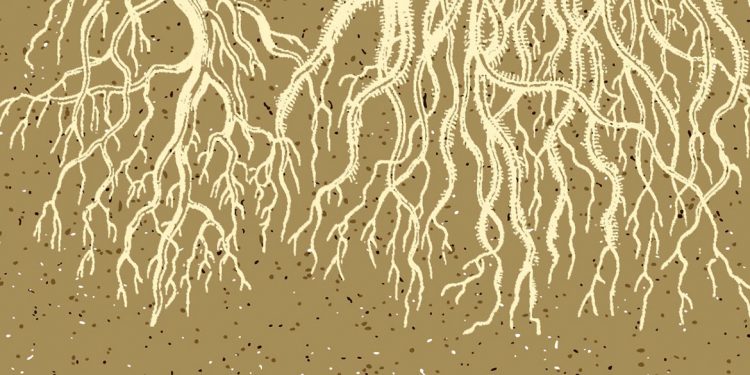
I hope you have understood the centrality of the roots and therefore of how their care should be privileged, starting from the creation of the vineyard. The vine is able to withstand environmental stresses, as well as producing high quality wines, only if it manages to develop an optimal root system. So, it is important to know all the aspects that influence the development and growth of roots in our vineyards: soil, climate, the influence of each agricultural practice, …
Winemakers who love their vineyards don't stop at the surface.
Roots, the underground life of the grapevine (1)
Normally we are used to considering a plant above all from what we see: branches, flowers and fruits. Yet, plants do not live like us only on the earth's surface. They occupy two very different environments at the same time: the overground and the underground.
Maybe you are surprised but for the plants, for the balance and interchange with one's environment, the under is almost more important than the top. Attilio (prof. Attilio Scienza) uses to say that the roots are the "brain" of the vines. Of course, they are completely different, but it is a useful metaphor to understand their very important function.
... Wanna live underground ... as a great legend, David Bowie, sang in a film of my adolescence (Labirinth).
However, it is not easy to study the roots in their underground world. It is not easy to reach them and subject them to tests, managing to keep them intact in all their subtlest ramifications or without upsetting local balances. For this reason, there are not many studies on them or, at least, not as many as they do on the aerial parts. So, there are still many open questions which will require further research, but we have learned something and here I am giving you a brief overview.
As we all know, the roots of the vine serve for the absorption of water and nutrients (the mineral salts of the soil). However, they are also essential for the balance and general well-being of the plant organism because they are mainly responsible of its ability to resist stress.
Animals can react to any environmental stress simply by moving around, as well as looking for food. Plants (as a rule) do not move and have therefore developed enormous adaptability and resistance to the stresses they can undergo during their sedentary life. Their reaction is essentially based on changing the way, speed and direction in which they grow. The signals are not transmitted by the electrical impulses of a neural network, as for animals, but are chemical. We are talking about hormones, that is substances that move around the plant, carrying with them a message to be transmitted. It is the roots that produce a large part of these hormones, which regulate the growth and physiological responses of the entire plant to the external environment.
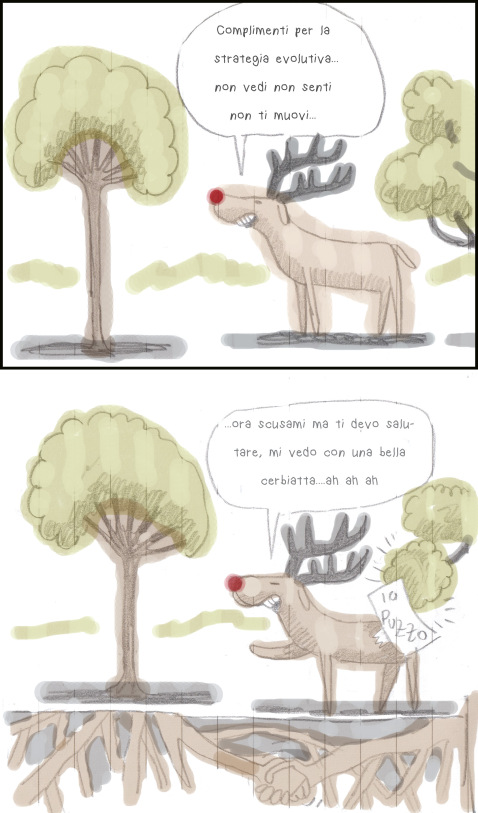
The natural environment of the vine is the Mediterranean one, which can also be very limiting. Since it is an arid or semi-arid climate, it has important limits related to the availability of water. In addition, frequently, it has low organic matter content in the soil. There may also be accumulations of limestone, salt, etc. The roots of the vine have evolved to survive in this difficult environment. They are able to respond well to water stress, to nutritional deficiencies, as well as to survive complex situations. This happens thanks to their ability to expand and renew themselves continuously, to store reserve substances, to enter into symbiosis with other inhabitants of the earth.
According to scholars, the knowledge and the optimal care of the root system is therefore one of the most important issues for the quality of wine. Furthermore, since the vine's response to stress lies in the roots, this knowledge can offer us great opportunities for optimizing viticulture in relation to climate change. So, let's see the reason for this importance and how it reflects on the work choices in the vineyard.
As this is a popular article, I have neglected the bibliographic references in the text. However, for those wishing to learn more, my main source is “Vine roots” by South African professors E. Archer and D. Saayman (2018, The Institute for Grape and Wine Sciences, Stellenbosch University), as well as several illustrations. This is an excellent overview. The University of Stellenbosch is considered to be the world's most qualified center on wine-growing soil studies.
Root structure
Without going into too much detail, I give you some general information.
A vine root is externally wrapped in a protective layer, a more or less thick epidermis which, in the larger and structural roots, is lignified (the cortex). The central part, wrapped in a second protective tissue (the endodermis) includes the most delicate tissues, including those with growth capacity (the pericycle) and which are responsible for transport in the plants, xylem and phloem. The xylem brings what comes from the roots to the whole plant: the water, the nutrients, the substances they produce (hormones and others). It is made of hollow tubes and the transport takes place by capillary flow, mainly driven by the leaf transpiration. The phloem mainly has a reverse path: it carries the products of photosynthesis from the leaves to the rest of the plant. It is made up of living cells, which actively move these products through them. These essential parts can be structured differently according to the different types of roots, depending on their role, the genetics of each rootstock, …
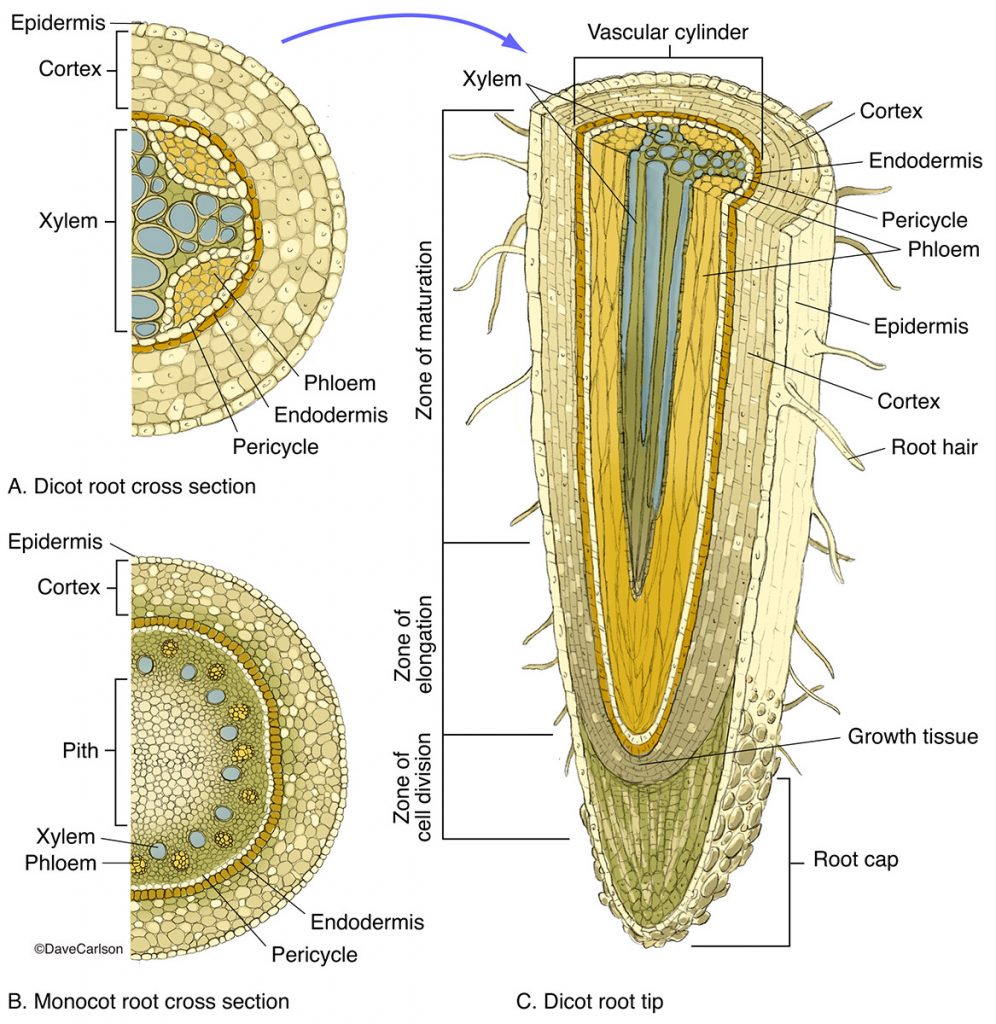
In fact, the are different types of roots. Those called primary, or even structural or tap root, are the thickest (6-10 mm). They are lignified and have the role of anchoring the plant to the ground. In addition, they are an important crossroads for the transport of nutrients and water. Finally, they are storage centers of the plant's reserves. The secondary roots are the thinnest ones (2-6mm). They stretch both laterally and in depth. The more superficial ones are very important especially for the absorption of mineral nutrients, which are mainly found in the upper layers of the soil. They are also useful for absorbing water, intercepting it before it flows away or goes down. The depthest are instead essential to resist water stress. Further branches start from these roots, the fibrous or absorbent roots. These live for just one season and are continually renewed. They are the most extreme offshoot of the plant, the main ones responsible for the absorption of nutrients and water. The contact surface with the soil is even more extended by the root hairs, as well as by the hyphae of the fungi in symbiosis with the roots.
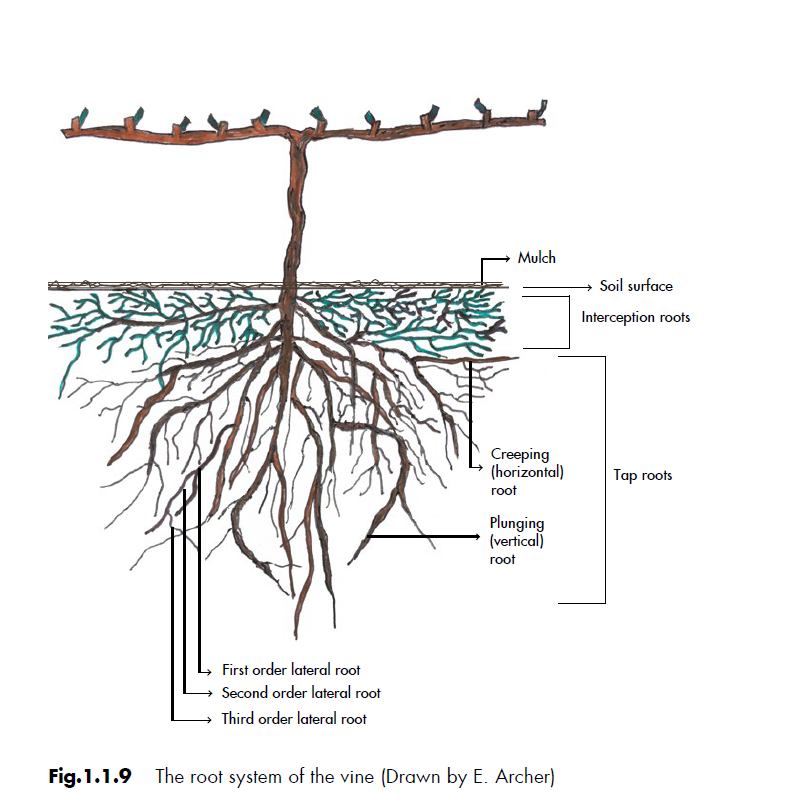
People often talk about the lenghts of the roots of the vine. However, the exchange capacity with the soil depends above all on their branching and, therefore, on the soil space they manage to occupy in density. The more the vine is in favorable soil conditions, the more it tends to branch and the more it optimizes its exchange capacity. It is possible to have 200 meters of root for every cubic meter of soil (about 1.0-1.5 kg of roots per cubic meter). Conversely, in the most unfavorable conditions, the roots are inhibited both in elongation and in branching. In this case, there is a wider mesh and the plant has less vigor. If the root density and distribution are very limited, an imbalance is created between the vegetative growth and the grape production which leads to poor grapes and wines of lower quality, especially in the driest years.

Thicker roots don't die easily. Instead, the finer roots die continuously and are replaced within a few weeks. This continuous restoration, together with the abrasion that the outermost tissue of the living roots undergoes, consistently enriches the soil with organic matter. Champagnol (1984) quantified this contribution up to 8 tons per hectare per year, for the entire life of the vineyard.
The relationship with mycorrhizae and other inhabitants of the rhizosphere
The roots are not isolated but "communicate" with their environment and the other inhabitants of the soil. They produce a mucus towards the outside, a gelatinous substance that has many functions, not all of which have been clarified, including that of limiting damage from abrasion by soil particles. This gel contains carbohydrates, amino acids, organic acids, enzymes and other compounds. Some of these substances are used as food by a wide range of organisms living in the soil. It has been seen that some also have a stimulating or vice versa blocking action on the growth of fungi, bacteria or nematodes. Furthermore, as already mentioned, the roots also annually produce a large mass of organic material, which is an ideal humus for various organisms of the rhizosphere.
One of the best known relationships that the vine establishes with other soil organisms is that with mycorrhizae. The name means "root fungus". They are in fact fungi that live in symbiosis with the roots of different plants, some outside and others also inside the root tissues. They are in symbiosis, that is, there is a reciprocal and not harmful exchange between the two organisms. Fungi mainly take the carbohydrates produced by the plant, while helping the vine in the absorption of water and nutrients from the soil. The mycorrhizae can consume up to 4-20% of the photosynthetic production of the plant. At first they have a negative effect, until an optimal balance is established.
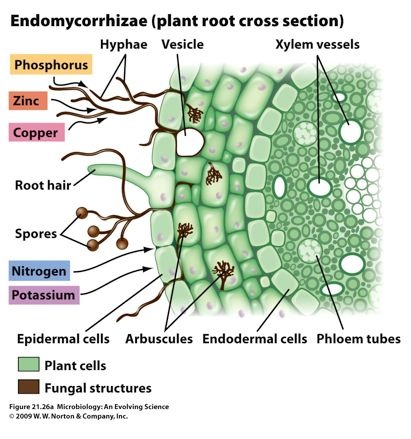
The fungus optimizes the absorption of the plant because its hyphae are long (20 mm hips) and much thinner than the roots, which are up to 500 or 1000 times thicker. They are therefore able to penetrate the pores between the soil particles where the roots cannot reach. Their presence increases the absorption capacity for the plant of water and of some mineral elements (such as phosphates or iron). They have also been seen that they can increase the plant resistance to salinity, to heavy metals such as copper, as well as the resistance to some diseases and other adversities. Their action is also hypothesized in the hormonal regulation of the vine, but these aspects are still being studied. However, the root colonization by these fungi does not always occur: it is conditioned by numerous factors, above all by the characteristics of the soil. Their presence, for example, changes with the pH: they decrease in more acidic soils. They are absent in very dry, saline or stagnant soils, with too high or, conversely, too low fertility.
On the basis of these studies, there are those who propose the artificial inoculation of mycorrhizae in the soils of the vineyards. According to experts, this practice is of little use. It has in fact been seen that if the soil conditions are adequate, the mycorrhizae colonize the vines very easily in a natural way. If the soil conditions are unfavorable, the inoculated mycorrhizae would die anyway. The presence of these fungi is therefore an intrinsic advantage of the best soils for viticulture. We can try to optimize it with adequate soil care and agroecological practices (see here), but only if the conditions are favorable to their presence.
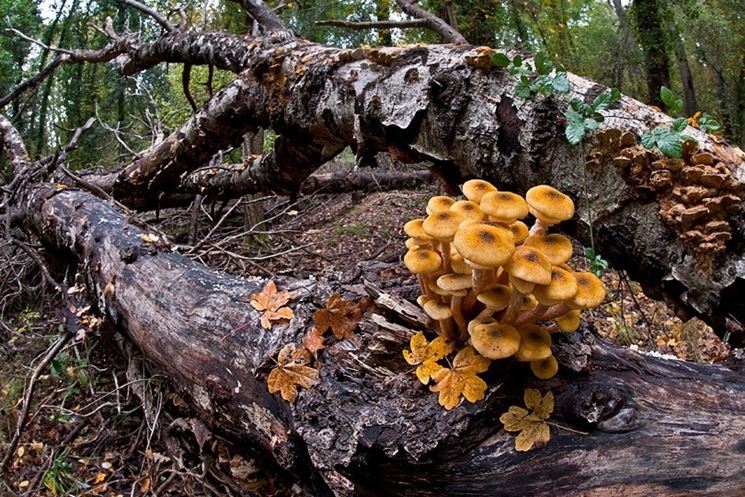
In the soil there are also organisms that can attack roots with dramatic effects. Some are better known, others less, again due to the intrinsic difficulty of studying the soil life. Beyond the well-known phylloxera (defeated in the past thanks to the use of resistant rootstocks), there are also other insects (beetles, nematodes, hemiptera larvae) which, directly or as virus vectors, can cause the weakening of the vines , sometimes until the plant dies. There are also numerous fungi that cause root rot, such as some species of the genera Phytophthora, Pythium, Armillaria, etc. It seems that even the infamous esca disease, which causes the death of many vines in the vineyards, is linked to soil fungi. Unfortunately, as experience has already taught us with the phylloxera, while it is relatively simple to study and combat a pathogen that attacks the aerial part of the vine, it becomes much more complicated if it happens in the soil. Our best answers, for now, come from the prevention of the spread of infections with controls in the nurseries, in the search for genetic resistance and in the care of the vineyard soil.
Where the roots develop
The winemakers often tell, poetically, that the roots descend into the depths of the earth even for tens of meters. This is partly true: the vine is one of the woody plants whose roots go deeper, but it is also true that there are hardly such deep soils (underneath there is the bedrock, impenetrable by the roots).
In any case, it has been seen that the roots tend to develop and occupy mainly the soil spaces where they find the best conditions in relation to water, temperature and air. On average, without other limitations, they prefer humid but not stagnant areas (where they would die of asphyxiation), warm and airy.
The direction of root growth is driven by two main forces: the search for water (hydrotropism) and mineral nutrients (chemotropism). The more superficial the aquifer is, the more the roots will stay on the surface. The root of the vine senses the depth at which it is located and changes its preferential direction of growth. It has been seen that the more superficial roots tend to grow downwards. Those deeper, if they can, prefer to expand laterally, because they do not like the deeper asphyxiating layers. The more deeper roots, if they can, tend to grow upward. Over time and the appropriate conditions are in place, all the roots tend to stabilize at the same optimal level, which can be variable but still relatively close to the surface: it is not too superficial (due to the risk of drying), it is not too deep (due to the risk of asphyxiation).
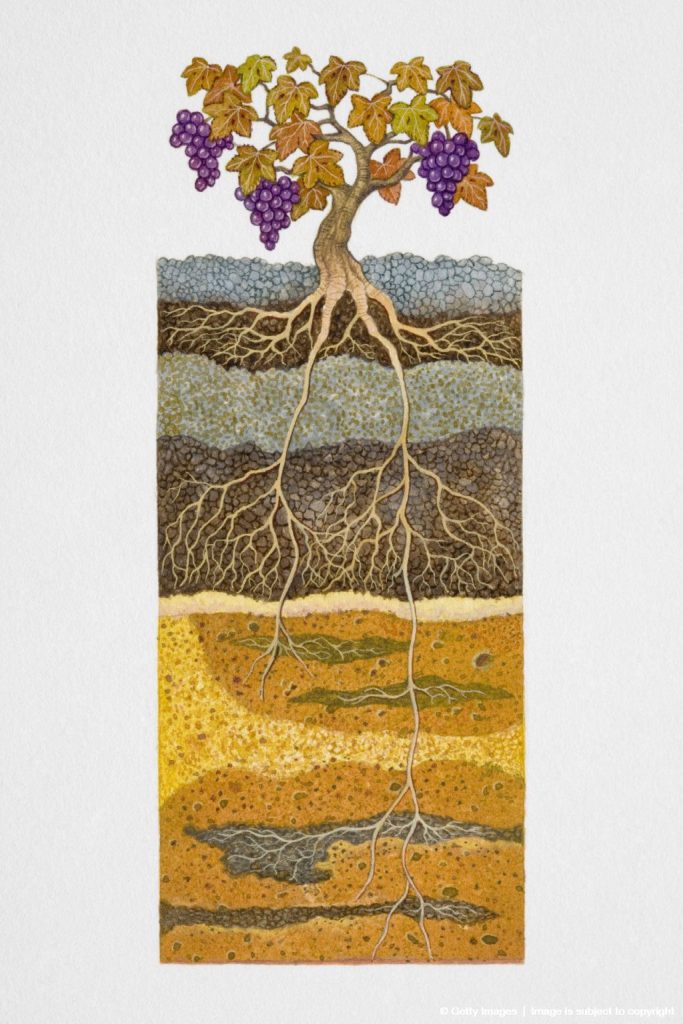
The element that most conditions the natural propensity for growth of the vine root is the physical structure of the soil. The differences in the soils considerably affect the ability to form an optimal root system, with important and proven effects on plant growth and on the characteristics of grapes and wine. Above all, they greatly affect the plant's need to have enough water available during growth times.
The depth of the soil is one of the most important elements in viticulture, because it guarantees the full development of the root system. The shallow soils are limiting: the root can expand little, it may not be able to reach groundwater or areas rich in minerals. The other key element is its softness. The more compact the soil, the more growth slows and the branching of the root is reduced, until it can become a real impenetrable barrier. The roots only advance if the pore size is adequate or if there are cracks or other pathways. For example, they grow well in spaces left by previous dead roots, in passages dug by the earthworms, etc. Instead, they block when they encounter hard layers, such as compact clayey areas or iron concretions. When they encounter an unfavorable area, they tend to branch out on and around it. The texture of the soil changes the penetration capacity and root density. The sandy soils on average determine a greater elongation but lower root density. A medium texture (silty), decreases the penetration but determines a greater density. The fine soils (clayey), on the other hand, reduce the penetration even more, while the density does not vary that much. Each of these characteristics may or may not be an advantage depending on your environment, the availability of water or the grapevines varieties. In a heterogeneous soil, the roots will be distributed differently depending on the nature of the layers, more or less favorable to root expansion.
The chemistry of the soil, on the other hand, seems a little less important, if not for a different sensitivity to the pH that the different rootstocks show. Below 5 is a bit limiting for everyone. The number of fine roots is positively influenced by the fertility of the soil, even if the vine has an accentuated chemotropism, so it can grow well even in poor soils.
Soil is the most decisive element. The genetics of the rootstock seems to affect mainly the root density. The rootstocks most resistant to drought are those that have the greatest density and distribution of roots. Those with smaller and thinner roots are instead the most exposed to the risk of drought.
Therefore, in a Mediterranean climate, with deep soil, the main mass of the roots is concentrated on average in the range between 25 and 55 cm in depth. This area can vary in relation to several factors. The climate, for example, is important: where it is cooler they tend to stay a little more on the surface, deeper where it is warmer.
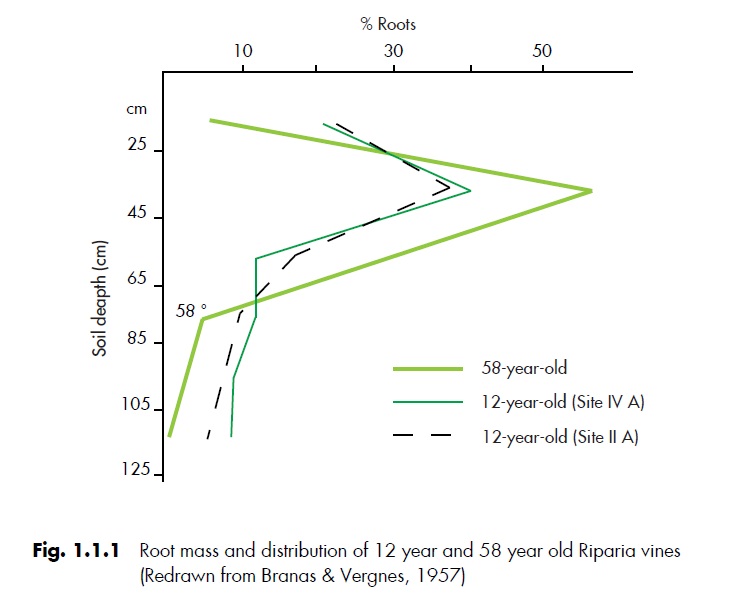
The most superficial part of the soil, above 25 cm, generally has fewer roots for several reasons. This is an area that can be too dry. In addition, in this band the work of the winemakers insist, which has a destructive effect. In addition, they also suffer competition with any cover vegetable species.
The deeper layers are also the least interested by the root mass. It is true that the roots can go down to great depths, if the soil is deep enough or leaves passage spaces. In this capacity lies the great resistance to water stress of the vine. However, we are talking about a minority part, because they are situations in any case at the limit as the roots are sensitive to the lack of air (under 10%, they die in a short time). There is, however, a different ability of rootstocks to resist radical asphyxiation.
To search for water, the roots preferably expand laterally, if they can, even for several meters. They also freely overlap with those of the neighboring vines, even if 80% is concentrated in the space of the single plant. The overlapping, however, has the effect of decreasing the vigor, as can be easily seen from the fact that the first grapevines of the row are always the most vigorous.
How the roots grow in the different stages of the plant's life and throughout the year
The roots grow more or less in relation to environmental conditions, the age of the plants and the activity of the canopy (the part of the leaves).
When the vine is young, the roots develop a lot and branch proportionally to the development of the canopy (if this is not pruned). This phase, which lasts about 7-8 years, is very important because it is the one of maximum elasticity. In this period the roots of the vines adapt to the local climate and soil conditions. After this stage, they will not be able to change their adaptation. In adulthood, the average elongation is increasingly scarce: the size of the root tends to stabilize, as does the vigor of the canopy. During the aging phase, the vine reaches its maximum complexity, but the plants can also suffer from the damage caused over the years by parasites and other adversities. The studies shown in the diagram above, which compared adult (12 years) and very old (50 years) vines, show that the old vine has a larger root mass, but is located more or less in the same area as that adult. However, the deeper roots are reduced. It seems that the strength of an old vine can be compromised more by damage to the trunk and the aerial part than to the roots themselves, which are generally very resistant.
Every year, more or less rapidly depending on the age, the roots grow and, above all, renew the thinner and more absorbent parts. This growth does not happen all the time, but at particular moments. It has been seen that root growth occurs when the plant has an excellent availability of the products of photosynthesis. This growth does not start immediately with budding, but after a few weeks. For colder climates, it can start even 10 weeks later. After that, there are peaks and slowdowns that vary with the climate. Broadly speaking, two main behaviors have been identified:
- in the warmer regions, in the Mediterranean ones and especially in the southern hemisphere, there are two peaks, one during flowering, when the growth of buds slows down, and a second smaller after the harvest.
- in regions with a more moderate climate, growth is slower and more continuous and reaches a peak in late summer or at harvest. If the leaves remain active after the harvest, the growth continues for several weeks.
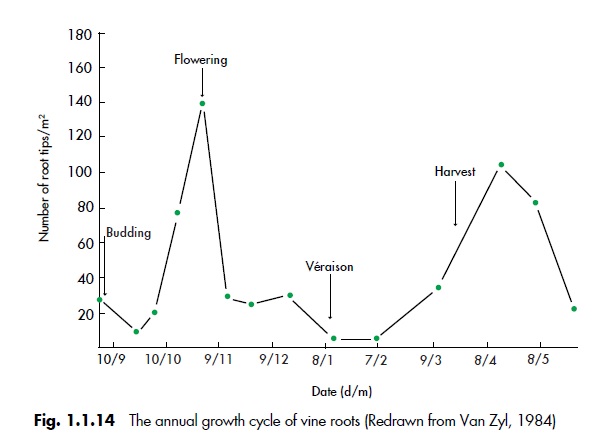
In autumn and especially in winter, many roots die, especially the thinner ones, due to frost, rot, damage caused by various parasites, etc. Furthermore, as the water table rises, part of the root system can go under water and die of asphyxiation. Immersion can only be endured by the largest and permanent roots, when they are in the dormancy phase and all processes are limited. Many new thin and absorbent roots will be reformed over the next spring, as already explained.
Continued ...
We present our vineyards 1: Campo Bianco
On the occasion of the release of the new 2019 vintage of Criseo Bolgheri DOC Bianco, here is a short video where Michele and I present the vineyard where it is born, Campo Bianco.
As good as we are at winemakers :-), we are by no means big players: get over it and I hope you like the content.
News for our wine museum
Thanks so much to the great prof. Roberto Miravalle, who donated this beautiful bottler from the early twentieth century to our wine museum.
Our wine museum is open from Monday to Saturday. The summer opening hours, from June 14th, is: 10.00-13.00 16.00-20.00, Saturday afternoon 15.00-18.00 h.

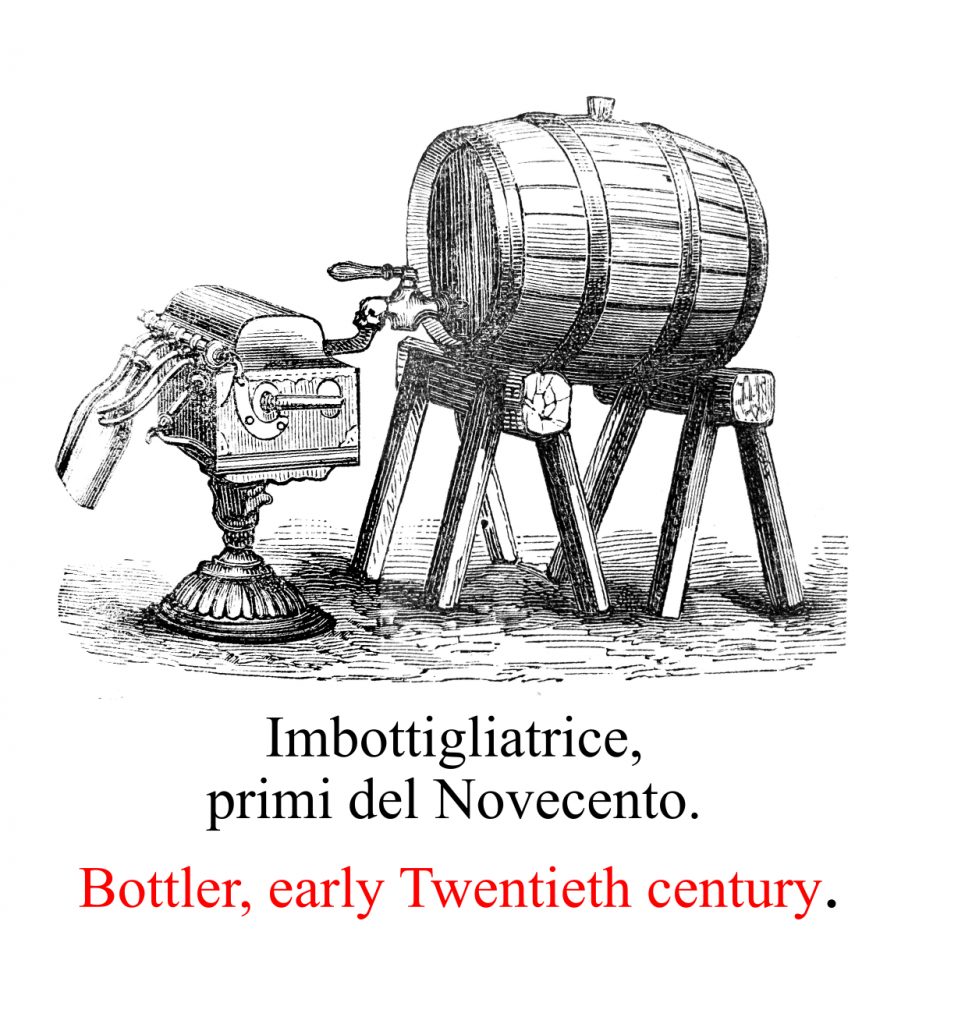
Great news about Atis 2017: more and more personality and sustainability
We kept this surprise so far, but we have been working on it for years. The novelty is that we have made a change in the composition of our Bolgheri DOC Superiore, Atis. The base remains the same, as always, with Cabernet sauvignon (about 80%) and a little of Cabernet franc (about 10%). However, we have replaced the Merlot (the last 10%) with the Italian variety Rebo. Don't worry: it's not a drastic change, as you will see. The advantage is that it leads us to an Atis with an even more pronounced and harmonious personality, as well as more sustainable.
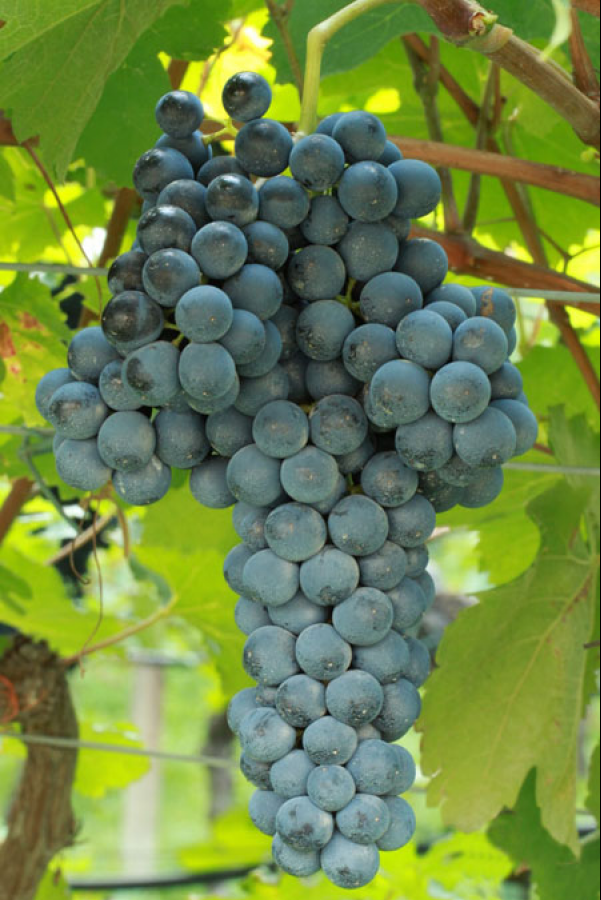
The main reason of this choice is the climate change. Rebo filled us with great satisfaction in its relationship with our territory for years during our constant and multiple experiments. Conversely, Merlot left us a little perplexed, especially in the recent years. The climate change made it increasingly difficult for us to find the perfect moment of its harvest for the production of the Bolgheri Superiore wine. This moment was carried forward more and more to compensate for an imbalance between the maturation of sugars and acidity with the polyphenolic one.
The change is not so drastic also because the Rebo is a variety resulting from the crossbred between Merlot and the Italian variety Teroldego. It was born in a program of crossbreds to improve the quality and resistance of the varieties, that began in the 1920s at the research center of San Michele all’Adige. The name derives from its creator, the geneticist and agronomist Rebo Rigotti.

What are the advantages of Rebo?
It is an optimal variety for sustainability because it has very good resistance to grapevine diseases and weather adversities. It has excellent characteristics of both quality and production regularity. Its maturation is later than Merlot, which makes it much more suitable for optimal ripening in our climatic conditions. However, it maintains the original aromas and taste of Merlot in the wine, but with more freshness. This contribute to much more balance to an important wine, which is born in a Mediterranean area like ours.
Taste it and tell us what you think.
Below is the wine card and the awards it has had so far. Here you can download the data sheet in PDF version.
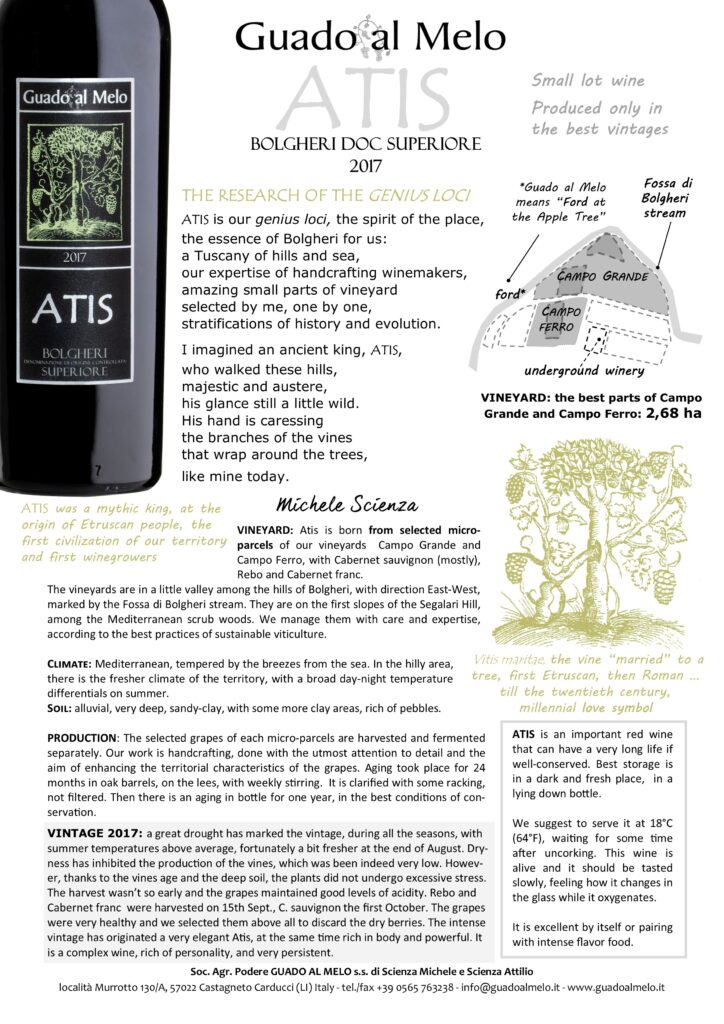
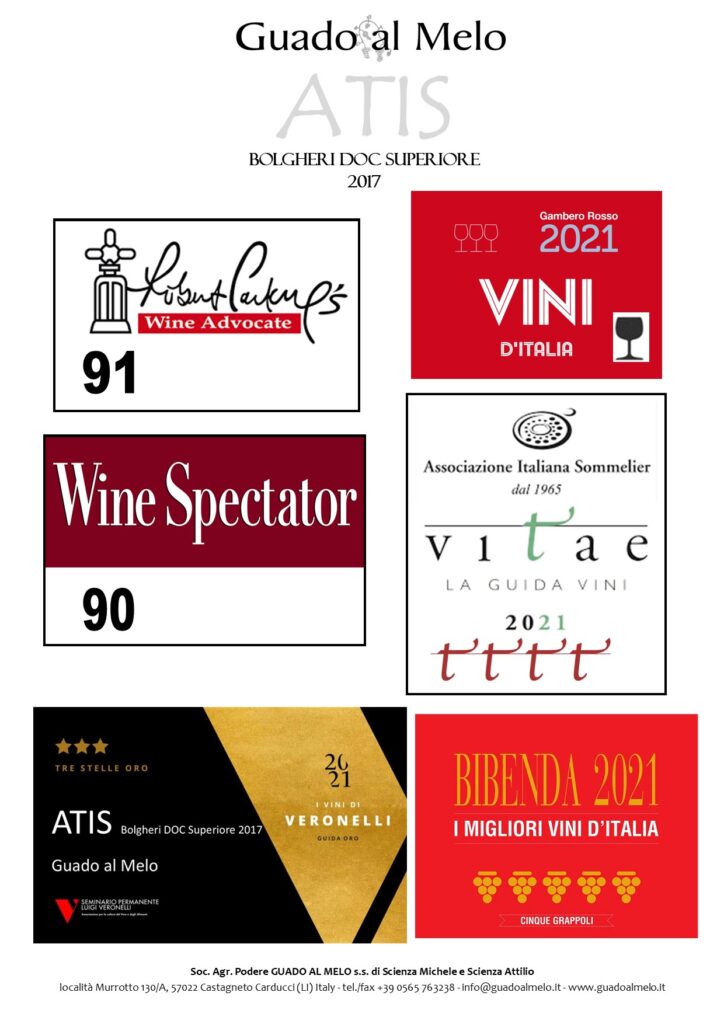
Let's defend the real wine: whether it is watered down, de-alcoholised, manipulated ... please don't call it wine!
Alarming news has begun to circulate in the press and on the web that Europe can admit the watering down of wine. Then, there are those who wrote that it is fake news.
However, there seems certainly that there is a discussion in Brussels about the regulation of partially or completely de-alcoholised wines, whether they are obtained with the addition of water or with other systems.
Behind that, there is the expanding marketplace of wines with low alcohol content (or totally free of alcohol). All revolves around the crucial question: are these drinks wine? Or rather, will they be able to boast this important indication on the label? Here everything is at stake: if they will be able to write wine on the label, it will be decisive for the future market of these products, but … I hope not.
On the one hand, there are politicians from northern Europe, with a prohibitionist approach, who want to limit the consumption of alcohol, pushing towards de-alcoholic products. One wonders, rhetorically, why the main target of these politicians is always wine, produced in the Mediterranean countries and central Europe, and not the huge multinationals of spirits (with a lot of money and a lot of ability to advertise, as well as than to impose themselves politically). In fact, I think that people that abuse of alchool don't exceed with Bolgheri or Barolo or Lambrusco. I think it happens more frequently with vodka, beer, other spirits or cocktails. However, Europe seems pushing in this direction, using terrorism techniques on our health. They start from even partially correct considerations, which are however communicated in an extreme way, in an increasingly paternalistic vision of power.
On the other hand, there are those who see enormous opportunities for the sale of de-alcoholised wines in Muslim countries, where the consumption of alcohol is formally prohibited (even if it is often used privately), or in markets where wine still fails to enter.
Politics will therefore decide what to write on the label, but is de-alcoholised wine real wine?
I think not. Wine is a millenary drink, that is the result of the transformation of grapes, of a land and its culture, of a meticulous and respectful work in the vineyard and in the cellar. Those who believe in artisanal wine, in its inseparable link with the territory and nature, doens't see kinship with these products. Call them what you like, but not wine.
Michele remembers in the 1980s, when he was still studying at the agricultural institute of San Michele, a similar story with regard to "wine coolers". At the time, always with the idea of capturing consumers from countries not accustomed to wine or the younger generations, the production of wines with added fruit juices (like ready-made cocktails), called "wine cooler", seemed to be tempting. What happend to them? Forgotten and without success (thankfully). I don't demonize them, but all of this has little to do with real wine. These are attempts to sell low-quality wines, which are otherwise difficult to sell, manipulating them in the most diverse ways. They are, in fact, different drinks: let's not ruin the real wine by confusing it with them.
Some, in Italy, positively judge these de-alcoholization techniques, with the aim of lowering the gradations of wines which are always higher. I state that I do not share too generalized discourses on what is pleasant or not in wine taking into consideration only a single element. There are 12-13 degree wines that are unbalanced and heavy. There are wines at 14 degrees, or even more, which are perfectly balanced, with a lot of complexity and also freshness.
The climate change certainly plays an important role in this regard. However, remember that the alcoholic strengths began to rise well before, for other reasons as well. A good part of the world of wine has been pushing in this direction for thirty years already, with determined and well-targeted choices of winegrowing and winemaking.
Is it really necessary to use the de-alcoholization to return to having wines that are more drinkable, less heavy and less alcoholic?
Certainly not. Let's not forget that wine is born first of all in the vineyard (and it's not just a cliché). Let's go back, for example, to choosing the most suitable varieties for the territory and not for the market. Let's go back to rethinking the exposure of the vineyards, the training systems, the planting density, the thinning, etc. Whether it is to change wine fashions or to combat climate change, the good viticulture, that is, the skilful care of the vineyard, is the best ways towards more balanced and pleasant wines. These chooses are much more sustainable, as well as able to preserve our culture of wine and the territory.
Wine tours and tasting in April and May 2021
Given the recent government regulations due the virus Covid, in May we can carry out tastings and guided tours with some limitations.
Tastings can only be done outdoors. Given the structure of our winery:
1. Visits and tastings will not be possible in case of rain or strong wind.
2. They can only be done in good weather, but we still have a limited number of places. Therefore, the reservation becomes mandatory in any case.
3. Each reservation can be definitively confirmed only in the previous 2-3 days before the visit, based on the weather forecast.
I also remember that the usual safety rules on distancing remain in force, both during the visit and tasting, except in the case of relatives or cohabitants. There is also the obligation to wear a face mask at all the time of your stay in our winery, except when you are tasting.
We are sorry for these inconveniences. From June, we should be able to return to do the tastings in the cellar, with the appropriate precautions.
Wine Spectator's reviews of our wines
Here there are the reviews of Wine Spectator of our wines. We are very pleased due to the very good ratings and their tempting tasting notes. Read below.

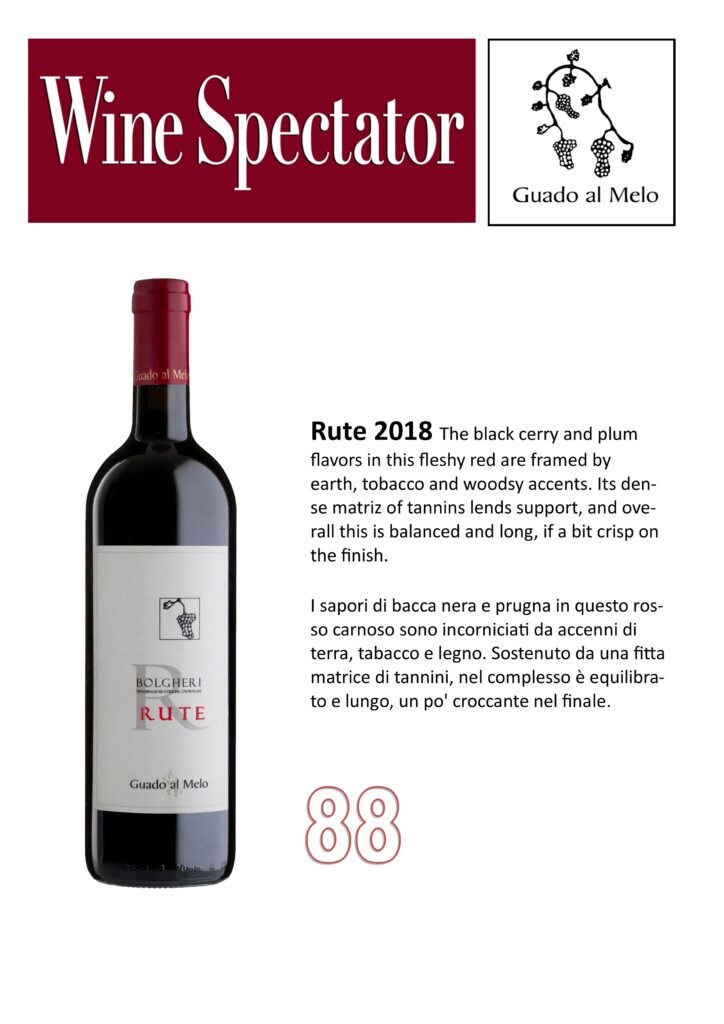
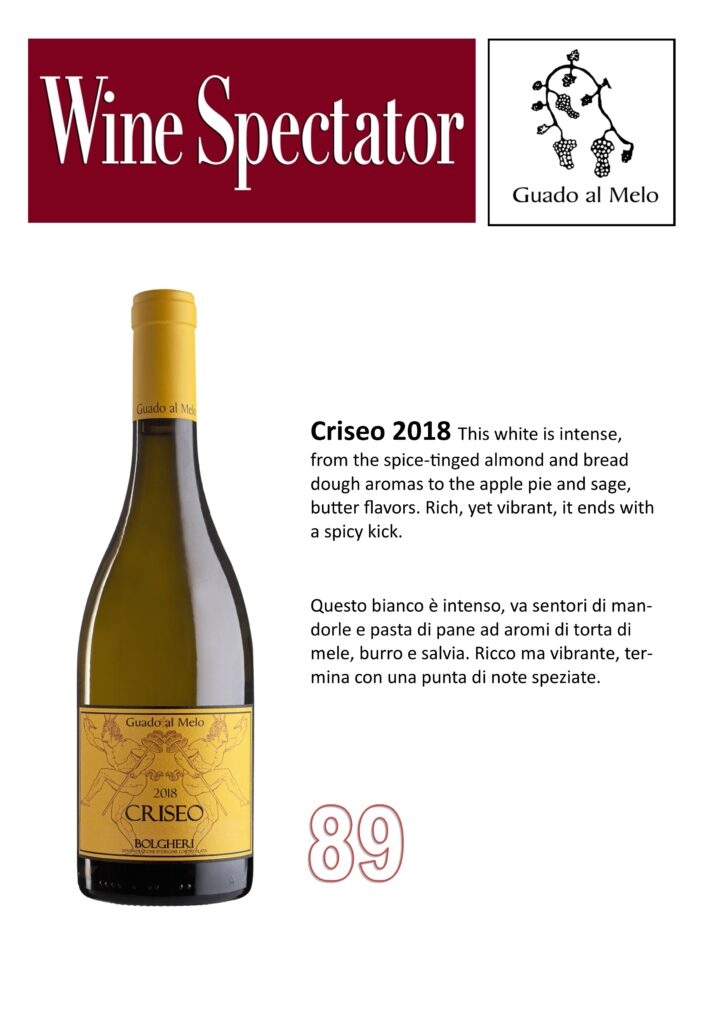

The vine and the spring frost
In these days, there is a lot of concern in the world of wine about damage from spring frost. Imagine the anger and despair of those who see their gems die overnight.
We are in an area (the Mediterranean one) where frosts are more than rare, but you have surely seen the (poetic) photos of fires lit in the vineyards of central Europe, especially in France or Switzerland, to combat damage to the vineyard.
Why does this happen? In this season, a phenomenon of thermal inversion can be created in the lower layers of the atmosphere. At night, the earth releases heat to the air and, at ground level, temperatures can drop even dramatically.
In the areas where the risk of spring frost is very rare, such as the Mediterranean ones, when these events happen, it becomes difficult to take cover.
This phenomenon are frequent in the territories with a continental climate, especially those more northern. In particular, the risk in these areas is greatest in the valley floor and in the plains. The wine producing was (and is) too important and the vineyards have been planted everywhere, even in places that are not exactly perfect for these plants. The winemakers of these territories, who have been fighting against these adversities for thousands of years, have developed useful practices to contain the damage caused by spring frost. Let's see what they are. However today, sometimes, other choices prevail, useful for other purposes, but which expose the vines more to the risk of frost.
Firstly, they used traditionally varieties characterized by a late bud break. In addition, the winegrowers pruned the vines as late as possible. In fact, the delay in pruning can set back the moment of awakening of the plant. Even the agro-ecological choices can limit the damage caused by frost, such as the presence of grass under the vines or trees and hedges among the vineyards (very common in the past).
Above all, the high-vine training systems were used traditionally in these territories. In fact, during the spring frost, the coldest layers of air are those closest to the ground, while the temperature rises moving away from it. Going from 0 to 2 meters in height, there can be variations of even 5-10 Celsius degrees. The tall vine training systems (such as the traditional "vine married to a tree", the Casarsa, the Raggi, the Belussi, the pergola, etc.) are perfect systems to avoid, or at least contain, this problem. Today, if you notice it, the lit torches are always in low vineyards.
Fires were lit with sheaves of straw or shoots already in the ancient Roman times, just as today various types of stoves or anti-freeze candles are lit. Another modern system is the anti-frost irrigation, that is, water is sprayed on the vines (as long as there is good water availability). The benefit comes from the fact that the water has a higher temperature than the atmospheric one. In addition, part or all of water can freeze. The transition of the physical state of water from liquid to solid is a phenomenon that releases heat. Finally, even more expensive, there is the system of putting tall fans in the vineyards, which push the warmer air downwards. I believe that the helicopters, that are sometimes seen, has only a "spectacularity" function, because they pass by day, while the phenomenon of thermal inversion is nocturnal.
However, all these systems are not sustainable, because they consume resources and emit high levels of Co2 into the atmosphere. They can be useful if used occasionally. If the use of them were to become frequent enough, perhaps something is wrong about the location of the vineyard, the choices of the training systems, the varieties, …
Sustainability comes first of all from excellent knowledge of the best viticultural practices for the type of territory. However, there is always a certain degree of unpredictability in the work of the winemaker. As capable as we may be, we are always subjected to the vagaries of the weather and luck.
L'Airone 2019: 91 point from Wine Enthusiast
Our little egret (Airone), with my beloved Vermentino, gives a beating of wing at the end: it collects 91 points from Kerin O’Keefe, on Wine Enthusiast, a score that is usually achieved by wines of a much higher price range.
Our little-big Airone, however, does not flatter itself, it only confirms how in Bolgheri fine white wines can be born, even among the youngest ones. Have you tasted it? Did you like it? Tell me your impressions. I really love its delicately soft lightness and its iridescent scents.
Vermentino, as we know, loves the sea: it is the white grape of the Tyrrhenian coasts par excellence. It is a variety that makes happy the winegrowers in the vineyard (it adapts to even very difficult conditions, giving us beautiful clusters of large sun-colored berries, often slightly pink). However, it tests the mastery of the winemaker in the cellar (already finding the perfect moment of the harvest requires a lot of attention). However, if we approach him with love and respect, he give us a wine with a very marked personality.
I wrote "a beating of wing at the end" because there are few bottles by now in the cellar. There will be soon the new 2020 vintage. It is the usual problem of managing reviews for the young wines. At the time of tasting by the journalists, the new vintage is not ready. By the time the tastings are concluded and the results are published, the wine is almost finished.
The great wine boom in Bolgheri: the nineteenth and early twentieth centuries
“I have been in Maremma for a long time. There is not even a wolf anymore. Where those poor animals came in droves in the evening, howling, now yellow vines bloom and the boys play the mandolin. The old secular oaks were cut down, years have passed, and everywhere there are olive trees, wheat and vegetable gardens. You can see the dark green of the woods only in the high hills; and some old boar, bored by the world, retires there … No more buffaloes. It's a sin. Something is missing.
But the wine is a lot and it is very good!”.
This is a letter that the poet Giosuè Carducci wrote on October 26 1894, telling about one of his trips to Castagneto and Bolgheri, the lands of his childhood. In these few lines, he makes a perfect synthesis of the change in the territory that took place during the nineteenth century: from a wild area, it has become an agricultural one, where a very good wine is produced. Are you ready to find out it?

Windy vineyards, Carducci and Barbaric Odes: as Paolo Conte sings (in Italian and Spanish) in "Cuanta Passion":
"… Le vigne stanno immobili / nel vento forsennato / Il luogo sembra arido / e a gerbido lasciato / Ma il vino spara fulmini / e barbariche orazioni / che fan sentire il gusto / delle alte perfezioni …. (The vines stand still / in the frenzied wind / The place seems arid / and uncultivated / But the wine shoots lightning / and barbaric prayers / that make you feel the taste / of high perfections ...)
Cuanta pasiòn en la vida / Cuanta pasiòn / Es una historia infinita / Cuanta pasiòn / Una illusiòn temeraria / Un indiscreto final / Ay, que vision pasionaria / Trascendental! … (How much passion in life / How much passion / It is an infinite story / How much passion / A reckless illusion / An indiscreet ending / Oh, what a passionate vision / Transcendental!)
(Paolo Conte, "Cuanta Passion")
We are continuing our journey in the lesser known history of the Bolgheri DOC, our small Tuscan wine appellation, located in the municipality of Castagneto Carducci (Carducci, in honor of the poet, of course). We have already seen how here, in Etruscan land, the viticulture was born in an autochthonous way, starting from the wild vines of the woods made domestic (here). We learned about the traditional Italian training form of the vine "married" to the tree, born in the Etruscan-Roman culture and never disappeared until about the mid-twentieth century (here and here). We have seen how, especially in Roman times, ours was a flourishing agricultural territory, wine producer, at the center of a network of European trades (here and here). We have seen how a difficult phase followed (here), when the Maremma becoming harsh and wild, but the wine resisted, even if only for subsistence.
The nineteenth century was the century of the rebirth of our area. The territory returned to having a flourishing agriculture, completing the transformation slowly begun in the previous centuries. Above all, the wine production increased, as I'm going to tell you.
The transformation took place thanks to the reclamation works begun at the end of the eighteenth century. The Maremma, from a forgotten and exploited land, had now become the “great sick” to be healed in the Grand Duchy of Tuscany, thanks to the new sensitivity born in the Century of Enlightenment. The definition of Maremma at the time was not strictly geographical, but socio-economic. It included all those territories of Tuscany characterized by "little agriculture, massive extension of woods and marshes, scarce population" (Carlo Martelli, 1846). Our part of Maremma, called at the time "Pisana" (of Pisa; the current province of Livorno will be established in 1925) was the first to complete the transformation and move up a category.
The disparity between the different parts of Tuscany was enormous and the common thought about Maremma was divided between compassion and contempt. For example, the French agronomist Drédéric Lullin de Châteauvieux, who visited our lands in 1834, wrote that he felt like "sur la frontière du désert au de-la toute culture cesse" ("on the frontier of the desert beyond which the culture ends”). Beyon this border, extreme poverty, malaria and bandits continued to reign.
If this was the opinion of the time, you will understand why leaving the category of Maremma was seen as a victory, as evidenced by the politician Alfredo Beccarini in 1873. He wrote that the Maremma begins under San Vincenzo, as the northernmost territories were already reclaimed and occupied by farmers, to the point now "to despise the ancient and defamed name".
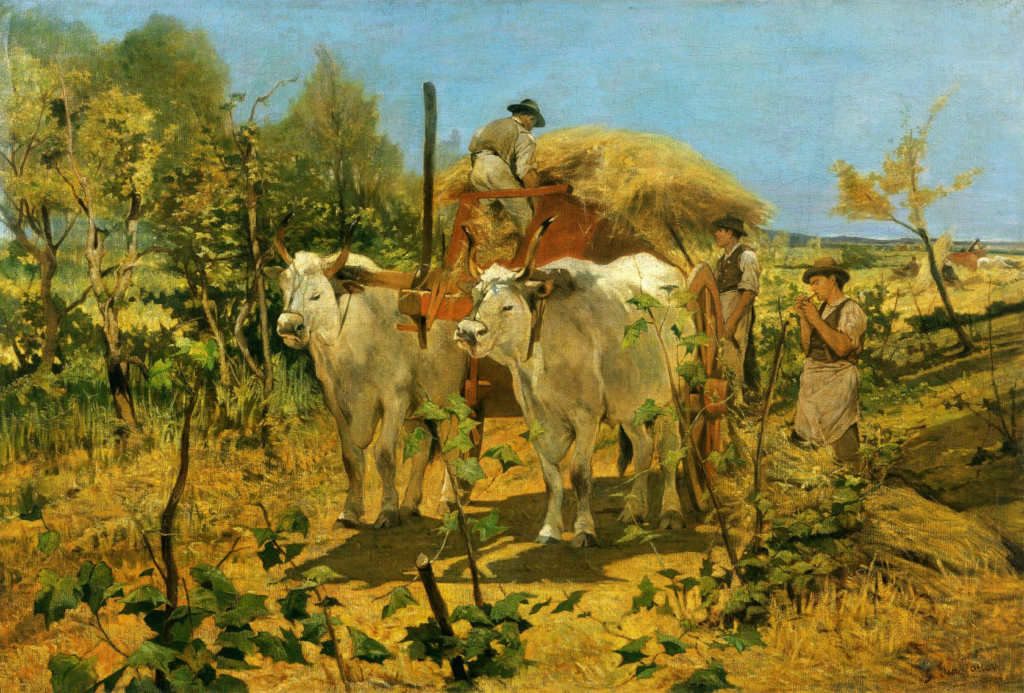
The exodus from the hills
Before telling about wine, let's see how the landscape of Bolgheri territory has transformed in general in this period. Between the nineteenth and early twentieth centuries, the actual structure begins to take shape, with the definitive shift of the focal point from the hills to the coastal flat.
The agricultural development therefore started from the hills and the foothill areas. The deforestation then extended to the plain area around Bolgheri. Then, it advanced in the rest of the plain, which began to be populated, in parallel with the water regulation works, which eliminated the marshy areas.
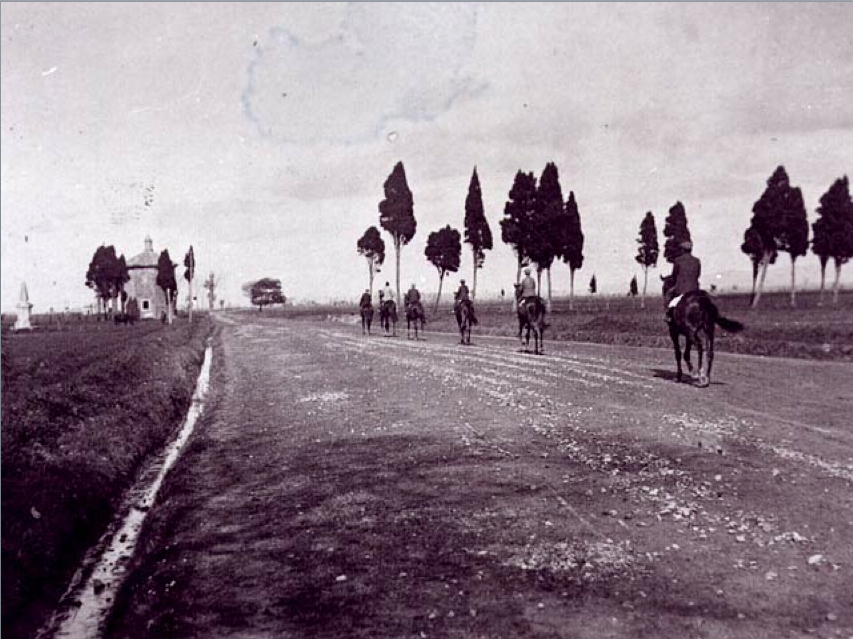
The occupation of the plain also required the creation of a better road system. At the beginning of the nineteenth century, the via Aurelia was rebuilt, the ancient Roman consular road, by now plundered by stones and reduced to a path (or a little more). The new road was realized some meters towards the sea than the original route. The famous boulevard of Bolgheri, created in the late eighteenth century, was planted in 1831 with poplars. These trees were replanted several times because they were constantly damaged by the (last) buffaloes. In 1834, they began to be replaced with the cypresses, not so good for the buffaloes. At the time of child Carducci, who then made the cypress avenue famous with his nostalgic ode "Before San Guido", the trees arrived halfway along the route. The tree-lined avenue was completed till Bolgheri after the poet's death (1907), to pay homage to him and his famous ode.
The rall straigh cypresses in double row
troop from San Guido down to Bolgheri;
like giant striplings at a race they go
Bounding to meet and gaze once more me.
Straightway they knew me: "Welcome back again,"
Bending their heads to me they whispering say,
"Why dost thou not alight? Why not remain?
The evening's coll, familiar the way,
"Oh, sit thee down beneath our odorous shade,
Where breathes the North-West wind from off the sea.
...
I have found the traslation here.
...
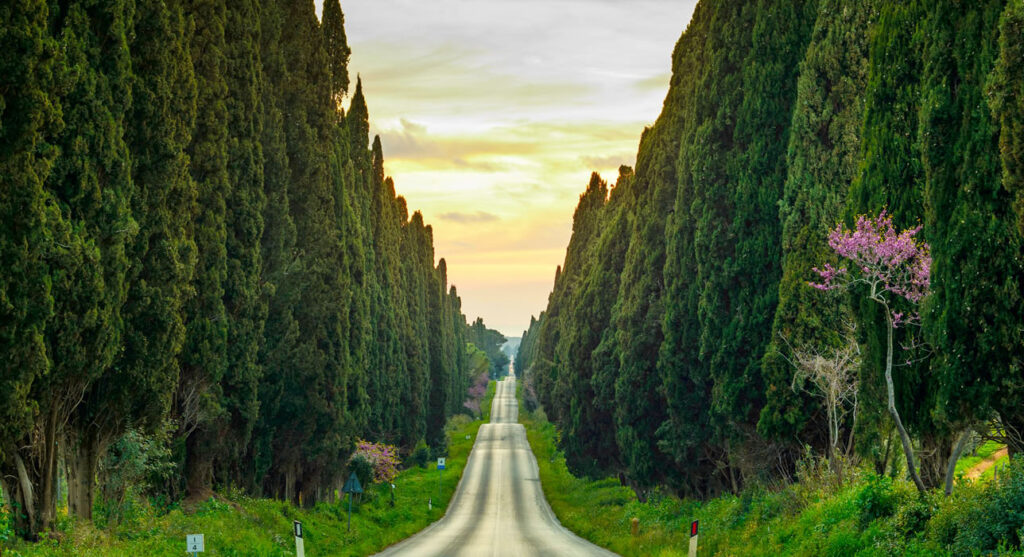
The definitive shift of the population towards the plain depended by the construction of the railway line, in 1863. The station was built next to a farm belonging to the della Gherardesca noble family. Around it will develop what is now the most populous village of the municipality, Donoratico. It takes its name from the ancient hilltop fortress (that I have already mentioned), abandoned for centuries.
While the foothills and the plain were being deforested, the forest returned to regain most of the hills, especially due to the abandonment of the pastures. In general, the colonization of the plain will have the effect of a real exodus of the population, who will increasingly abandon the hills to move towards the plain. The great extension of the hilly woods, that we can still see today derives, for the most part, from natural reforestation phenomena, which occurred in the last hundred / one hundred and fifty years.
The wood widened but at the same time it ended its ancestral relationship with the local people. For millennia, it had been at the center of a large part of the local economy and life, with the harvesting of chestnuts and much more. It was populated by charcoal burners, woodcutters, gatherers, pigs that grazed in the wild. Today it is a wild and empty forest, if not for the shooting of hunters and companies specializing in cutting wood.
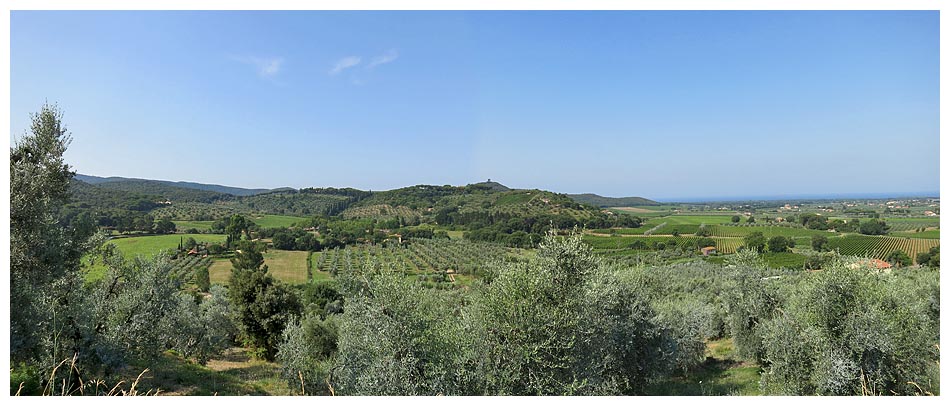
The deforestation of the plain caused deleterious effects on the environment. Thus, in 1837, the planting of the coastal pine forest began, above all to act as a barrier to the wind and sand, to protect the cultivated fields. The railway made transport by sea disappear and thus permanently closed the Customs offices, located in the ancient fort on the beach (on the far right in the photo below). Close to it, in the 20s of the twentieth century, the first small group of villas was born in what would later become the seaside resort of Marina di Castagneto.
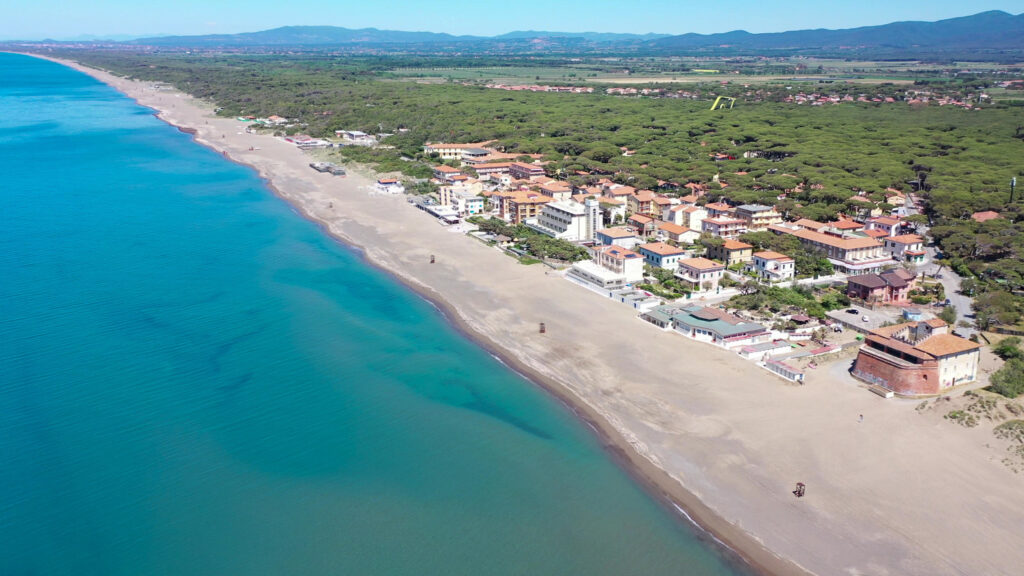
The great expansion of the wine, between tradition and modernity
On the nineteenth century, there was a fairly generalized boom in wine production throughout Italy (and in the rest of Europe). The production grew almost everywhere, driven by the significant increase in the population at the time, as well as by the progressive improvement of production techniques. The same happened in our Maremma Pisana, as told in the Tuscan Agricultural Journal of 1832, in the article "Corsa Agraria della Maremma" ("The rapid increase of agriculture of Maremma") (here the full article):
"The main income items of a possession in Maremma are: 1 ° the cereals, 2 ° the wine, 3 ° the oil, 4 ° the cattle, 5 ° the woods. …
The cultivation of the vine spreads for every where in Maremma … "
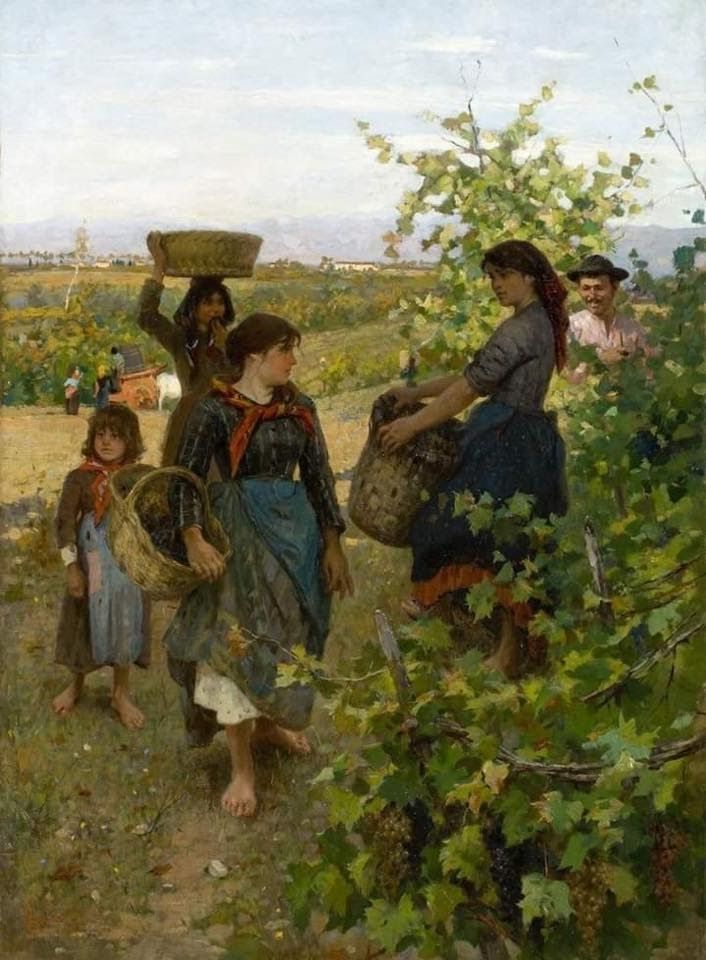
As reported in the piece, the vineyards in Maremma increased a lot because the wine production was no longer able to fully satisfy the local request. The wines were already sold out before the summer. The article highlights the strengths and weaknesses of this production, more or less the usual problems of the time: the production of too many quantity of grapes, bad oenological techniques, especially that so called Tuscan "governo", wine-cellars not suitable for the storage (especially for the temperature).
What is the Tuscan "governo"? How was the wine producted in Tuscany at the time? The "governo" was a winemaking practice useful to give more strength to poor and too light wines. They were frequent at the time, due to limited winegrowing and winemaking practices . It was not the only system: for example, it was common at the times to reinforce weak wines by adding a little grappa or other liqueurs, both in Italy and in France. Firstly, some healthy bunches were harvested separately, which would be used for the "governo". These bunches were dried on racks or hung on hooks and wires in the cellar. The rest of the grapes were normally harvested and winemaked. Then, the wines were placed in wooden barrels. On November, the chosen bunches, now partially dried, were pressed and the fermentation was started. The "governo" was this mixture of very concentrate fermenting must and skins that the winemakers added to the casks (not completely filled at first) of the weaker wines (from 5 to 10%). The (relatively) low temperature of the period, the alcohol present and the little sugar caused a very slow fermentation, which lasted even a month. This practice enriched the wine with few degrees of alcohol and a some more scents. This wine was slightly sparkling, due to the carbon dioxide developed in the second fermentation. The "governo" wine was consumed young, leaked directly from the barrel.
The Tuscan Agrarian Journal is critical about this practice. Firstly, the producers often neglected the good care of the production due to the possibility to correct the wines with the "governo" practice. Secondly, the "governo" reinforced the wine but also originated several defects. The refermentation, carried out in conditions of poor hygiene and not always adequate temperature, often increased a lot the volatile acidity and many other defects. The subsequent improvement in winemaking techniques brought back the "governo", which spread in Chianti, but also in other Italian regions. Later, it disappeared in Tuscany (today, it is enough our sun, with good practices, to produce great wines). Similar practice has remained in cooler Italian regions (as the "ripasso" in Veneto).
Now let's talk specifically about our territory. A suggestive description of the agricultural landscape of that time is found in the Tuscan Agricultural Journal of 1832. The article tells of the visit to the territory by three exponents of the Georgofili Academy of Florence: Cosimo Ridolfi, Lapo de' Ricci (agronomist, who signed the article) and Raffaello Lambruschini. The three guests visit Bolgheri, then they went to Castagneto, passing near the long Segalari Hill (see the map below).

Describing the vineyards of a noble family farm (Della Gherardesca) in the plain near Bolgheri, the piece tells that the vines are mainly supported by cane, broom or juniper poles, sometimes also by field maples ("loppi", in the Tuscan of the time). There is a criticism of the fact that the rows are too narrow and the vines too dense, as well as other pungent observations. The farm manager, Giuseppe Mazzanti replies to the criticisms with a proud letter, published on December 15th, 1832. According to Mazzanti, the rows are not too narrow, being 24 "braccia" wide (about 14 meters) and allow the intermediate cultivation of rotation of wheat, broad beans and lupins. This is clearly a mixed cultivation.
The visiting group then goes to Castagneto. Passing in front of the Segalari hill, they are struck by the care of the crops, dominated by vines sustained by field maples, alternating with fields of forage and cereals. They praise them, without lacking a certain condescension:
“… the Segalari hill draws the passenger's attention for its delightful cultivation. Small modernly built houses, fields planted with vines, and these leaned on field maples, flourishing vegetation of cereals and fodder, a certain care in the direction of the water and, we could say, a certain refinement that is not common in Maremma…”
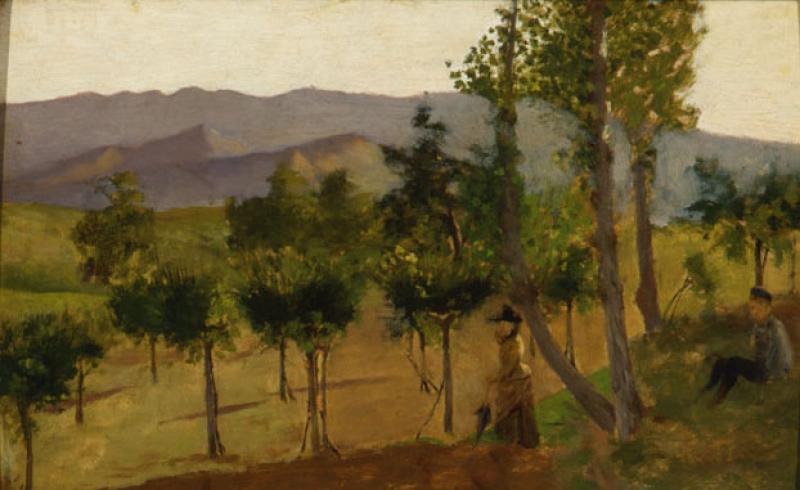
The hill of Castagneto is described as steep, covered with vines and olive trees of remarkable vigor. After visiting the village and the castle, they descend towards the via Aurelia, crossing "arable land and vineyards".
From this and other testimonies, we can understand that, at the time, the mixed viticulture dominated here, as in all Tuscany and central Italy, that is, rows of vines were cultivated alternating them with strips of wheat or other. This not means that grapes were a secondary production. Let us remember that Chianti, in those periods, exported wine all over the world producing it from vines supported by trees (vine "married" to the tree, it is the traditional Italian name), in mixed cultivation with wheat.
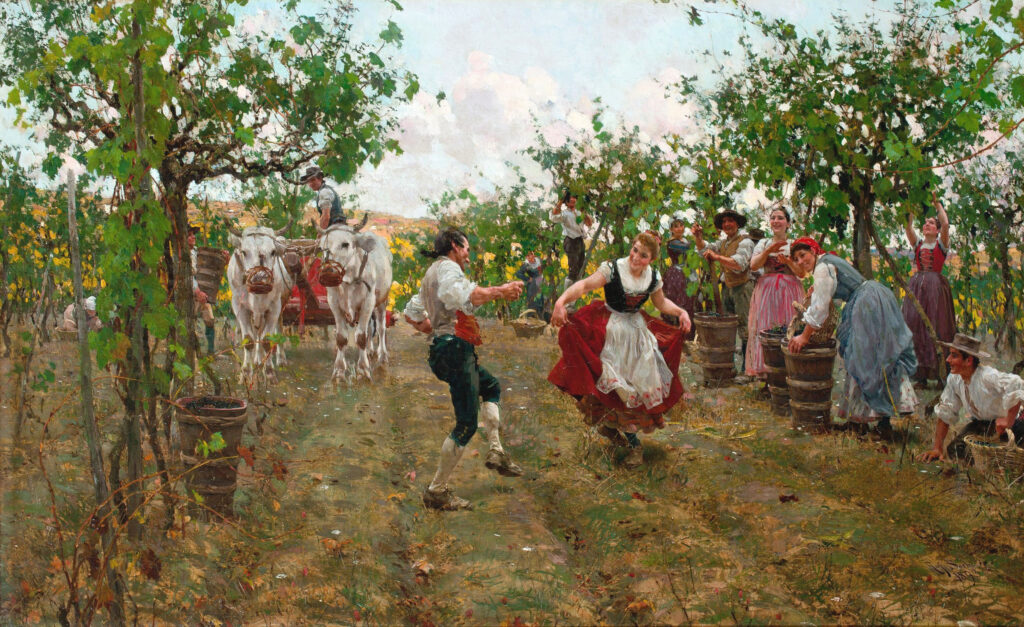
As we have understand from this testimony, at the time (as today and even more) our territory was dominated by the great estates of noble families. Each farm was divided into severl "poderi". A "podere" is one little part of the estate, entrusted to a farmer family. On the other hand, around Castagneto and on the Segalari hill, due to the historical events that I mentioned here, there were numerous medium and small properties and there were much more buying and selling movements.
I tried to understand the dimension of local production at the time, but I found only very few data. They are also often affected by the modern prejudice of considering as vineyards only those with intensive cultivation (monoculture). Actually, the vast majority of the vineyards of that time was rapresented by the promiscuous viticulture, that was the local tradition since the Etruscan time. Excluding it means introducing a big error in the evaluations.
The University of Florence, under the guidance of Mauro Agnoletti, conducted studies starting from the analysis of data from the land registry of the time. Three historical moments have been examined: 1832, 1935 and 1954. I was amazed by the fact that they left a frightening hole in the middle (about 100 years), which includes precisely the period of maximum wine-growing expansion of the territory.
In 1832, which is still a moment of onset of agricultural development in the Maremma, the cultivated areas occupy 23.5% of our territory, with a prevalence of arable land. The study reports that the monoculture vineyard occupies about 35 ha (I remember that one hectare equals 10,000 square meters) and, curiously, it stops here, not considering that at the time intensive viticulture was the minority. So, I added up all the areas where the nineteenth-century cadastre explicitly reports the presence of vines with other crops, reaching over 360 ha, 1/4 of the cultivated areas. Of course it is not possible to compare the hectares of mixed viticulture with those of intensive, which we refer to with our modern models. However, we can understand that already in 1832 viticulture was very widespread in the area. I remember you that our territory is very small: the actual wine production is 1300 ha circa of vineyards.
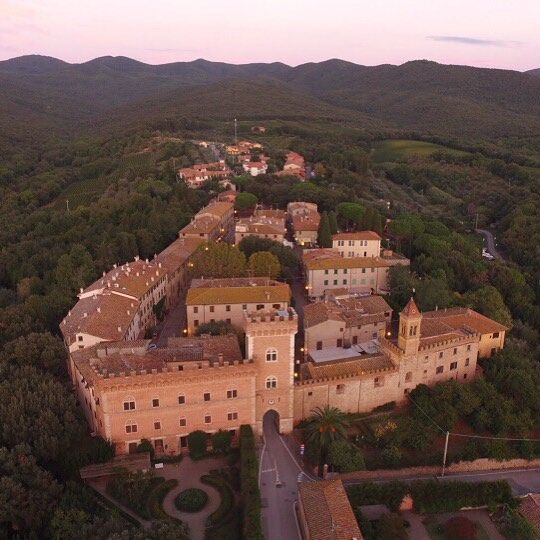
The period of maximum growth of the farms took place in the following decades, with the birth of numerous vineyards, as evidenced in the books by Luciano Bezzini and Edoardo Scalzini, who examined the rich documentation left by the estates of that time. Unfortunately, there is a lack of overall data from this long and decisive period. Below, there is a sigle data, ase the below example.
In 1903, in the Farm Gherardesca of Castagneto, there were 750 ha of mixed viticulture and cereals, with the presence of 352,190 vines. There are also 22 ha of monoculture vines, of which 17.5 ha were dedicated to black varieties (with 144,514 vines) and 4.5 ha of white grapes (30,680 vines). Their density is comparable to the densest modern vineyards: over 8,000 vines per hectare in the first case and almost 7,000 in the second. If we divide the number of vines of promiscuous viticulture by this density, we can relate the mixed production to an intensive vineyard of about fifty hectares. In total, therefore, this single farm produced wine for an area comparable to about 72 hectares of dense vineyards.
The area planted with vines in 1935, according to the land registry study, is 301 ha, but again it only refers to intensive viticulture. This time there are no detailed data that allow me to calculate the mixed viticulture. There is only a generic "arable land with other trees" (which could include vines but not only) which occupies 1665.76 ha. However, we know that this is a period of decline in the area's viticulture. From the 1920s, the phylloxera (remember? It is the parasite that threatened to wipe out world viticulture) damaged locally as never before, after a first appearance in 1895.
Prof Agnoletti attributes to the phylloxera the main cause of the dramatic decline that local viticulture underwent around the middle of the twentieth century. The cadastral data tell us that in 1954 intensive viticulture had dropped to just over 7 hectares. Again, the study neglects the promiscuous one, it does not even tell us whether it was still present or not, except that the generic "arable land with other trees" has expanded to 2276.76 ha.
We know for sure that the viticulture crisis of the time gave way to other crops. The first half of the twentieth century saw the boom of olive trees in monoculture, which had an increase of + 300% throughout the province of Livorno. In 1925 Mussolini started the "battle of wheat", pushing towards the expansion of productivity and surfaces, which expanded as never before in Maremma. Fascism also stimulated the increase of houses scattered in the countryside, which had never been more numerous here. The fruit trees, such as the peach trees, and the horticultural crops also spread.
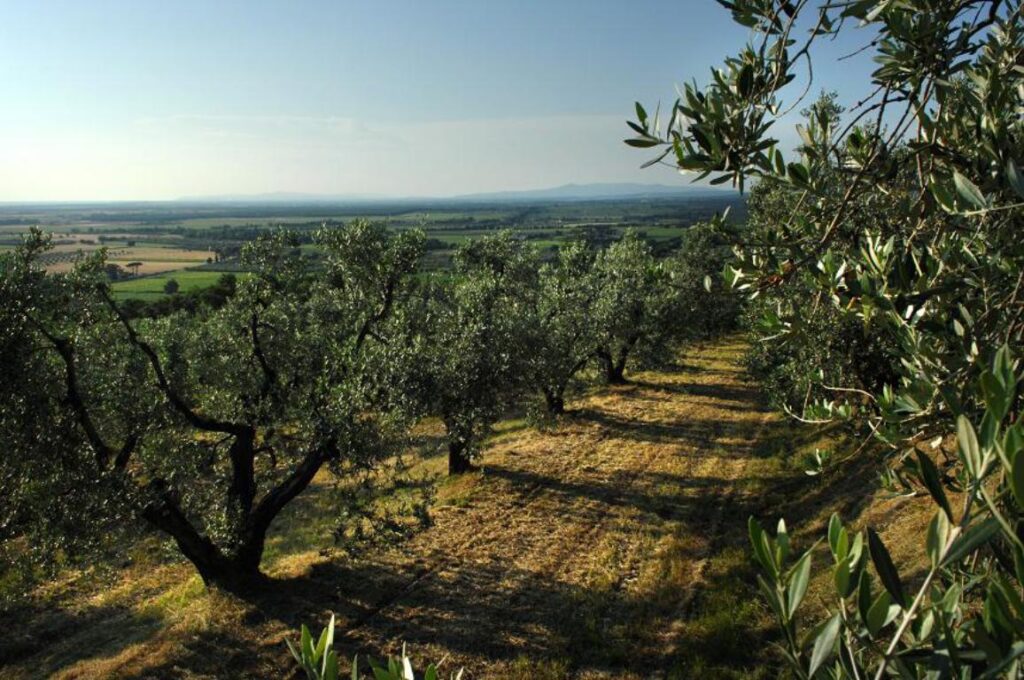
Stories of vineyards and farms
Let's now see in detail how the production was at that time, from the examination of the documents of the estates of the area made by Bezzini and Scalzini.
As we have seen, the vineyards were mostly made of vines "married" to trees, the ancient vine coltivation system of Etruscan-Roman origin that I have already talked about fro long. At the beginning of the nineteenth century, in Bolgheri, we often found the word "piantata", a term that has also remained in some toponyms. In the old agronomic language, "piantata" indicated married vines that pass the shoots from tree to tree, forming rows. However, it was often used improperly (and vice versa) to indicate the "alberata", i.e. the vines wrapped around a single tree. The local use of certain terms is not always easy to understand.
But we know with certainty that here, as in almost all of Tuscany and other central regions, the ancient Etruscan custom of field maples as supports remained. As wrote above, the tree was sometimes replaced by poles. I have personally seen still today in very rare old vineyards (see the photo below). Probably the version with poles was prevalent in the few monoculture vineyards at the time.
In the Tuscan agricultural texts of the time, the cultivation practices of the vine "married" to the tree are explained in detail. A reference text of the time is that of the botanist Saverio Manetti, entitled "Oenologia Toscana" (1773), published under the pseudonym of Giovanni Cosimo Villifranchi. He writes that the cultivation with the married vine allows to obtain excellent quality for the grapes and the wine, provided that this is set and managed in an optimal way, with the tree and the vine in an unexpanded form. Both of them were in fact kept low and adequately pruned. According to Manetti, but not only, the field maple is the best of many other trees, because it does not interfere with the optimal development of the vine: the roots take up little space and the crown can be easily contained with an appropriate pruning. This is the oldest form of agroecology.
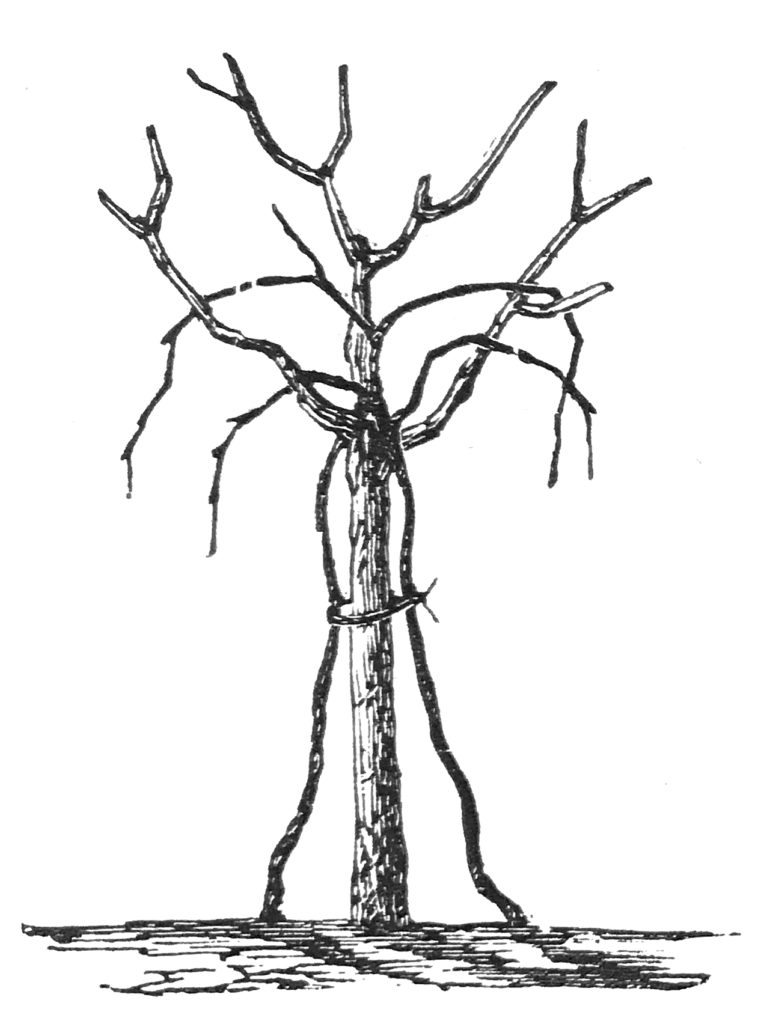
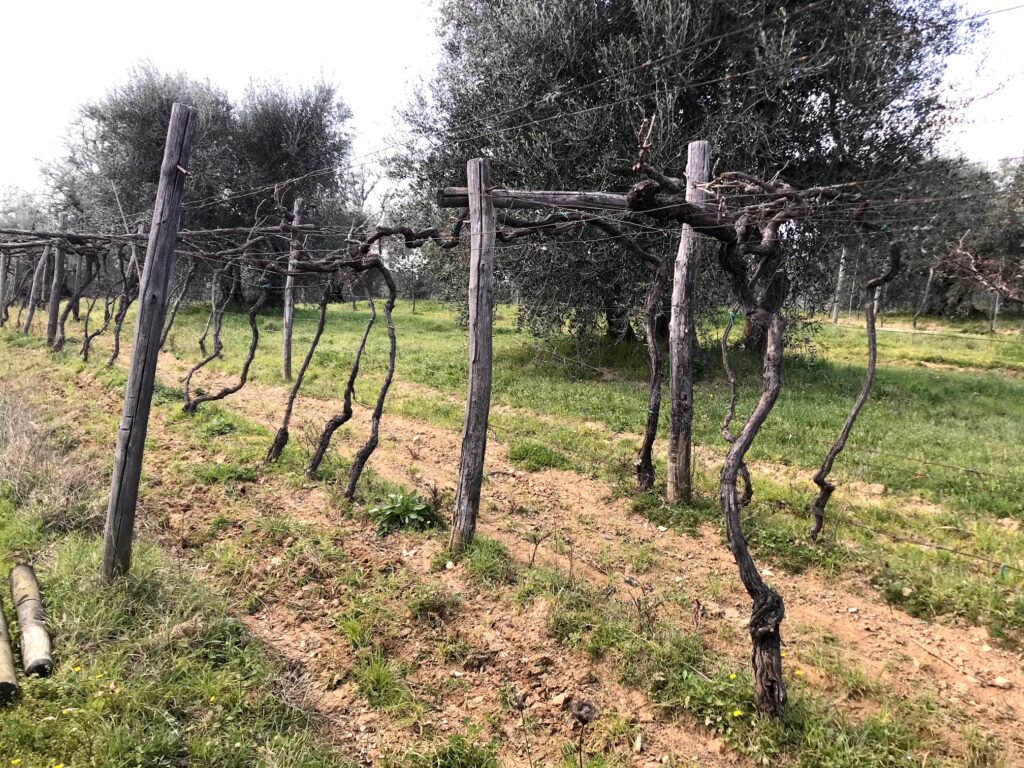
The vineyards included, as was common at the time, several varieties. The wines were always born from a field blends. The main local varieties reported in the documents are Sangiovese, Vermentino, black Canaiolo, white Canaiolo, black Malvasia, white Malvasia, Tuscan Trebbiano, Aleatico, less common Mammolo and Pernicione (now disappeared). There are also French vines, often written with Italianized names, such as Gemè (Gamay), Carmené (Carmener or Cabernet franc), Caberné (Cabernet sauvignon), Scirà (Syrah). Mostly still wines were produced, especially reds (although sometimes white grapes were present in the blend), white ones in lesser quantities. There were basic and top wines. Sweet wines were also produced, especially made with Aleatico, and a slightly rosé vin santo, which is why it was called Occhio di Pernice (Partridge Eye). The production of white wines grew especially in the early decades of the twentieth century, due to the great market demand of the time. In this period, the arrival of Chardonnay, Clairette and Sémillon is also noted, as well as the first appearance of Merlot.
It was common at the time that the cellars were in the villages, especially as regards the small owners of Castagneto. You could smell the scent of wine during the fermentation in the streets of the villages, as told in the famous lyric of Carducci "San Martino" (Saint Martin's Day). For those like me who live in Castagneto Carducci (or even just know it), I imagine easily this windy day of early November (on the Saint Martin's day) while I'm looking from the top of the hilly village the stormy sea and the mist of the plain below.
The fog to the bare hills
soars in the thin rain,
and below the wind
howls and churns the sea;yet through the hamlet's alleys
from the fermenting casks
goes the pungent scent of wines
to touch a soul with glee.On the firewood, turns
the skewer crackling:
stands the hunter whistling,
on the threshold to seein the reddening clouds
flocks of black birds,
like exiled thoughts
as in the dusk they flee.
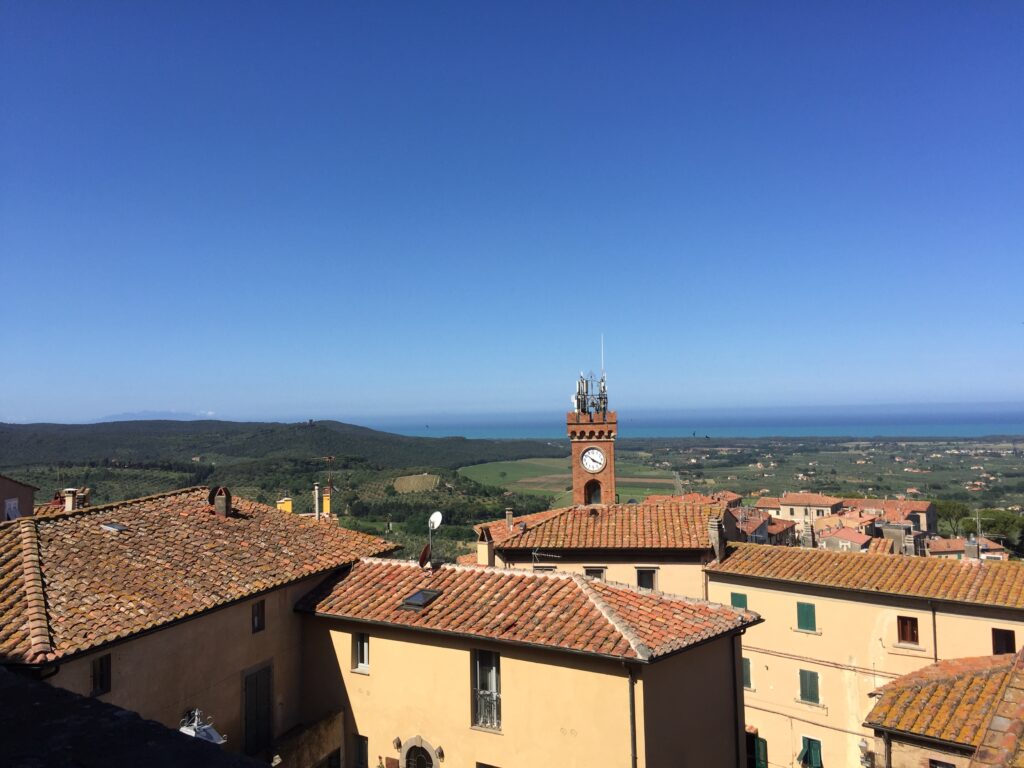
If fthe cellars were almost always inside the villages or the small owners, there were mixed situations for the large estates, with cellars in the village and even in the individual farmhouses. Usually, each farmer vinified his grapes separately and the wine was then taken by the estate owner for the part due to him. I found in only one case, at the time, the presence of a single centralized wine-cellar, in the Serristori estate (which was located in the southern part of the municipality).
Let's go back to the article of the three Florentines visiting the territory in 1832, as they describe the wines tasted in Castagneto:
“The common wine is not very intense but it does not have a brackish taste like many Maremma wines, and it is pleasant. The wines made with more accuracy, "for the bottle", are exquisite; the skill of the winemaker overcomes the quality of the grapes, or one conspires with the other. Aleatico and vin santo have a lot of grace and fragrance and are excellent; they are never too much sweet, nauseant, characteristics that displease all connoisseurs of local wines so much".
These praises stand out particularly in the newspaper which, on the other hand, is generally very hypercritical about the wines of the Maremma Pisana.
My interest was particularly focused on the history of the old Espinassi Moratti Farm, because it also included the vineyards that today are those of our winery, Guado al Melo. The Morattis, then Espinassi Moratti, created and expanded their properties starting from the end of the eighteenth century, until to create a very large estate. Giovanni Moratti bought the land, that today form the vineyards of Guado al Melo, in an area then called "Campo al Lucchese", on the first edges of the north side of the Segalari hill, in two times. In 1818, he bought a part from a small farmer, Giovacchino Balli, and in 1820 by the owner of the Segalari Farm, Giulio Bigazzi. In 1824 he also bought the neighboring "podere" Grattamacco from Bigazzi, where there was a farmhouse and formed a single large podere. The wine that was produced there managed to get high prices in the high society of Pisa, because it was “full-bodied and fragrant”. The success prompted the owner to take all the wine, including the part due to the farmer, giving him one of lesser value in exchange. The vines cultivated were the classic ones of the area already mentioned: Trebbiano, white and black Malvasia, Vermentino, white and black Canaiolo Bianco, Sangiovese, Cabernet sauvignon. In the twentieth century the prevalence of white varieties is reported, as well as the presence of Merlot. In the early years of the twentieth century, the farm experienced a period of crisis, but then flourished again in the 1930s. In 1925, the estate's wine also won the first prize of the Rome Wine Fair. In 1937, the Grattamacco farm, judged too large for a single family of farmers, was divided in two. The Santa Maria farm was born, with the construction of a new farmhouse, at whose service the vineyards of today's Guado al Melo remained. In the second post-war period, the estate began to be partially dismembered. In the 1960s, it yet included 22 hectares of specialized vineyards, among which the vineyard of Santa Maria is still mentioned, equal to 12 hectares, whose boundaries described are precisely those of Guado al Melo (between the Gelli's mill and the Grattamacco dyke). The vineyards of today's Guado al Melo were then sold, separated from the remaining Podere Santa Maria, to a local farmer who, as his sons told us, continued to produce wine.
“The wine is a lot and it is very good” and will have a great future
Finally, let's go back to Giosuè Carducci, Nobel Prize for literature, with whom we began this little journey and with which we conclude it.
The poet celebrated our land in his lyrics, even if he was not a native of the place (he was born in Valdicastello, in Versilia, norther in the Tuscan coast). He arrived here with his family at the age of three, following his father (a doctor). He spent the carefree years of childhood and early adolescence there, first in Bolgheri and then in Castagneto, and this land remained imprinted in his heart. He had the local wine sent to Bologna, where he taught, and he also consumes it abundantly during his visits to his friends, dedicated to banquets with a lot of wine, which he called “ribotte” (blowouts).
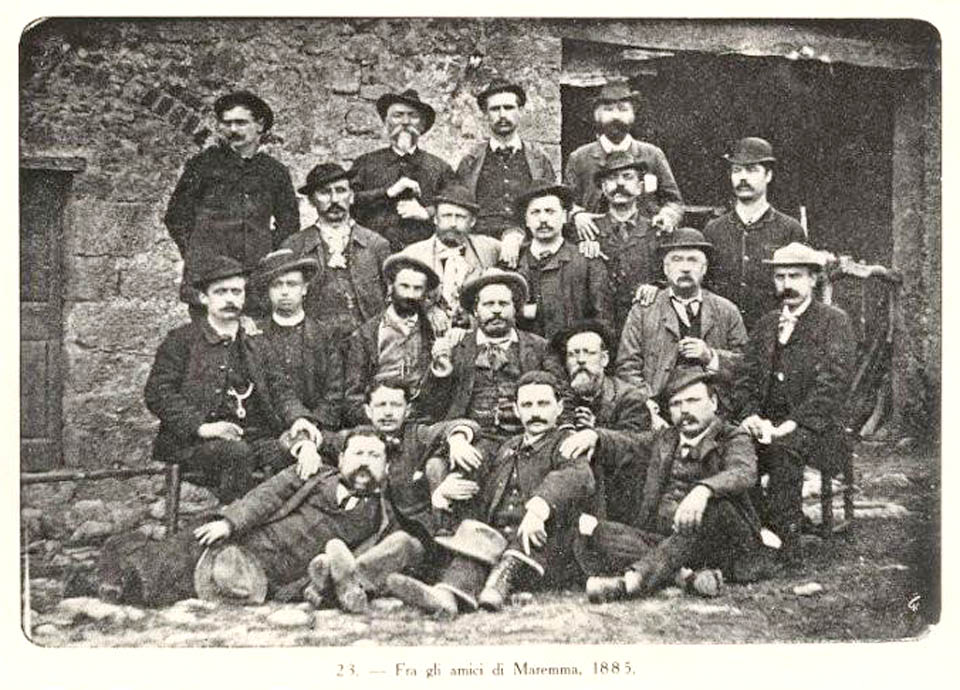
Carducci is the emblem of the great boom of wine in Bolgheri (and Castagneto area) during the nineteenth and early twentieth centuries. As mentioned, the phylloxera destroyed the local production, giving space to other crops. However, as we all know, it will only be a pause: then, a new rebirth of wine will begin, which will be more extraordinary than ever (in the next post).
Bibliography:
Agnoletti M, "Il Paesaggio come risorsa, Castagneto negli ultimi due secoli", Ed. ETS, 2009
Agnoletti M., Paletti S., "Il ruolo del vigneto nel paesaggio di Castagneto Carducci fra l'Ottocento e l'attualità", Facoltà di Agraria, Università di Firenze, Overview allegato n.15 di Architettura e Paesaggio.
Bezzini L., Guagnini E., "Vini di Bolgheri e altri vini di Castagneto Carducci". ed. Le Lettere, 1996
De Ricci L. et al., "Corsa Agraria della Maremma", Giornale Agrario Toscano, 1832
Garoglio G., "La nuova Enologia", eds. Istituto di Industrie Agrari Firenze, 1963
Scalzini E., "Inventario dell'archivio della fattoria Espinassi Moratti di Castagneto Carducci (1781-1981), ed. Comune di Castagneto Carducci
Villifranchi G.C. (alias Saverio Manetti), "Oenologia Toscana", rivista il Magazzino Toscano, 1773
Webinar domani con Michele Scienza
Questo periodo di pandemia ci ha resi famigliari con nuovi termini e modalità di incontro. Così eccoci ad un nuovo webinar, un seminario a distanza che ci permette di incontrarci nonostante tutto.
Si terrà lunedì, domani, alle ore 19.00, organizzato da Alberto Levi, per parlare di Bolgheri, vigne ed artigianalità.
Per informazioni www.albertolevi.it
From the vineyard to the bottle: the magic of the scent of wine.
The main part of the wine charm is represented by its aromas. I'll tell you how they are born and how it is possible a so high diversification of them.
(cover picture from Isak S. Pretorius, 2017 Critical Reviews in Biotechnology, 37:1, 112-136)
How many are the wine aromas? It has an incredible aromatic richness and diversification. Some wines are more simple, with few perfumes. Some others have an amazing complexity. Each wine is not identical to another. You can also find difference between wines from the same area or produced with the same grape varieties.
How is such a great complexity and diversification possible?
"Strawberries, cherries and an angel's kiss in spring
My wine is really made from all these things"
(Summer Wine, by Nancy Sinatra)
Oh, oh summer wine / Strawberries, cherries and an angel's kiss in spring / My summer wine is really made from all these things / Take off your silver spurs and help me pass the time / And I will give to you summer wine / Oh, oh summer winee"
I will now try to explain how the aromas of wine come from the vineyard and reach the bottle. Above all, I will try to make you understand where all the aromatic diversity that wine can express comes from, how it is possible to enhance it in production or, vice versa, lose it.
In the following boxes there are some simple basic information on aromatic molecules and the smell, also useful for understanding some specific terms that are very often used in the world of wine. Immediately after, we will enter the heart of the scent of wine.
Today, thanks to increasingly sophisticated analysis techniques, we have come to define hundreds of aromatic components in wines from a chemical point of view. The aromatic molecules, that is the substances responsible for perfumes, are of many different types. However, they have in common the ability to interact with our olfactory receptors, located in the nasal cavity. Their aromaticity depends on the fact that they are volatile, that is, they have a marked tendency to pass from the liquid to the gaseous state. They are able to reach our olfactory receptors, using two ways. They can pass through the nose when we smell. They can also reach them from the mouth, when we have wine in the oral cavity, through the retro-nasal passages. About wine, we call aromatic profile the entire range of aromas that it expresses.
Why is the nose (of expert people) still the privileged tool for making certain decisions in wine production? It is not easy to trace to the aromatic profile of a wine starting from the chemical analysis, because the aromatic expression of these molecules is not always easily predictable. Some of them are perceptible only above certain concentrations, others are dominant in the profile even if present in little more than traces. Some change the type of aroma depending on their concentration or can even become unpleasant. Certain aromatic compounds have a synergistic action: if they are present together, they give a different smell. Not only that: the studies done so far have shown that it is very difficult to predict the volatility of an aromatic molecule in a complex mixture (such as wine). The volatility of a molecule is influenced by the others. Even the non-volatile part of the wine (made up of polyphenols, polysaccharides, glucose and other substances) has an influence on the volatility of the aromatic component, in a way not yet fully understood.
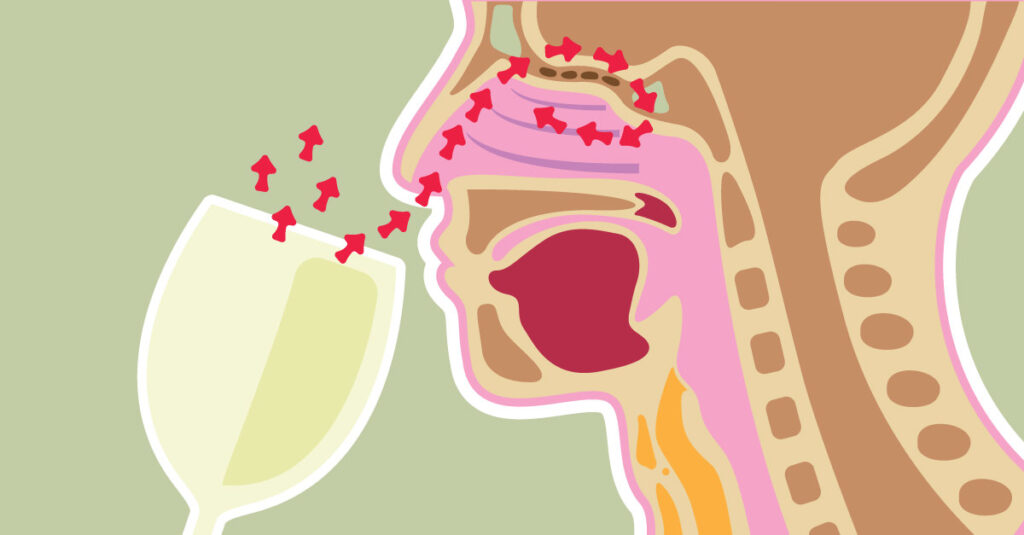
Smell is an incredibly complex and very powerful sense. We have about a thousand different types of olfactory receptors. Each aromatic molecule activates a different combination of these receptors. Therefore, considering a potentially infinite combinatorial possibility, our nose can recognize a very high number of odorous substances. But it also has a very individual component. First of all, our individual olfactory capacity is influenced by genetics. This not only means that someone is more gifted than others, but also that different people can perceive sensations differently. Furthermore, important psychological factors also are present. Linking an aromatic sensation to a name (rose, strowberry or other) gets involved our olfactory memory, that is the memory of having already smelled a similar sensation and having classified it with that name. In a complex blend like wine, the aromas are not always clear and defined. The associations we can make are therefore not unique: we connect a certain odor sensation to the one that is most similar in our memory. Hence, this connection can vary depending on our experiences. Surely, people who are more used to smelling perfumes have an olfactory memory that is more trained to recognize and denominate certain sensations. Furthermore, the numerous studies carried out so far have also shown that our olfactory capacity is influenced by the situations: by the mood of the moment, by our (unconscious or not) prejudices and expectations, by the suggestion created by other people, … For all these reasons, in sensory analysis researches (where the tasting is not for pleasure but to try to describe a wine in the most objective way possible), the tests are made by groups of people, organizing them and examining the results according to statistical evaluations.

Given that there is an rilevant individual component, people that drinks wine for pleasure should not feel in awe of freely expressing his sensations. If you want to improve your smell capacity, it's not that difficult. It is enough to train yourself often, smelling single aromas (fruits, aromatic herbs, spices, etc.), so that they are marked in your olfactory memory.
How the wine aromas are born
Hearing about peach or rose or berry scents in wine, inexpert people often ask if these aromas are added during wine production. The answer is that there is no need: all the aromas of wine originate from grapes and winemaking process. Adding flavorings could be a shortcut. In Italy, this practice is prohibited by law.
How then is it possible that wine can smell of peach or rose (or many other things)? It is possible because the molecules that give these aromatic sensations are common among the different species of the plant kingdom. In this context, the grapevine (Vitis vinifera L.) is decidedly particular: it has a very large potential aromatic richness. Throughout history, this characteristic has made grapes the queen of raw materials with which to produce a fermented drink.
However, the grape itself does not have many smells. There are some grape varieties more fragrant than the others, which are defined as “aromatic”, such as different Moscato. Most of the aromas we can find in the wine derive from grape but they are molecules that are in a non-odorous form in the fruit. They are called aromatic precursors. They are not perceptible to the smell because the aromatic molecules are linked with others that prevent their volatility. They can become volatile only if this bond is broken. That can occur during winemaking, as we will see.

The varietal aromas are numerous. We can group them into 4 families which, as mentioned, are widespread in the plant kingdom, so they give aromas that recall other plants, fruits and flowers:
- a very extensive family is that of terpene compounds, which give aromas of rose, linden, lily of the valley, lemongrass, … but also that composite sensation of "muscat";
- carotenoids derivatives, which give complex aromas of flowers, exotic fruits, apples, violets, tobacco, tea, berries, …;
- metoxypyrazines, which give notes of green pepper, asparagus, earthy hints;
- thiol compounds, they can contribute in several cases to the notes of cassis, passion fruit, broom, tomato leaf, peach, eucalyptus, … They also develop in fermentation, where they are often responsible for bad odors.
Some aromatic molecules can develop when the grapes are pressed: they are called prefermentative aromas. The most typical example are aldehydes, which give hints of cut grass (not very pleasant). When the grape is mashed, some enzymes come into contact with the bloom, the waxy material that covers the berry peel, and transform it. The stronger the mechanical stress to which the grape is subjected, the more these substances originate. In reality, today they are much less important than in the past: it is now common to use crushing or pressing machines that act very softly.
Mainly, other aromatic molecules are formed by the action of yeasts and bacteria during fermentation reactions, as secondary products of the process. Other aromas are produced by the microorganisms by other metabolic pathway, starting from substances that are present in the must / wine (especially amino acids). All these aromas are called fermentative. All together, they represent the specific aromatic base of the wine, that “vinous” sensation that makes us understand that we are smelling wine even with closed eyes. This aromatic core, which prof. Ferreira of the University of Zaragoza defines a "vinous matrix", it is a set of heterogeneous compounds. It includes higher alcohols ("vinous" notes), ethyl esters of fatty acids (honey, wax, different floral aromas, …), acetic esters of higher alcohols (banana, apple, candy, rose), volatile fatty acids (acetic acid, …). So far, 27 have been identified. In each wine they can be different in presence and quantity. Ethyl acetate, the most important ester in wine (but also the least positive) is responsible for the notes of acescence (not acetic acid, as is often believed). It is produced by yeasts in fermentation in small part. At low doses, it seems to contribute positively to the aromatic profile. When it is more, it almost always derives from contamination of acetic bacteria.
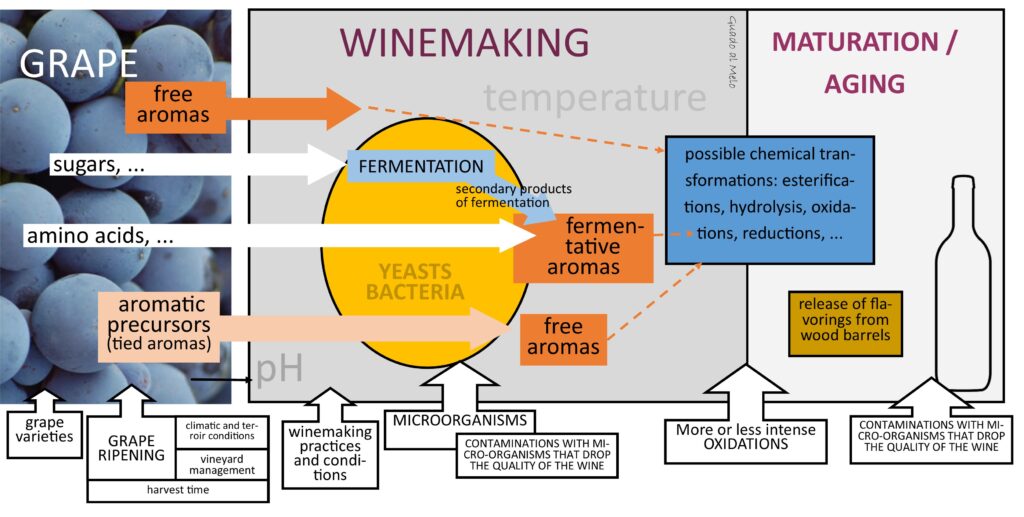
I have described to you what is the basic core of wine aromas. Then, other modification can occure that can enrich or alter the wine profile. Malo-lactic fermentation, mainly carried out by the bacterium Oenococcus oeni, leads to the formation of other fatty acids and esters, which can give a buttery smell. During winemaking and aging, other chemical reactions can occur which act on aromas and modify them: esterifications, oxidations, reductions, hydrolysis, etc. Some wine containers may release aromas (expecially new oak barrels or if you add wood chippings) or can create conditions that favor oxidation (concrete, amphora). If the aging is done on the lees, there are typical aromas of bread crust or yeast. I will not enter now in the very complex part of what are defined "olfactory wine defects", which we will talk about another time.
In general, the aromatic profile of wine is based on the vinous matrix on which the aforementioned varietal aromas are grafted. All these aromas integrate with each other like the instruments of an orchestra, in a complex relationship between them and with the non-volatile component of the wine, which modulates the olfactory expression.
Why is there such a large differentiation between wines?
Most of the varietal aromas accumulate more or less progressively during the ripening of the grapes. The metoxypyrazines, on the other hand, follow the opposite path: they are highest in the small green berry and are demolished during the ripening. We can therefore understand that the conditions in which ripening takes place (the terroir, the climate, the vintage, the choices and cultivation practices) can change the internal balance of the fruit, influencing the aromatic components. It is therefore confirmed that the quality of the grapes is truly fundamental for a great wine. Poor, poorly grown, unhealthy grapes, etc. they will never give great products. Likewise, the decision of when to harvest is important. If the harvest is done before or after, different aromas are obtained. For example, the hint of green pepper is often described as typical of Cabernet sauvignon, but is only partially true. The content of methoxypyrazines, responsible for this aroma, becomes important in wine if grape is harvested too early. The methoxypyrazines are also influenced by environmental conditions: it is easier to find them in wines of cooler climates than in warmer ones with high solar irradiation (where they are degraded much faster).
The aromatic precursors, as mentioned above, are released during the winemaking. Therefore, there is a reserve of potential aromas in the must that is derived from grapes, but it is not automatic that they'll be expressed in the wine. They can be expressed or not, in whole or in part, depending on the winemaking (and the subsequent phases) conditions and practices. These conditions also influence the fermentative aromas, the vinous matrix I mentioned above.
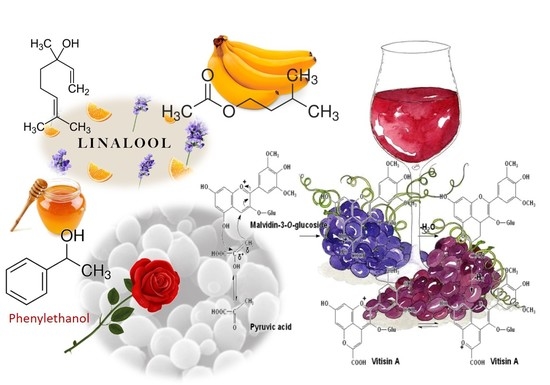
There are many studies on these aspects. It has been showed that various elements influencing yeast activity can modify the aromatic component of wine. Among them, I remember the presence and composition of some important nutritional factors, essential to yeasts as sources of nitrogen and vitamins. An influence is also due to the pH and to the temperature. Nutrients and pH depend on the qualitiy of grape: if it ripened with optimal conditions, the managment of the vineyard, the moment of harvesting … It is possible to add additives to adjust these elements, but it is an industrial approach, that does not enhance the identity of the grape varieties and territory. The pH can vary in other ways, for example by the presence of some microrganisms. In the past, it was frequently modified by the release of substances from concrete containers.
Another important element in modifying the aromatic composition of a wine is represented by the type of microorganisms (yeasts and bacteria) that are present. Each type (species and strain) produces different quantities and proportions of the fermentative aromas. Therefore, the higher the biodiversity of yeasts, the more complex wine is. However, let us remember that all these elements are connected: for example, if we have a high biodiversity of yeasts but poor quality grapes, there will still be no aromatic complexity. However, the microorganism pool need to be managed carefully, to avoid the presence of those that have a negative action for the wine. I would like to underline that in any case no pathogenic microorganisms for humans survive in wine, due to its acidity.
As I have already told in a previous article (here), a heterogeneous group of microorganisms goes into the must: they derive from grapes, harvesting tools and the cellar. The group changes with the territory, the climatic conditions, the insolation, the different variety of vines, the management of the vineyard and the cellar, … Actually, most of these microorganisms die in the passage from grape to must. There are very different conditions with respect to the surface of grapes or objects: there is no oxygen, there is a very high sugar concentration, the temperature changes, etc. During fermentation, the conditions change again and the populations of the microorganisms yet change. Above all, those who suffer from the progressive increase in alcohol succumb. Some strains also have the ability to produce substances capable of eliminating competition. We know that Saccharomyces will become prevalent in conducting fermentation. However, non-Saccharomyces, both in the initial stages and when they become secondary, can enrich the must with metabolites that contribute positively to the wine's aromatic profile, expanding its complexity. In the figure below, the microorganisms indicated with the green dot are negative, which you would never want to have in your cellar, much less in the final bottle.
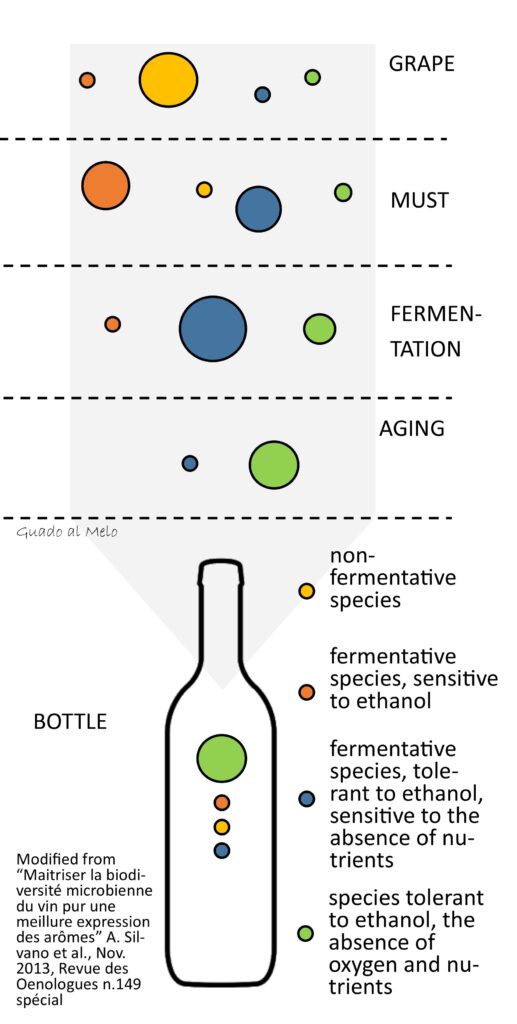
It is possible to schematize the different groups of microorganisms in 4 families, according to their behavior:
- Non-fermentative microorganisms: these are those prevalent on the grape skins but which decrease significantly with mashing (e.g. species of Cryptococcus, Rhodotorula, A. pullulans, various species of Serratia, etc.)
- Fermentation species but with low tolerance to ethanol (alcohol): they increase in the must and participate in the initial stages of fermentation but then, they decrease with the progressive accumulation of alcohol and for other reasons (different species of Candida, Pichia, Lactobacillus, G. oxydans, etc.)
- Fermentative species, which tolerate the accumulation of ethanol. At the end of the processes, however, they decrease because they suffer from a lack of nutrients (Saccharomyces cerevisiae, Oenococcus oeni, …).
- Species resistant to the absence of nutrients and to sulphites: some microorganisms can remain in high numbers even after the end of fermentation because they can feed on other compounds and can also resist the addition of sulphites in bottling. Among these, there are some very dangerous ones, such as Brettanomyces bruxellensis, which causes really unpleasant smells (smell of stable, horse, etc.).
The understanding of these mechanisms has also led to the selection of yeasts that allow to change the aromatic profile of the wine, both for commercial choices and to make up for production / technical deficiencies (poor quality grapes, mistakes, etc.). In this way, however, wines that do not express the particularity of their genius loci (the spirit of the place, or terroir) are produced. They can be quite good, but similar to many others that have been produced with the same practices. They are generally simple wines, with very few aromas, according to a serial production that is the same every year.
If you have followed me this far, you will have understood how nature gives us a complexity that we humans can hardly equal. With interventions that we believe are improving, we actually reduce this wealth to the few elements that we can control. When you hear about artisanal wines, natural wines or other similar definitions, we are talking about that: winemakers who try to preserve all the peculiarities of their vineyard to the maximum and enhance it in their wines.
However, it is not easy to make a wine by managing all this complexity and being able to obtain good / great results. Mistakes or wrong management from the vineyard to the cellar can give rise to simple, mediocre or even unpleasant wines. Here lies the artisan value of the wine. Managing a vineyard and making wine are jobs that require a lot of knowledge, as well as a great deal of experience and a certain degree of talent. In other words, a great deal of professionalism is needed. Unfortunately, today this last word is definitely underestimated: sometimes, improvisation arouses more sympathy or is (erroneously) associated with something more "genuine". Knowledge does not necessarily imply more disruptive interventions on wine: it is often the opposite. The expert winemaker understands how to work well in subtraction, not in addition.
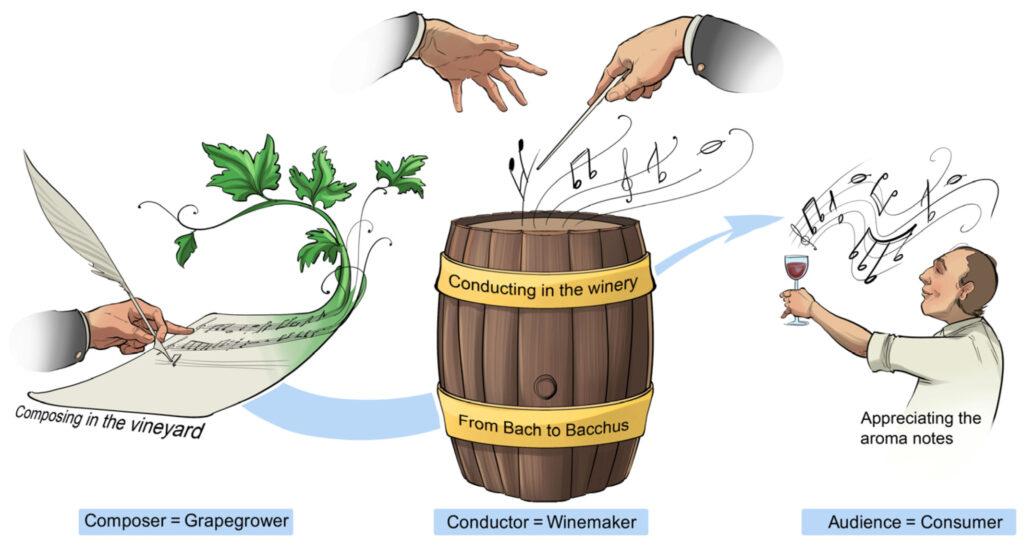
A common metaphor (but that gives a good idea) is the one that associates the birth of wine with music. The grape is the composer, even if I would also add the territory, the vintage, the microorganisms, etc. All these elements are directed by the winemaker, like an orchestra conductor, who knows how to get the most out of each one but, above all, manages to make them work well together. (picture from Isak S. Pretorius (2017) Synthetic genome engineering forging new frontiers for wine yeast, Critical Reviews in Biotechnology, 37:1, 112-136, DOI: 10.1080/07388551.2016.1214945)
In conclusion, the birth of the wine aromas is a kind of magic, which depends on an inseparable union: nature (the grape, with all its differences linked to the territory and vintage) and man (with his work, culture, traditions and choices, as well as his ability), as the poet wrote:
"Drink it, and remember in every drop of gold, in every glass of topaz, in every spoon of purple, that autumn worked for to fill the vessels with wine; and, in the ritual of his work, the simple man has learned to remember the land and his duties, to diffuse the canticle of the grape.
(Pablo Neruda, Ode to Wine)
Bibliography:
Trattato di enologia, P. Ribéreau-Gayon et al., 2013, Edagricole
Aromes des vins, Dossier spécial de la Revue des Oenologues, n.149 Nov. 2013
Agroecology in the vineyard, our present and future
The visitors to our vineyards and territory are particularly struck of finding an uncontaminated environment. They are impressed by our grassy vineyards, made by little particles bordering the wood, alternating with rows of olive trees, fruit trees and hedges. This vineyard managing (perfectly integrated into the environment and in association with other plant species) is the result of an ancient tradition and precise agronomic and environmental choices, which arise from agroecological studies.
[one_second][info_box title="What agroecology is?" image="" animate=""]
Agroecology arises from the fusion of two areas that may seem, at first, very distant: agriculture and ecology. Ecology deals with studying the relationships of a living being with its environment and with the other living beings that populate it. Agroecology applies this approach to a very particular ecosystem, the agroecosystem, the one domesticated and managed by man.
Agroecology was born around the 1960s as a science that studies these aspects in an interdisciplinary way. It has also taken on the characteristics of a political movement in Latin America, integrating within it all the management of the human food system.

Agroecology is one of the key concepts in sustainable management of viticulture. In particular, it concerns the integration of the vineyard in the environment and the preservation of its biodiversity. In other words, on agroecological vision, the vineyard is considered as an integrated ecosystem, where various subjects interacting with each other (vines, surrounding flora and fauna). If appropriately managed, this ecosystem can find an optimal balance, both for better cultivation and for preserving the environment and the landscape.
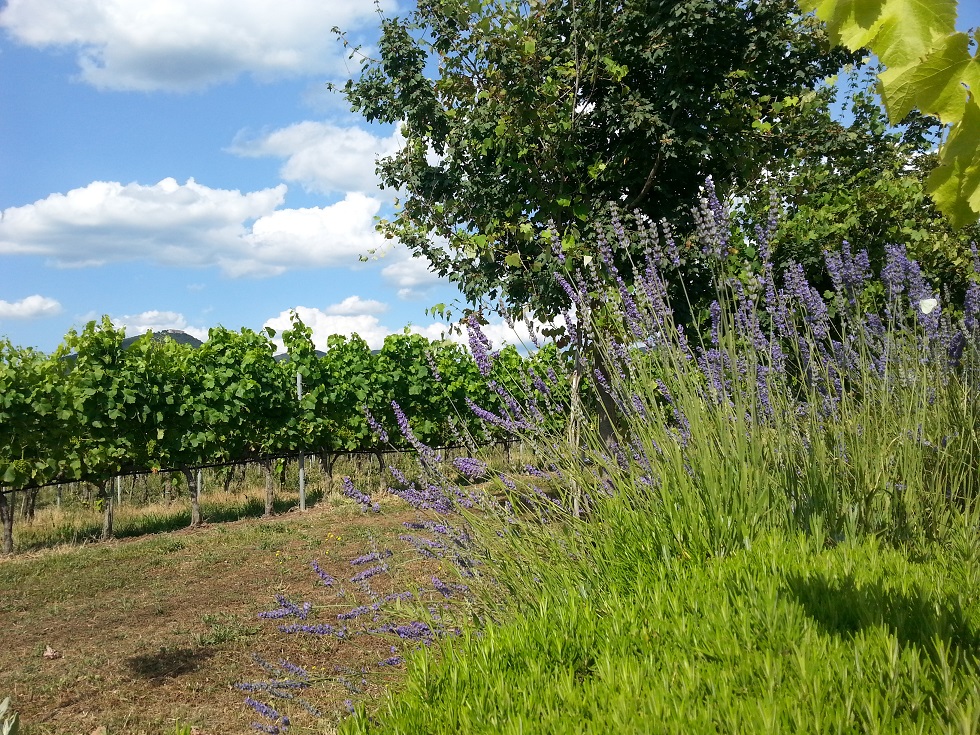
I focus this article on the association of the vine with other plant species, but the same happens with the animal world. A classical example is the application of biological control, based on some insects or mites which carry out their life cycle at the expense of species harmful to the vine. In the recent decades, interactions with even smaller organisms, such as bacteria and fungi, are increasingly being understood. Some of them are harmful, but some instead have interchange functions with the plant, which lead to precious symbionic associations (where both partners get something useful). The best known example is that of mycorrhias, fungi that colonize outside and inside the roots of the vine. This association significantly improves the supply of water and mineral nutrients, as well as the photosynthetic capacity in general. The most recent studies are also increasingly focusing on the microbiota that populates the vine leaves (the set of populations of microorganisms that live in these spaces). Several of them seem to play an important role in maintaining the health of the plant. Some bacteria have been shown to inhibit or delay the growth of harmful fungi for the vine. Some practical applications are also being developed. [/info_box][/one_second]
The amazement of these people is due to the fact that the viticultural landscape of many wine world areas is often very different. It derives from a different management, born with the modern era of winegrowing, which isolates the vine as much as possible from all living forms: bare soil, large areas of vineyards, excessive use of pesticides that (almost) "sterilize" the vines. This model, which has dominated for decades, has now shown all its limits.
The agroecological management of the vineyard was often considered a niche choice, a wrong legacy of the past or a bucolic vision by radical winegrowers (as someone told us!). Today, however, it is increasingly affecting the wine world. More and more scientific publications recognize this system as a valid agronomic model, which represents the best prospect for an increasingly sustainable future of viticulture.
The plant intercropping in the vineyard is part of Italian tradition from thousands of years, even if this approach has been lost in many territories. The most common viticulture in the history has been heterogeneous, with vine rows of vines alternating with other crops. Moreover, the trees often were the support of the vines. Do you remember the "married" vine to a tree, originated in the Etruscan-Roman epoc? It remained the main winegrowing form in the countryside of central-northern Italy until the mid-twentieth century. (I've talked about it several times, mostly here and here).
My talk is not about a naïve or old-fashioned winegrowing. Certainly, the modern era of viticulture has made us learn a lot, but it has also had indisputable excesses. By now, we have understood that viticulture must be sustainable from all points of view: not only for an optimal production but also for the protection of the environment and our health. To achieve this, we have to do the best synthesis between the different paths, taking the best of each.
Research is increasingly demonstrating that the association of vines with other plant species contributes to improving various aspects of viticulture, as part of a whole sustainable management. Let's see, in brief, the main advantages.
The most immediate positive aspect is on the landscape. The geometric lines of huge extensions of monocultures can have some charm. But a landscape where different elements alternate is certainly more beautiful and satisfying. Beauty is not a negligible factor, it fills our eyes and heart. However, the agroecological management does not stop at a beautiful postcard. It gives even more important advantages, both of natural environmental and agronomic, as we shall see below.
An environment rich in different plant species allows greater preservation of biodiversity and the environment. Today, there is a lot of talk about biodiversity in the vineyard and its usefulness on biological control. It is easy to realize that insects or other useful organisms can't try their best life condition in a monoculture environment, where also there are a large use of pesticides often. An environment with numerous plant species is much more attractive. It has many blooms for many months, as well as offering different habitats. Moreover, the vineyard also becomes a sort of "green passageway", which can be crossed by small animals, in their movements among woods and scrubes.water cycle
Research has shown how the presence of trees, shrubs and grass affects the micro-climate of the vineyard. Climate changes are leading to increases in average temperatures, which are causing more and more phenomena of acceleration of grape ripening. Extreme meteorological events are also becoming increasingly frequent, such as torrential rainfall, accentuated drought, etc. The presence of vegetation may be not decisive, but it improves the situation. For example, hedges and trees can be an obstacle to strong winds. The presence of rich vegetation improves local hydrometry, thanks to the transpiration-evaporation of the leaves. The effects of frosts also decrease. On the other hand, in warmer environments, partial shading contrasts the stresses due to thermal excesses and a too intense solar radiation, ...
Trees, shrubs and grass cover have an important influence on improving the quality of the soil. They cause an increase in organic matter and the biological activity of the rhizosphere. One of the most important problems of our Mediterranean climate is the low average presence of organic matter in the soils, due to mineralization cycles that are too accelerated by high temperatures. The numerous roots that explore the soil at different depths facilitate the exchange of matter, as well as helping to maintain a certain porosity that buffers excess water and, on the other hand, reduces drying and erosion.
In general, all the energy flows change: light irradiation, wind turbulence, water and nutrient cycle. For example, studies have highlighted the differences of the carbon fixation cycle in situations of "bare" vineyards compared to intercropping ones, to clear advantage of the latter
In particular, the presence of a rich vegetation determines a positive effect on the rhizosphere microbiota. So, the soil is more rich in fungi, bacteria, earthworms, etc. The presence of mycorrhias increases, because these not only colonize the vines but also other tree species. These fungi, as demonstrated, have positive effects on the photosynthetic capacity of plants but also on their ability to explore the soil for the supply of mineral salts and water. The extra-radical mycelium of the mycorrhias can colonize several plants at the same time, both vines and others, creating a sort of inter-specific cenosis. The presence of more plant species can lead to a greater differentiation of the mycorrhizae present, compared to monoculture, increasing the probability of their spread and survival. The presence of diversified communities of mycorrhias has also been shown to speed up the colonization time of the roots of young vines.
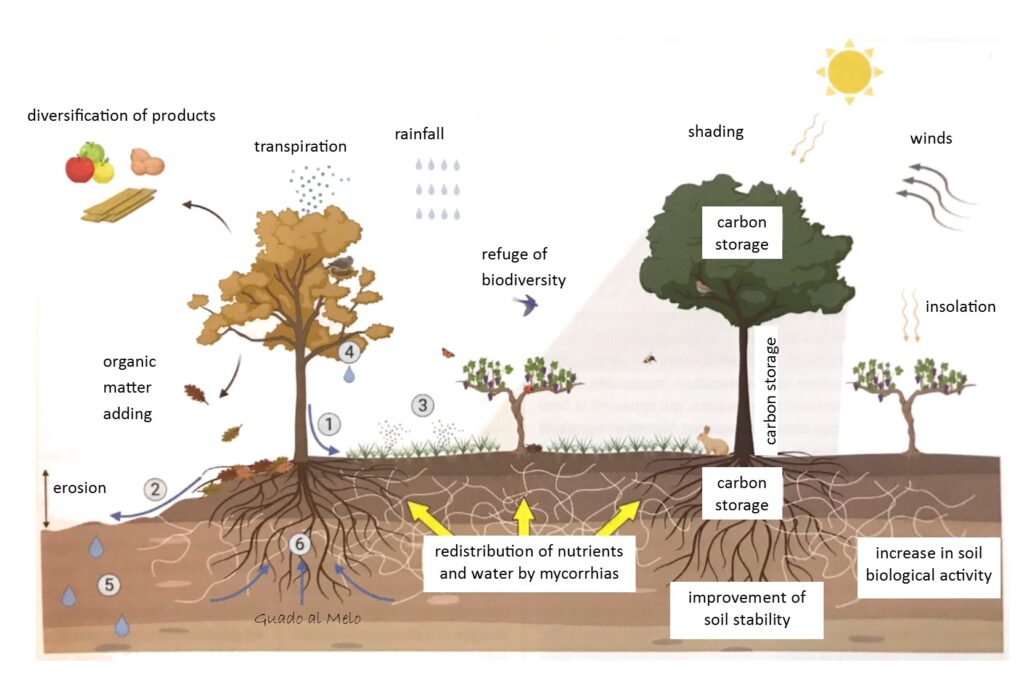
The traditional heterogeneous winegrowing derives from ancient practices, sometimes done with wisdom, sometimes casual. Today, the vineyard agroecology born from studies on the parcel to understand the best arrangement of trees and bushes, the choice of the best species both as essences and as size, etc.
However, I believe that the presence of local species, even spontaneous ones, creates a specific association that is much more interesting than too-constructed projects, also falling within the general concept of genius loci (or viticultural terroir) of that vineyard. We must not forget that one of the main goals of sustainable viticulture should be to minimize human inputs. I think that a too artificial construction of a "false" naturalness is a contradiction, overall if it needs continuous human interventions to be maintained. Optimal management should lead to an agro-ecosystem that balances itself without external interventations as much as possible.
For example, the spontaneous meadow has undoubted advantages over the sown one. Numerous studies have shown that the accumulation of nitrogen available in the soil thanks to the green manuring of some legumes is not significantly different from what can be obtained with spontaneous meadow. If there are no other obstacles, why not leave it to nature, avoiding continuous sowing? The ecological and management advantages are evident: the uses of the tractor are limited (fuel consumption is reduced and too many inputs that compact the soil are avoided), expenses are reduced (it is useless to buy seed when the lawn regenerates from itself), etc. I think it is a contradiction to talk about biodiversity in the vineyard and then set up monoculture also in the soil covering. The spontaneous meadow develops different species, that bloom in different times, in order to create an environment more in tune with the seasons, much more attractive for the local micro-fauna.
I conclude by returning to what is the highest form of association of the vine with other plant species: the vine "married" to the tree, that we have been studying in the field at Guado al Melo for several years. This traditional ancient form is snubbed by the Italian wine world. There is a closure: this vine-training system is seen as old and useless.
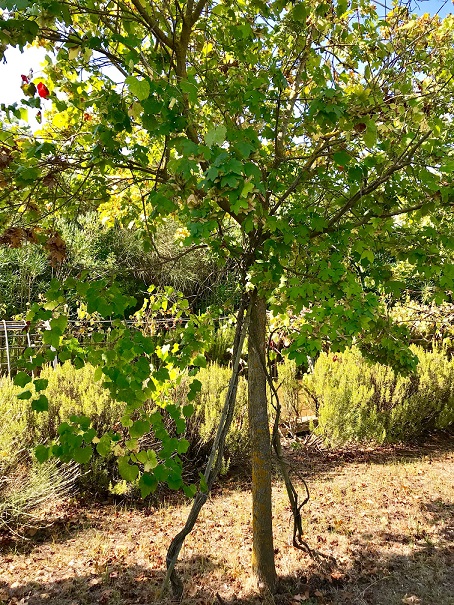
Curiously, I am finding instead more and more interest on "married vines" in the worldwide professional literature. More and more, I find articles and books on the subject, as in the special of the Revue des Oenologues that I quote at the bottom.
As I have already told in the final part of this article, the Romans brought this vine-training system from Italy to the rest of Europe. The French historically abandoned the "married" vine long before us, but they are returning to rediscover it as a interesting path for a more sustainable future of viticulture. For example, the OIV has awarded as best book of 2020 for sustainable viticulture ("durable", in French), a text that talks about intercropping between vine rows, including the "married vine" training system. I'm talking about "La vigne et ses plantes compagnes" by Léa Darricau and Yves Darricau, ed. La Rouergue (2019).
I want to invite the world of Italian wine to wake up. As has already happened too many times for many wine issues, will we wait to understand the importance of our tradition when the French will have taken it in the world as their? Will it seem interesting to us then? Let's meditate!
"Pratique viticoles inspirantes - Agroécologie en action au service du vivant", Revue des Oenologues.., Dossier Spécial, Nov. 2020, n.177
“Agroecology as a science, a movement and a practice. A review” A. Wezel*, S. Bellon, T. Dore´, C. Francis, D. Vallod, C. David (2009), Agronomy for Sustainable Development29(4):503-515
"Vine Roots", by E. Archer and D. Saayman, 2018 The Institute for Grape and Wine Sciences, Stellenbosch University
"La nuova viticultura", a cura di A. Palliotti et al., 2015, Edagricole.
Michele Scienza, according to Wine Advocate, one of the most creative producers of Bolgheri
The American magazine Wine Advocate has published Monica Lerner's opinion on the latest vintages of DOC Bolgheri wines. You can find the article at the link below but, since it is readable only for subscribers, here is a quick guide.
Thanks so much to Monica Lernet and her staff!
We are very happy that we are defined as the most creative producers of Bolgheri. The adjectives he uses most for us (and our wines) are: "crazy", "unusual", "different from its peers", etc. It really seems strange to us to pass for "bizarre" because we are among the few winemakers that yet produce wines according to ancient Italian wine traditions. Any way, everyone has their own point of view! Absolutely, we pride ourselves on making wines that are recognized as non-trivial (or obvious).
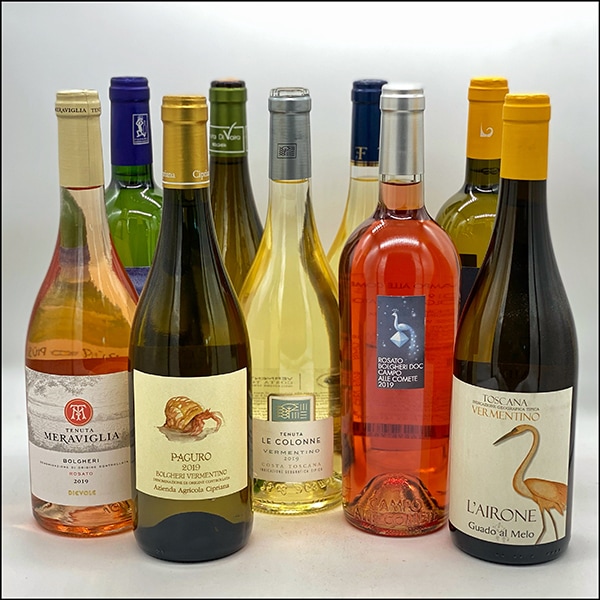 So, she write: "I fondly remember my visit to this estate, albeit many years ago, and have a vivid memory of the crazy Guado al Melo vineyards. Exploring the experimental plots is like being an archeologist of the vine, with so many new and unknown treasures to discover. Michele Scienza and his dad Attilio have a collection of grapevines found nowhere else, all culled from years of overseas exploration and travel. They were brought back from the Republic of Georgia and other ancient locations for Vitis vinifera".
So, she write: "I fondly remember my visit to this estate, albeit many years ago, and have a vivid memory of the crazy Guado al Melo vineyards. Exploring the experimental plots is like being an archeologist of the vine, with so many new and unknown treasures to discover. Michele Scienza and his dad Attilio have a collection of grapevines found nowhere else, all culled from years of overseas exploration and travel. They were brought back from the Republic of Georgia and other ancient locations for Vitis vinifera".
Here, there are her reviews of our wines .
We had to choose between our white wines to be tasted and we decided for L'Airone Vermentino. She certainly appreciated it a lot, as it got an amazing score for its category and price (89).
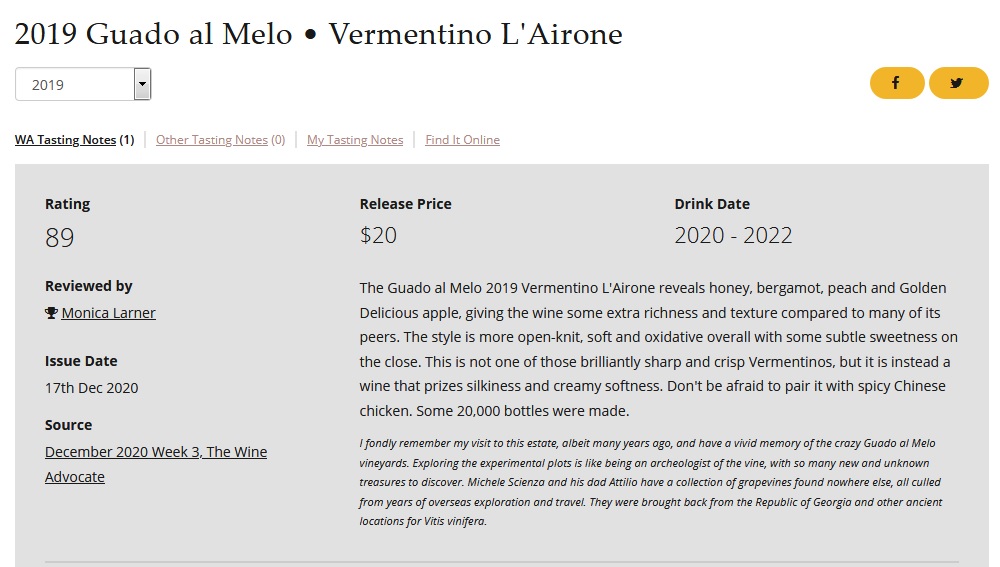
Great appreciation also for the Rute 2018.
I looked for what these Graham crackers are, we don't know them in Italy. I have found that they are very crumbly cookies made with a particular blend of whole flours. Here I also found a recipe, if you want to try it.

She raises the level (and the score, 91) with the Atis 2017.
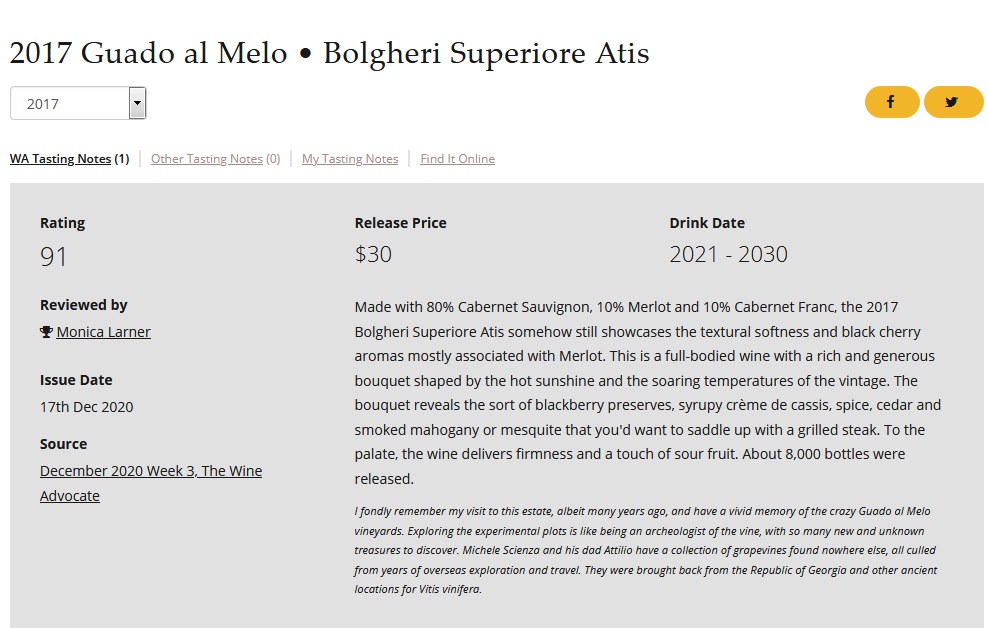
Her favorite was certainly the Jassarte (91+): "You cant' beat this level of creativity".
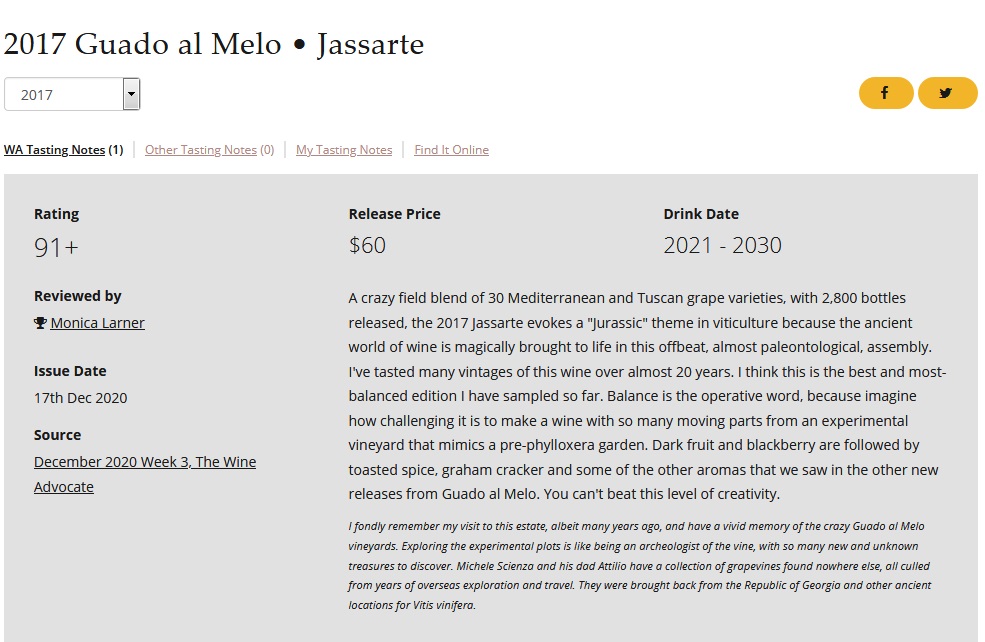
In the general part of the article on DOC Bolgheri, the 2017 vintage is presented. It was certainly not easy but, beyond having led to a significant reduction in production, it was not even so negative in our opinion. The comparison with the Sahara is too hard. Conversely, Bolgheri is a territory that always demonstrates an excellent capacity for resilience. In our opinion, Bolgheri has endured the dryness of the vintage very well, confirming its extraordinary wine-growing vocation.
The harsh and wild Maremma of Bolgheri and Castagneto
Nowadays, our territory is a Mediterranean garden of great beauty, where prestigious wines are produced. In ancient times, come I told here and here, it was a flourishing agricultural area, at the center of an excellent communication and trade system. Wine, olive oil and cereals were produced and traded in the various Roman farms of the area, located as today in the foothills and in the plain around the Via Aurelia.
Instead, in the long intermediate period between these two extremes, the southern Tuscan coast underwent a dramatic transformation: it became a poor and isolated territory, dominated by marshes, with little more than subsistence agriculture. It will remain the same for centuries. How was this possible?
The nature of the place certainly played an important role. The natural coastal marshes have spread without the human intervention of constant management and care of the territory, started with the Etruscans and perfected in Roman times.
The geographical question is certainly decisive but it is not sufficient to explain this involution, which had depended above all on political and social reasons, in any case. The Maremma, perhaps too far from the centers of power of the time, became only a land to be plundered, without the rulers caring about its development in the least. This management and local poverty made the social situation very stagnant, with a feudal approach that prevented for centuries the birth of a dynamic class of landowners, able to lead a development of agriculture (including viticulture), as it happened in other parts of Tuscany.
For centuries, therefore, the Maremma was not the sunny place of holidays it is today. The name Maremma was the synonym of poor and wild land. This condition remained more or less until the 19th century, for some areas even for the first half of the 20th century.
It is the Maremma that Dante cites in the Divine Comedy as a comparison for the sad wood of suicides, an intricate and malevolent forest, full of brushwood and fearsome beasts. It defines it with those it considers its borders: Cecina to the north and Corneto to the south (the medieval name of the actual Tarquinia):
“[…] non han sì aspri sterpi né sì folti
quelle fiere selvagge che ‘n odio hanno
tra Cecina e Corneto i luoghi cólti.”.
It is the Maremma that, still in the nineteenth century, made the life of its inhabitants and seasonal workers precarious, due to the malaria, as recalled in this famous Tuscan folk song:
"Everybody tells me about Maremma, Maremma...
But it seems to me that Maremma is bitterIf a bird goes there, it's bound to lose its feathersI lost a loved one thereMay Maremma, Maremma be damnedAnd the one who loves it may be damned as wellMy heart cries whenever you go thereAnd I am afraid you will never make it back,...".Maremma amara ("Bitter Maremma") Tuscan folk song
Our municipality of Castagneto Carducci is in the northernmost part of the Maremma, called Alta Maremma (High Maremma) or (in the past) also Maremma of Pisa.
The wine producing
Throughout Italy, wine production in the Early Middle Ages was significantly downsized compared to the flourishing Roman era, but it never completely disappeared. The story was very different in central-northern Europe, where viticulture had been brought by the Romans. It almost completely disappeared where winegrowing was made difficult and expensive by an unfavorable climate. It survived only thanks to the monastic orders and the Church. The religious production was then joined by a noble one, of nobles and princes, for whom wine was a symbol of prestige and power.
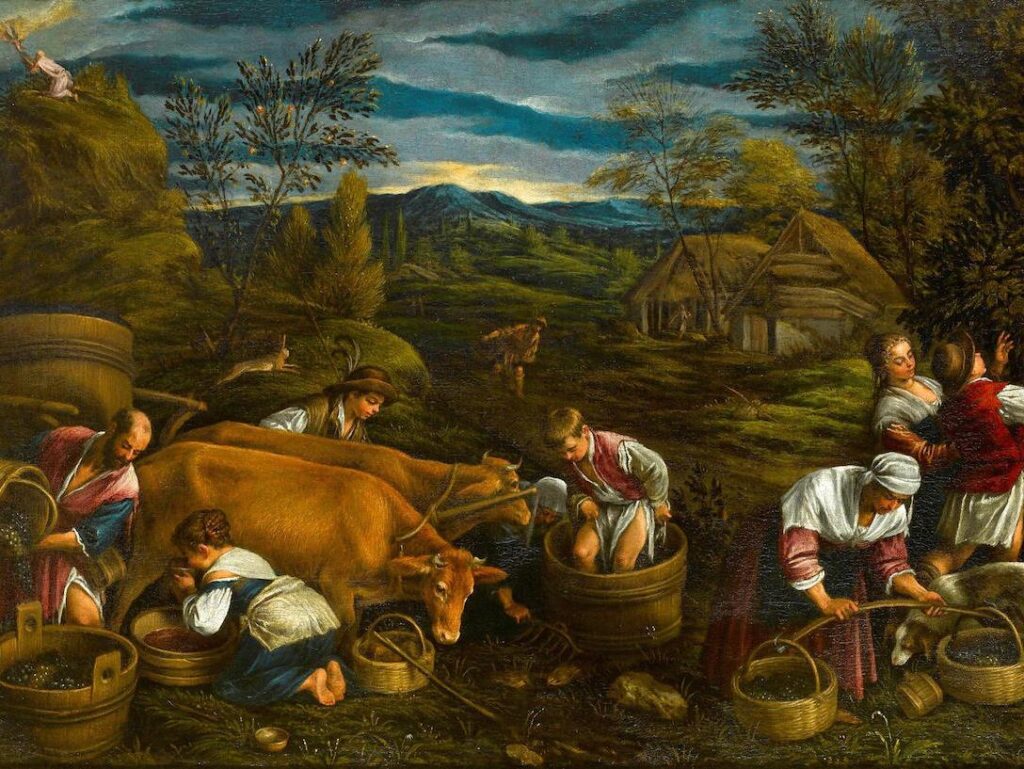
Instead, the peasant production always remained in the Mediterranean area, such as Italy, where the vine grows luxuriantly without too much effort. It had already returned to good quantitative levels by the end of the Upper Middle Ages, with the resumption of trade. Almost all the Italian Municipal Statutes of the time were concerned with regulating the production of wine, duties and so on.
However, the refined Roman techniques were lost everywhere and there was a more primitive production. It will take centuries to recover much of this knowledge. A truly substantial transformation will be thanks to the discoveries and innovations of the second half of the nineteenth century.
Medieval viticulture was generally characterized by closed and protected vineyards, realized close to the villages and also within the walls of villages and cities. The spaces to be exploited were limited and therefore the cultivation of low vine training systems prevailed. From the Renaissance, with the return to open fields, the vine trained ("married") to the tree will return to prevail in central Italy. As already told here in Roman times, one and the other form (with all the local variations) will never completely disappear in Italy. One or the other will prevail according to historical eras and local traditions.
Even in our territory, the vine and wine did not disappear even in the darkest times. The presence of the vineyards around Castagneto is mentioned since the first written document of the Early Middle Ages (754 AD) and in subsequent ones, with a certain increase in the seventeenth-century and, above all, the eighteenth-century noble properties.
I have grouped this long period because unfortunately we have no info on what viticulture and local wines of these times were like. We only know that it was a production essentially dedicated to local consumption, without further development due to the general difficulties of the territory at the time. There will only be a productive leap in the nineteenth century, but I will talk about this in a future post.
A peculiarity is that the Maremma peasants, alongside the production in the vineyards, still continued to use the wild grapes of the "Lambruscaie" for centuries, the aggregations of wild vines in our woods from which viticulture had originated thousands of years earlier (see here). As described by Emilio Sereni, there has almost never been a clear separation between the agricultural-pastoral environment and the natural one in Italy. I like to think that this tradition is not dead and is returning to the idea of agro-ecology that we are trying to apply to our day.
Let's now see how the landscape and agriculture of our territory have been transformed over these long centuries, when the Maremma was still poor and wild.
Maremma of the hilly villages.
Between the final part of the Roman Empire and the beginning of the Early Middle Ages, there was a political vacuum, accompanied by barbarian raids and wars, that dramatically transformed our territory, like all of Italy. Between the sixth and eighth centuries, the area was almost depopulated and the settlements increasingly moved to the hills. They tried to escape the progressive advance of the coastal marshes but also to move away from the Via Aurelia, that was up to then the central axis of the territory but which by now had become the gateway to barbarians and armies.
People came back to live the pre-Roman places, where it was easier to protect oneself and hide, with nearby sources and woods for sustenance, as agriculture was no longer sufficient.
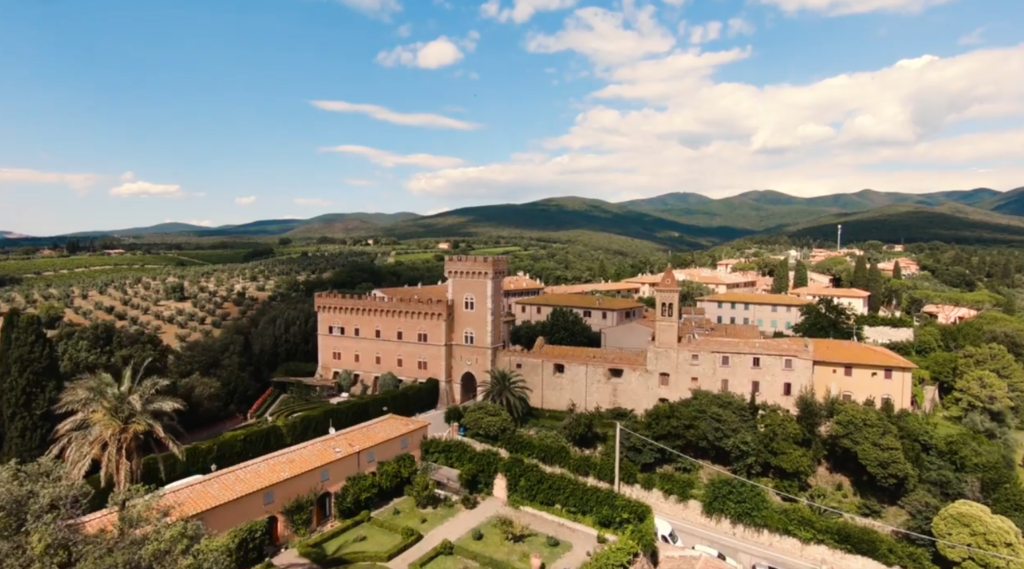
In fact, within a few generations, many of the knowledge and techniques were been lost in every field. Villages returned to being made up of huts. In some areas of Tuscany, people had even came back to live in the caverns. The use of stone will only be recovered towards the 9th-11th century, first for the defensive walls, the stately homes and then the rest.
In this period, the structure of the Maremma landscape was born, whose imprint is still visible today:
- The part of the coastal plain was dominated by marshes, reeds and scrubland.
- The foothill and first hill area was inhabited and cultivated. Here the settlements were formed. Later they became medieval villages and castles. The crops were placed around the villages. Closer to the houses (and later also within the walls) there were vineyards, vegetable gardens, olive trees and other fruit trees, well protected from wild and non-wild animals, as well as humans. Cereals and other crops (such as textile fibers) were grown in larger spaces, a little further away from the villages. The individual plots were called mansi. they were on the different sides of the hills, to take advantage of the different exposures to the sun.
- The highest hills were instead dominated by woods, the true central axis for the life and economy of the time.
[one_third][info_box title="" image="" animate=""]The Lombard dominion began in the 6th century; the local power center of the duchy was in Lucca. In 730 A.D. around, a more local lord was appointed, the count Ratcauso, sent to the territory especially with the task of defending mineral resources from pirate attacks. Castagneto is mentioned for the first time in a document dated 754 AD, in the list of assets given to the nascent Monteverdi Abbey, founded by Ratcauso's son, Walfredo. Bolgheri is mentioned for the first time in a papal bull of 1075, with the name of "Sala del Duca Allone" (Duke Allone's House), when the Franks had already taken over the Lombards. The presence of the castle is reported in 1158. Other castles were built on the intermediate hills: Castiglioncello (Little Castle) of Bolgheri and that of Segalari.
The actual few remains of the Donoratico Tower (not the current Donoratico village, which was born at the end of the 19th century) mark a site of very long residential stratification. Do you remember that I already talked about it in the Etruscan era and then in the Roman one (here)? Archaeologists have also found the remains of huts from the early Lombard period (called grubenhaus), from around the middle of the 8th century. Later the village of huts became a small fortified village and then a castle. This place was finally abandoned in the 16th century, perhaps following a siege or a plague (or both). This definitive abandonment, after millennia of housing continuity, remains a mystery to scholars.[/info_box][/one_third]
The new hillside settlements almost never included religious buildings. The churches mostly remained where they were in the Late Empire, on the plain, near the main Roman roads. This is another typical feature of the Tuscan countryside landscape: hilly villages and lowland churches, where inhabitants of different settlements met. Only later, after the IX-X century, the churches will enter the villages, built by the new lords as a sign of prestige.
Maremma of the woods
At this time, the forest recovered a large part of the territory throughout Europe; this phenomenon lasted at least until the tenth century. The forest became the center of the economy, due to a now secondary agriculture. In our area, where agriculture never developed much at least until the nineteenth century, the forest remained central for a long time. Even today it dominates a large part of our hills and the culture of the territory.
Wood was collected for all uses, first only for subsistence. Then it became an important economic resource, whose monopoly was in the hands of governments and their feudal lords. Timber and other products were transported by sea from localities that were natural ports along the coast, often located at the outlets of streams: Renaione, Seggio, Bassa, Paradù. Today they are beautiful beach places.
Wood was collected for all uses, first only for subsistence. Then it became an important economic resource, whose monopoly was in the hands of governments and their feudal lords. Timber and other products were transported by sea from localities that were natural ports along the coast, often located at the outlets of streams: Renaione, Seggio, Bassa, Paradù. Today they are beautiful beach places. In the woods they hunted and gathered spontaneous fruits. Here there were many chestnut groves (it is not a coincidence that the capital of our municipality is called Castagneto, that means "chestnut grove" in Italian), much more than today. The oaks gave acorns, used for animals but also for humans. The manna was obtained from the manna ash tree, a sweetener extracted for centuries in Maremma. This production will end at the beginning of the nineteenth century, when the consumption of imported cane sugar became common. Then, there were various fruits: blackberries, strawberry trees fruit, mushrooms, etc. The forest was for centuries the reign of the charcoal burners, both for domestic production and for the supply of iron smelting furnaces, one of the main economic resources of our lands since ever.
Livestock were mostly raised in the wild in the woods and uncultivated pastures. Pigs were predominant, left in the woods almost all year round and only put in the shed in winter. For a long time, they were the main source of fat, replacing olive oil, whose cultivation was in decline after the Roman era. The semi-swampy woods of the coastal area were instead suitable for the wild breeding of buffaloes, managed by herders and the typical Maremma herders on a horse, called "butteri" ("buttero" in the singular form). The presence of the wild buffalo is very ancient, evidenced at least in Roman times. Yet, the French naturalist Buffon wrote, in the 18th century, that the buffalo was introduced into Italy by the Lombards and this theory is reported in various texts. The buffaloes wandered around our plain until the early decades of the nineteenth century, when people switched to breeding only in the stables. Today they have completely disappeared.
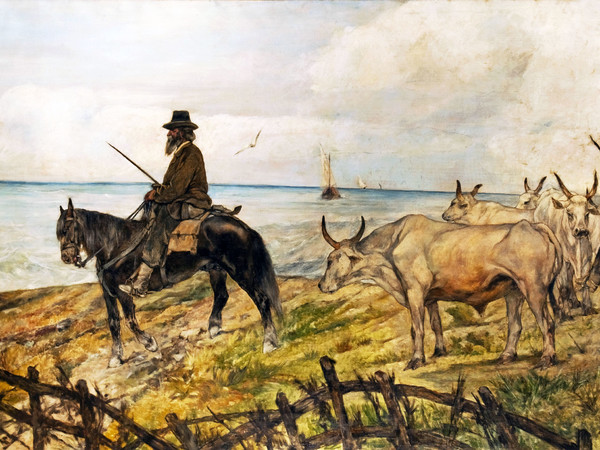
Maremma of peasants and nobles
The first aggregation of the villages, born in the period of power vacuum, originated equal peasant communities, where agriculture was often managed on a community basis or for families.
The transformation of the villages into fortified ones took place more or less between the 9th and 11th centuries, with the reaffirmation of a hierarchy of local power. According to scholars, some figures induced the weakest families to sell their properties in exchange for protection, accumulating wealth, prestige and decision-making positions over time. The centralization also included agricultural lands, with the birth of landed property, which became increasingly large, organized around the curtes (courts). The manorial farm was similar to the villa of the late Roman Empire (which I explained in the final part of this article). It was divided into small plots, "mansi", entrusted to the peasants. A part of the fields was managed directly by the lord, with the work of servants and the forced work of the farmers.
Sharecropping, which will have a central role in much of Tuscany starting from the year one thousand, spread here very late, not before the 18th-19th century. The farmers of the Maremma have almost never lived in the countryside, except in recent times, also due to the frequent pirate raids, as evidenced by the many watchtowers scattered along the coast. The peasants worked in the fields during the day and returned to the safety of the fortified walls of the village at night. This ancient use will long deprive them of the right to a farmhouse and livestock by the lord.
The rampant poverty and the very long feudal setting have polarized the local social classes for centuries, not allowing for a long time the birth of intermediate classes that, everywhere, have been promoters of the transformations and developments of the territories.
[one_third][info_box title="" image="" animate=""]At the end of the Lombard and Carolingian age, new protagonists assert themselves along our coast: the families of the counts (Aldobrandeschi, Ardengheschi, Gherardeschi, etc ...) and the bishops of the Maremma dioceses.
The Gherardesca counts begin their certain history in the mid-twelfth century, when the territory passed under the Republic of Pisa, and they maintained power even with the subsequent passage under the Florentine Republic (early fifteenth century). The three villages of our territory became autonomous municipalities in this period: Donoratico (not the current one, but the ancient one on the hill) (1407), Bolgheri (1409) and Castagneto (1421), in continuous conflict with the count. His residence was the castle of Castagneto and for this reason it became the capital of the Community.[/info_box][/one_third]
Since all the lands (or almost) belonged to the counts, the access to the goods of the territory by people was regulated by the "civic uses", use rights by the inhabitants for grazing, gathering in the woods, fishing, etc. Some were direct descendants of the Roman-era rights on the public property, others were novelties. For example, the poors picking ("ruspo") was allowed after the owner's harvest in the chestnut grove. There was the "ius pascendi", which allowed the livstock grazing on the land where the owner had already harvested. The "ius lignandi" made possible to collect some wood for family use in the woods of the lord or the municipality. The hunt was never possible, especially big game, which remained exclusive to the lords. The conflict over the use rights between local communities and noble families was the occasion of numerous disputes and clashes up to the mid-nineteenth century.
From the thirteenth century onwards, poverty and very strong social inequalities led to the birth of brigandage in Maremma. The Florentine deputy Oreste Massari, in the nineteenth century, defined it as "the savage and brutal protest of misery against ancient and centuries-old injustices." The end of the Maremma brigandage was marked by the killing of the last greatest brigand, Domenico Tiburzi, in 1896.
Maremma of transhumance.
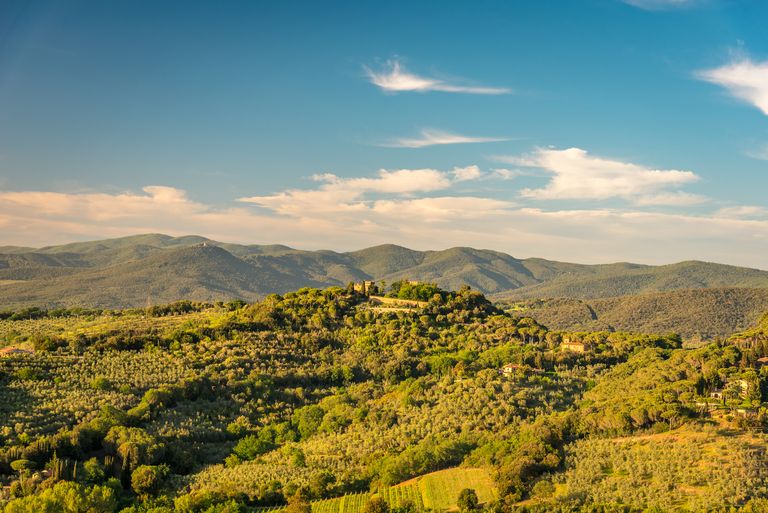
However, the period of relative peace of the early Middle Ages led to an increase in the population throughout Italy and a contraction of the woods in favor of agriculture. In Maremma, however, this good moment did not last long and did not have many positive effects. For example, nothing was done to reclaim the marshy areas which, on the contrary, expanded even more after the political decline following the defeat of Pisa in the 13th century.
The beginning of the Little Glaciation, at the beginning of 1300, brought famines and epidemics, such as that of the Black Plague. Tuscany was hit hard. The population decreased by 80% In Maremma. The most striking case was Grosseto, which increased from 1200 to 100 inhabitants. In Castagneto the population was practically halved
The uncultivated places and the woods have always been used for pastoralism and transhumance but from the Late Middle Ages, with the lowering of the population, this became a real business for governments and their feudal lords. The rent of the pastures expanded, influencing in a decisive way the lack of agricultural development of the Maremma.
The flocks arrived in the north Maremma from internal areas of Tuscany (Casentino, Mugello, Lucca), even from Bologna and Perugia, attracted by the local mild climate, from late autumn to early spring. A tax was paid for each animal, regulated by the "Customs of pastures".
This economy was increased even more from the sixteenth century onwards. The landscape was more and more modified by the increase in transhumant flocks and by the use of fire for their enlargement. The great spread of the Mediterranean scrub, that still exists today on the hills, is a sign of a very unnatural environment, the result of constant human action.
[highlight background="#B2BA97" color="white"]The Mediterranean scrub is an intermediate phase of the evolution of spontaneous vegetation in our environment. The cycle steps are as follows, if no external disturbances occur. After a fire, herbaceous plants are reborn and the prairie is formed. After that, small shrubs develop (such as phyllirea, thyme, cistus, rosemary, etc.). In land where these shrubs are interspersed with numerous rocks and the cycle will not go on, there is the garrigue ("gariga"). When shrubs become predominant, we have the low scrub ("macchia bassa"). Then, higher shrubs can take over (strawberry tree, myrtle, spiny broom, mastic tree, etc.), which form the tall scrub ("macchia alta"), the one that is commonly identified more with the name of Mediterranean scrub. Among these tall shrubs, some trees become more and more numerous (downy oak, holm oak, Aleppo pine, etc.). A mixed formation is born, in Italian "forteto" (I haven't find an English term). Then, the trees become more and more predominant and we arrive at the final evolution, the Mediterranean wood.[/highlight]
Maremma which, with difficulty, starts to become agricultural
[one_third][info_box title="" image="" animate=""]The Florentine Republic then became the Medici Grand Duchy (1569), but the situation did not change much in Maremma and the same feudal settings were maintained. In 1737, the Habsburg-Lorraine dynasty took over the leadership of the re-named Grand Duchy of Tuscany. Towards the end of the century, a first era of reforms began. Some contributed a little to stirring the stagnant social situation and finally led to the birth of a new (small) class of agricultural owners. From 1799 to 1814, Tuscany was occupied by the French. This led to the abolition of the fiefdoms and the counts became real owners. After the return, the Grand Duchy of Tuscany tried to stimulate the cultivation of uncultivated land, yet encouraging the large land ownership.[/info_box][/one_third]
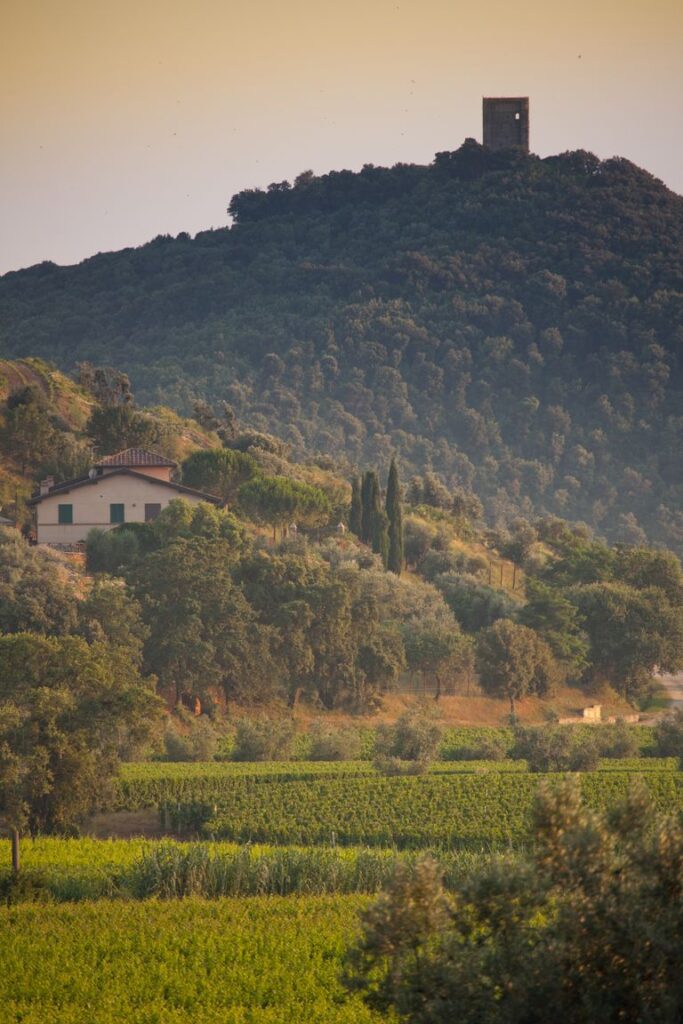
In the seventeenth and eighteenth centuries, the counts, due to the low rents of the lands, were also pushed to make them pay more with rents or transfers, which gave way to an initial expansion of agriculture. It was a timid beginning: in fact, still in the mid-eighteenth century the plain was largely occupied by wooded and marshy areas, the hills with woods and pastures.
The counts of Bolgheri increased the rents to the peasants. So, the farmers began the first deforestations near the village, for agricultural purposes. There was a very unfavorable sort of sharecropping ("mezzadria"). So, they weren't called "mezzadri" but "mezzaioli": they had to divide the products in half with the owner but without the right to a farmhouse and livestock. Another type of contract, whose name has remained in the local toponyms, was the "terratico", in which the agreement was that for each sack of wheat the peasants had for sowing, the owner had two sacks of the product back. At the end of the 1600s, the count took back some of the rented land, to begin to take care of agriculture himself.
Instead, in the area around Castagneto, under a different branch of the Gherardesca family, there were another kind of agricultural contract, called "livello". It was a type of agrarian contract born in the Lombard period, similar to the Roman emphyteusis. It was a more advantageous rent for the farmer, often of a long duration, with which the lease-holder fully enjoyed the property in exchange for a money rent. There was an obligation to improve the propriety but also the possibility of redeeming the property or selling the rent contract. In fact, it paved the way for the born of a new class of landowners.
First "livello"-contracts date back to the seventeenth. In 1784, the Grand Duke Pietro Leopoldo rented out as "livello" various ecclesiastical and community properties. In 1788, the count della Gherardesca gave various lands as "livello" to the Castagneto's inhabitants in exchange of the end of the use rights. The last contracts dates back to 1849, when the count ceded several lands to the municipality which he then, in turn, ceded to the citizens. For each "livello"-contract, there was a transformation of the landscape, with the growth of agricultural crops.
So, agriculture, up to then practically subsistence, finally began to grow. The classic Mediterraenan triad was mainly cultivated: wheat, vines and olive trees. At the end of the eighteenth century, the cultivation of corn also developed, brought by seasonal workers called "Lombard" (although they mainly came from the Tuscan-Emilian Apennines).
This timid agricultural increase, however, was not easy: even nature seemed against. For almost the entire eighteenth century, the region was periodically invaded by locusts, a disconcerting biblical catastrophe, never happened before and, so far, never repeated (fortunately). In Piombino, on 23 June 1711, around 6.00 pm, a dark mass appeared on the sea and a cloud of locusts quickly covered the whole countryside. The invasions of grasshoppers repeated themselves periodically until 1786, spreading up to Castagneto and Sassetta, south to Massa Marittima and Gavorrano, destroying numerous cultivated lands.
In the second half of the eighteenth century, the grand duke pushed for the construction of the first farmhouses ("casali") of our territory. [info_box title="" image="" animate=""]A great estate was divides in smaller parts, called "poderi" in Tuscany. Each "podere" was entrusted to a peasant family, who lived in the "casale" (farmhouse). [/info_box]Unfortunately, to limit costs, the remains of abandoned buildings were looted. Thus, all the still existing finds from ancient times disappeared, such as the last original stretches of the Via Aurelia and the remains of Roman villae (farms). Do you remember the tombstone I told you about here? It was found in the wall of a stable. In the mid-nineteenth century the remains of the Roman villa called "Of the Mosaic" disappeared in this way (see here). The same happened for the remains of medieval buildings such as the abbey of Saint Mary in Aschis, Saint Columban, parts of the Castle of Donoratico (at the time, the remains were much larger; today, there are only the ruins of a tower), etc.
Accused by the Grand Duke of keeping their lands badly, the counts also began to do the first works of reclamation of the marshy areas and improvement of the roads. So, at the end of the eighteenth century, construction began on what will become the famous cypress boulevard of Bolgheri.
Here we stop, on the threshold of the period of the greatest transformation of our territory. We will then see how the nineteenth century was the century of the first important expansion of viticulture in our area.
This is where the era of the harsh and wild Maremma formally ends for our territory.
The expansion of reclamations and the development of specialized crops in the nineteenth century definitively transformed this territory into agricultural. Therefore, it was not considered longer part of the Maremma, according to the definition of the time. The inhabitants were happy, because this membership was considered dishonorable at that times:
“despising the ancient and defamed name with a good reason” (Beccarini, 1873).
"Il paesaggio come risorsa", di Mauro Agnoletti, Edizioni ETS, 2009.
"Vini Bolgheri e altri vini di Castagneto", di Luciano Bezzini, Enrico Guagnini. Casa Editrice Le Lettere, 1996.
"Dominare e gestire un territorio: ascesa e sviluppo delle signorie forti nella Maremma toscana centrosettentrionale tra X e XII secolo", Giovanna Bianchi, Archeologia Medievale, XXXVII, 2010, pag. 93-103.
"Castello di Donoratico, i risultati delle prime campagne di scavo (2000-2002), a cura di Giovanna Bianchi, Ed. All'Insegna del Giglio, 2004
"Il discorso del vino", di Pietro Stara, ed. ZeroinCondotta, 2013
"L'insediamento altomedievale nelle campagne toscane", di Marco Valenti, Ed. All'Insegna del Giglio, 2004
"Storia del paesaggio agrario", di Emilio Sereni, Ed. Laterza, 1961
Welcome Antillo 2019! About traditional grape varieties and a marvelous amphora.
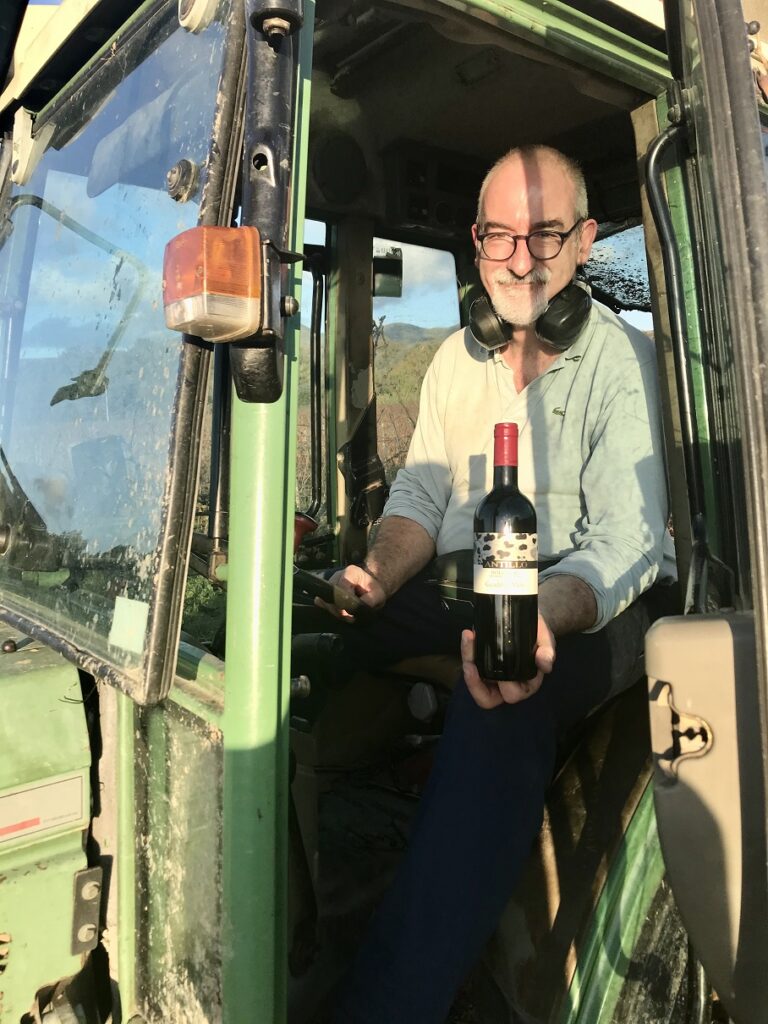
Antillo is our Bolgheri Rosso which explores the more traditional style of our area.
The local wine history is ancient, as in all of Italy. Today Bolgheri is essentially linked to international varieties, but in the past there were also other more ancient ones. Among the red ones, there were above all Sangiovese, Canaiolo Nero, Malvasia Nera, Alicante (called Cannonau in Sardinia), etc. All these varieties were always vinified as a blend, a field or cellar one (many of these are present in the Campo Giardino vineyard, which originates our wine Jassarte).
The Sangiovese was however the leading one and, with Canaiolo, it will remain the main red variety for almost the whole of the twentieth century. In fact, these will be the two most important varieties of the first DOC born in the territory, in 1983, in the production of Bolgheri DOC Rosato (rosé)
The decline of Sangiovese began in the 1980s, the decade that saw, with the early 1990s, the most radical transformations of local production. Despite this, it was still maintained with the substantial modification of the DOC Disciplinary in 1994, admitted in the production of Bolgheri red and rosé wines for a maximum of 70%. In 2011, with a new modification, it was downsized even more, admitted for a maximum of 50%.
However, the persistence in the DOC Disciplinary has not prevented its almost disappearance: today Sangiovese represents less than 1% of red varieties in the Bolgheri vineyards. We are among the few to have it in our vineyards and among the very few to use it in a Bolgheri DOC wine.
We had wanted to keep it for historical reasons. We have evidence of the presence of Sangiovese in our vineyards from the beginning of the nineteenth century, when our farm became part of the great Espinassi Moratti estate (in 1820-1821), which has left a very detailed documentation.
However, re-proposing this historic grape-territory bond is not only a nostalgic operation, but allows us to create a wine with a very well-defined character. It differs considerably from our other Bolgheri (Rute and Atis, Bolgheri Superiore), which instead represent our expression of the contemporary local production.
Antillo is our youngest Bolgheri, characterized by a great freshness and very fruity aromas. The blend with Cabernet Sauvignon accentuates its complexity and enriches the structure. Finally, a small part of Petit Verdot contributes to its liveliness, as well as giving intense spicy notes.
The 2019 vintage presented intense climatic contrasts, but in general we consider it very good. After a rainy winter, the spring started hot and dry. Then, May was characterized by rain and low temperatures, with delay in all the subsequent phases of the vines. The summer had very hot peaks, but without humidity. The harvest period was later than usual, as expected, but always characterized by good weather. We harvested the Sangiovese and the Petit Verdot on September 24th, the Cabernet Sauvignon in the first days of October. The vintage gave rise to a wine that, as usual, is very fine, pleasantly acidic, with intense fruity aromas, especially of strawberry and cherry, and spicy aromas, where black pepper prevails. The great freshness counterbalances an important structure (it is over 30 g / l of dry extract) and makes it very drinkable.
Everything of this wine concerns the vineyard: from the name (Antillo means "sunny place", a perfect description for our territory) to the design on the label, which represents leaves and bunches of vines from an Etruscan amphora.
The picture of leaves and bunches of the Antillo label comes from the Hydria Ricci, a famous amphora from 530 BC. approximately, found in Cerveteri and kept in the National Etruscan Museum of Villa Giulia in Rome. Ricci is the name of the archaeologist who found it. What is a hydria? This name indicates the particular form of amphora that was used to contain water in ancient banquets, that was always mixed with wine before the consumption.
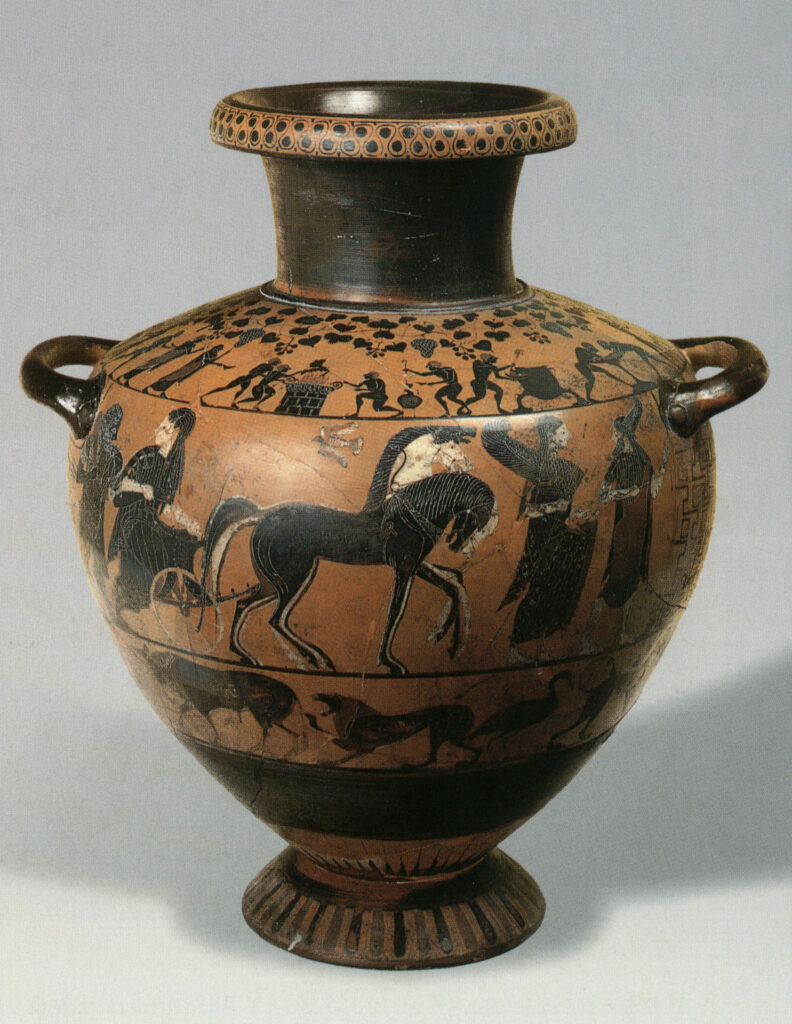
On the shoulder of the amphora, turning all around, there is the intertwining of vine shoots and ivy from which I designed the label of the Antillo. The vine and the ivy are the two symbols of Dionysus. Do you see that the leaves are different? Those of ivy are similar at the spade symbol of the playing cards. The vine leaves are trefoil and with dots on the edges, perhaps to simulate serration. The grape bunches are well recognized from the ivy berries.
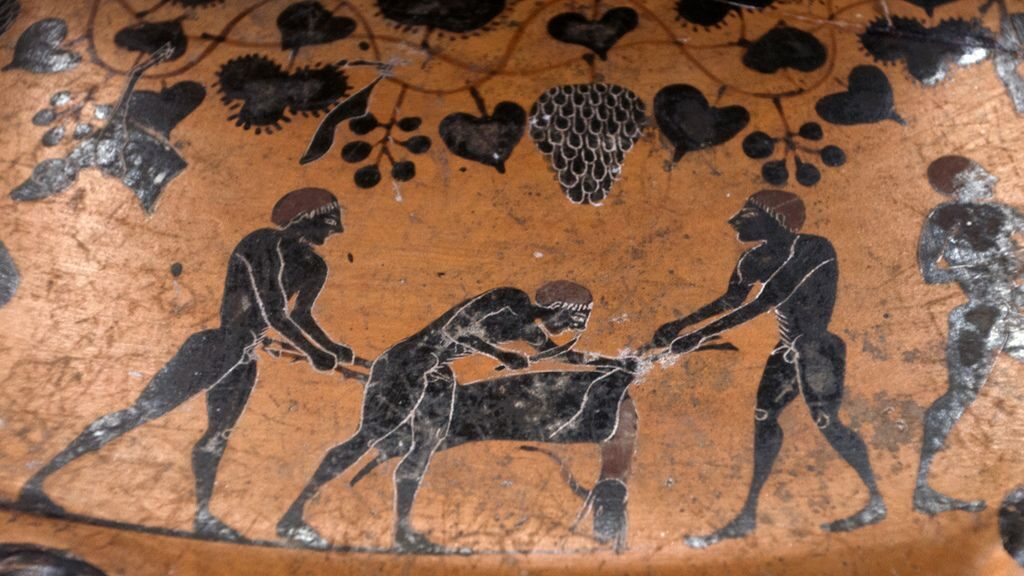
We see a sequence of very animated actions of characters under this pergola, which perform animal sacrifices, then cook them, and draw wine from amphorae. A bearded man (on the left in the detail of the amphora below) holds the kantharos, a two-handled cup used for wine and symbol of Dionysus. With the other hand, he points to a large grape bunch above him.
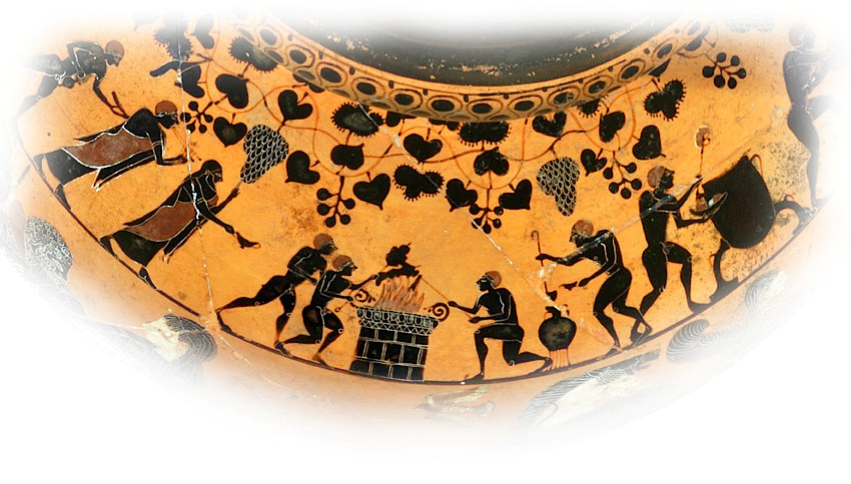
It seems that this complex scene celebrates the introduction to humanity of the cultivation of the vine, with the sacrifices necessary to guarantee a good harvest. The important character could be Dionysus himself or Icarius, the first man (according to Greek myths) to receive the teaching of viticulture from the god, or Maleas, the helmsman of that myth that tells of when the Etruscans kidnapped the god of wine (which I have described in the last part of this text here). On the body of the amphora there are mythological scenes that are linked to the stories of Heracles and Achilles.
I won't dwell on it: if you want to know these beautiful myths and their symbolisms in detail, I refer you to this short video where the director of the Villa Giulia museum tells them. If you don't understand Italian, however, you can admire better the pictures on the amphora.
https://youtu.be/g9LFjG4En2M
Top prize to our wine Atis Bolgheri DOC Superiore by Bibenda
Thanks so much to the staff of Bibenda, for the important prize to our wine Atis Bolgheri DOC Superiore 2017!
Thanks to our visitors and new opening hours
Our seasonal opening ends with October. Thanks so much to people who visited our winery in the last months, from Michele, Katrin Jadranka and me.
We tasted our wines together. You saw where and how we work, you explored the wine history and culture in our little museum. We told you about Bolgheri, Etruscan winemakers, wild and domesticated vines, craftsmanship production and care of the vineyard, co-fermentation, modern and pre-phylloxera period vineyards, sustainable innovation and much more. It has been a great pleasure for us.
We continue with the guided tours with tastings, by reservation only. It is also possible the wine purchase during our office hours (or by delivery via courier).
The visits will be possible unless there are a new closure due the virus Covid-19, of course.
Atis, TreStelle Oro prize
Our wine Atis Bolgheri DOC Superiore 2017 has received an important Italian prize, by the Veronelli Guide 2021, the Tre Stelle Oro (Three Golden Stars). Thanks to the Veronelli's staff.
Rute wins the TreBicchieri Award by Gambero Rosso
Michele and I were amazed when we learned that Rute had won the TreBicchieri Award by Gambero Rosso. We were surprised that Gambero Rosso had decided to reward not only the top Bolgheri wines, such as the Superiors, but also the Reds (the entry level). We are happy with it.
Thus, Rute also enters the group of our wines that have received critical acclaim, after Atis, Jassarte and Criseo. And it made it with a very important prize. It confirms, once again, that our entire production is of great value.
If I have to describe Rute ("red", in Etruscan) in one word, I would say elegance. Unfortunately, this word is very overused, even for wines that are anything but elegant. Elegance is made up of fine and complex aromas, a right concentration that is lightened (but not trivialized) by a great freshness, which translates into gustatory verticality. Rute is a red that also has very good aging potential, which can reach 10 years.
These characteristics arise from the Genius Loci of our vineyards, among the hills of Bolgheri. It is a marine and windy area, a Mediterranean territory. In our hills there are strong summer temperature variations between day and night. Our soils are alluvial, very deep and well-drained.
The quality of a winery is truly measured on the basic wines than the top ones. If they also are good, it means that the vintner are able to work well always, where it is not easy and obvious. And with a pinch of pride, I say that our craftsmanship is always the same: we take care with extreme love of all our vineyards and every batch of grapes that enters the cellar.
Switching from highly aged wines to younger ones should not mean a decline in the quality of the grapes or less well working . It means working differently. Once the most suitable particles of vineyard for one or the other type have been chosen, it means working at best to help the vines find different productive balances, in order to have grapes with different balances and concentrations, perfect for the type of wine they will originate. So it will be in the cellar: there will be different routes, but equally cared for.
The vinification of the Roman era, the origin (2): the oenological practices
Continued from here
Let's enter into the detail of the wine production of the Roman era.
The oenological practices
In the first place, among the oenological practices, we must put the blend, in which a good part of the art of the good cellar man of all times lies. For example, Pliny mentions the Ligurians and the inhabitants of the Po area as used to blend sour wines with others that are lighter. Marseille wines are cited as excellent blending wines, because they are too intense to be consumed alone.
To improve poor wines, the less invasive practice was to aging them on the lees of a good wine. For example, the wine of Sorrento was put in dolii with the lees of the precious Falerno, to give it more flavor. At the time, they kept the quality lees by drying them in the oven, in loaves. The addition of lees was also a classic technique of the past to overcome the fermentation stops, even if (of course) they did not know they were inoculating with yeasts.
They had found a series of substances to be added to the wine with the aim of improving, especially for the production of the large amount of medium-low quality wines. As I told here, at that time there was a tendency to produce a lot of grapes, with the consequence of musts or wines which were poor of some elements or with more or less pronounced defects. Several of these corrections will remain at the basis of modern oenology, with the difference (not secondary) that today purified substances are used. All the toxic ones have also been eliminated. However, today as in the Roman era, the best wines (which derive from balanced grapes) do not need it.
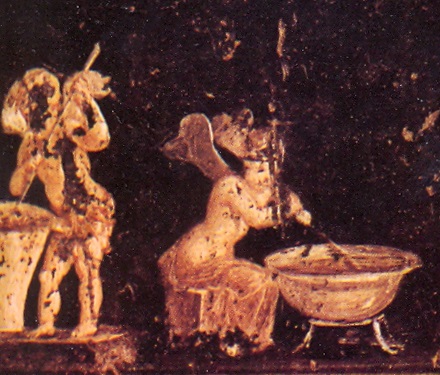
A common addition was the cooked must, which was the "sugar" of the time (along with honey). It was obtained from overripe grape must which was concentrated by a slow boiling. Thus, it formed a very sugary, dark liquid, with a more or less caramelized taste and rich in aromas. During cooking, it also was possible the adding of fruits or flavoring herbs. In wine production, the cooked must was added to fermenting must to increase the sugar component of low quality grapes. Today, I remember that it is allowed to add concentrated and rectified must or sugar (the latter is not allowed in Italy). The cooked must could also be added to the finished wine and, in this case, they produced the so called "cooked wine". The use of cooked must remained for all the following centuries in Italy, especially in the center and south. However, the production of cooked must in Roman times was harmful to health, because it was mainly boiled in lead pots. During boiling, the lead diacetate (lead salt of acetic acid) is formed which has a sweet taste, also called Saturn's sugar, saccharum Saturni (Saturn was the alchemical symbol of the lead). Its ingestion, like other forms of metal assimilation, can cause serious problems of chronic toxicity. It includes mental damage, the alteration of various organs and blood. Some scholars have hypothesized that certain forms of madness attributed to some Roman emperors could be symptoms of the saturnism.
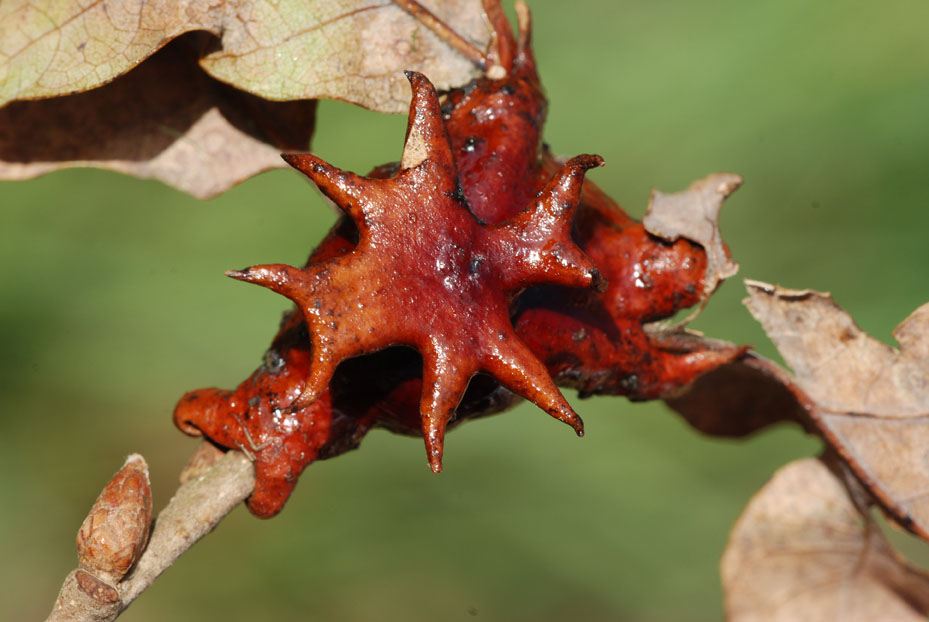
They often added dried oak galls, outgrowths that form on the plant following the attack of parasites, the gall wasps (the Cynipidae, Hymenoptera insects). The galls have been used for millennia in the wine production because they contain a high percentage of tannins. These substances occur naturally in grapes and they are important components of wine, but they can be lacking in low quality products. Today, the galls are no longer added but purified tannins, as well as those obtained from oak or chestnut wood, from exotic essences, from grape seeds and grape skins. The tannins give a slightly bitter taste, so they must be carefully dosed, but they have several positive effects on the wine: they improve the structure and the body, they have a certain protective action (for example, they protect against the laccase, a deleterious enzyme for wine, which can be found in grapes attacked by gray mold), they help to stabilize the color, ...
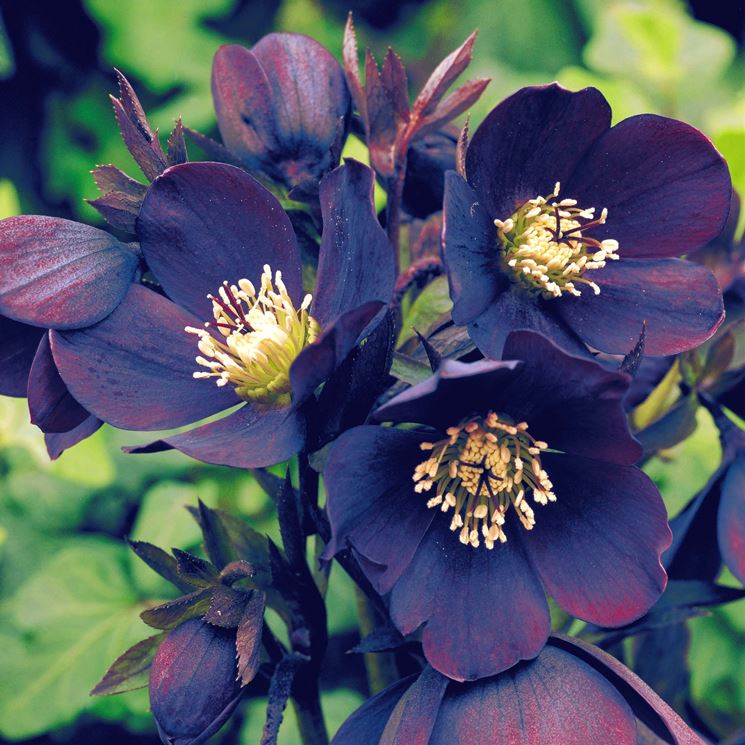
The addition of other vegetal elements also had a positive effect thanks to the contribution of tannins, such as olive stones or black or white hellebore (which contains gallic acid). At the time, it was thought that these plants had preservative effects on wine and that they were beneficial to health. On the contrary, the white hellebore contains a highly toxic hallucinogen. Yet, its use is often mentioned in antiquity, to enlighten the mind according to Petronius Arbiter (in the Satyricon) or as a remedy for madness for Horace (Third Satire, Book II) or against epilepsy. The black hellebore, on the other hand, is less harmful.
Pliny says that in Africa it was customary to add gypsum to wine, which was then eliminated by sedimentation. Adding plaster is a traditional practice commonly used until recently. It was typical of very hot areas, such as southern Italy and Spain. The gypsum was often scattered directly over the grapes, during the transport or during the pressing phase. This addition (remember that gypsum is calcium sulphate) has an acidifying action, with the secondary effect of reviving the color and clarifying the wine. In fact, the lack of acidity is a problem that can often occur in grapes produced in hot climates. The gypsum also slowly develops sulfuric acid in the wine, so it also has a light preservative action. However, it leads to an accumulation of sulphates, which are toxic above certain quantities. Today it is no longer used. Another product used as an acidifier in Roman and modern times was the alum (double sulphate of aluminum and potassium with 12 molecules of crystallization water), also no longer used.
On the contrary, to remove a too high acidity (a problem especially of grapes from cooler climates or not well ripened), they added marble powder or lime. Both of them bring calcium carbonate to wine, a substance used for millennia as a wine deacidifier. It is still used today, it is the cheapest, but it involves several problems such as the release of an excessive amount of carbon dioxide. Today the potassium tartrate (or other) is generally preferred.
Aggiungevano molti tipi di ceneri (incenso arso, cenere di radici di viti, gusci d’ostriche arse, cedro arso, ...). Tutte queste sostanze hanno l'effetto di incrementare diversi sali. L'effetto è quello di aumentare l'estratto secco e, quindi, di dare più corpo al vino. Anche queste aggiunte sono state usate a lungo nel passato ma oggi sono pratiche illegali.
There are some substances that, for the Roman authors, gave a generic improvement of the wine: clay, milk, egg whites, wild pea flour, ... I grouped them because today we know that they have the same function. They are the ancestors of various oenological practices still in use today, with a clarifying, refining and stabilizing function. They smooth out excess tannins and improve aromas. Today, the clay is still used but purified, like the bentonite or other similar products. The proteins of animal origin were used for a long time, such as the beaten egg white (the albumin), although today there is an obligation to indicate them on the label as allergens. After millennia of use, the milk is no longer used, but today there are still those who use an extract, the potassium caseinate. The flours of legumes, especially of peas, were used until not so long ago; today, vegetable protein extracts are used, which still derive mainly from these plants.
Other additions concerned the production of special wines, which were never blended with the normal ones. The addition of different herbs served for producing aromatized wines, such as those made with incense, roses, absinthe and much more.
Several wines imported from Greece (such as those from Chios, Kos or from Rhodes) were mixed with sea water, purified by decantation. The Romans took this use from the Greeks, but in smaller quantities. They believed that salting should be very precise, because the excess made the wine unpleasant and even harmful to health. Similar additions were also made until recently, with hydrochloric acid or table salt, but they are prohibited today. They were used to increase the chlorides in the wine, which may already be present a little (in different ways depending on the variety and the territory), with an effect of increasing the salinity and the dry extract (for a more full-bodied wine).
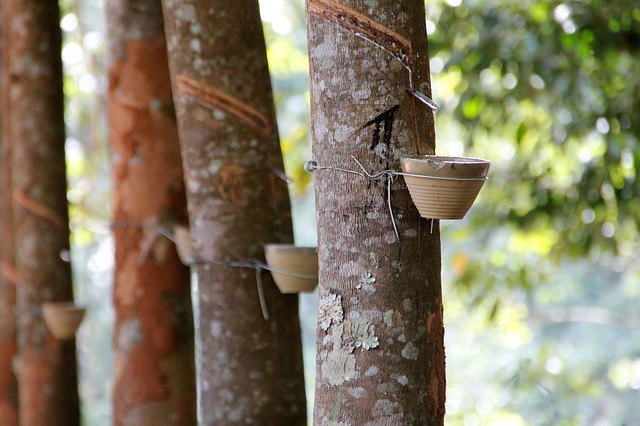
Another ingredient of some Roman wines was the vegetable resin. In addition to being used to coat all wine containers, it was sometimes added to the wine itself, for a particular product called resimato or impeciato wine. This practice also came from Greece, where a resin wine called Retsina is still produced today. Today only the resin of the Aleppo pine (Pinus halepensis L.) is used, but in ancient times many different essences were used, such as turpentine or terebinth (exudate of Pinus palustris L. and other Pinaceae), the mastic of the lentisk (Pistacia lentiscus L.), the resin derived from the seeds of ambrette or abelmosk (Abelmoschus moschatus L., an oriental Malvaceae), etc. The different types of resin were dissolved in olive oil and the must or wine was treated with it. The addition of resin seems to arise from the fact that it has a certain antiseptic action, which determines a protective action during fermentation, as well as a preservative action. However, it causes a strong aromatization of the wine, which is not appreciated by everyone. Curiously, I also found the resin in more recent oenological texts: the resinous smell is reported among the olfactory defects of wine in the late 19th-early 20th century. The professor Antonio Sannino wrote that it is frequently found in Trentino wines, due to the use of vats made with larch or fir wood.
The oenological practices were born to improve production but, over time, with the growth of the sector and the economic interests, they also degenerated towards strong adulterations. Unscrupulous businessmen used grapes of very poor quality, which were then heavily corrected in the cellars. In particular, they tried to cover the defects with very intense flavoring treatments.
These excesses were recognized and criticized even by the Romans themselves. Several authors write that they do not appreciate certain excessive aromatization, which altered the taste of wine or they considered dangerous to health. However, these wines had a market among the less privileged classes. For example, Pliny writes that Provençal wines were completely altered by an intense smoking and the addition of too many herbs, among which he feared that there were also some harmful ones. He also tells about the use of adding aloe to wine, to alter color and flavor. Some authors sarcastically write that they drink the Sabinus wine more willingly than many others, even if it was not among the most prized, because at least it was genuine and not too counterfeit. Although there was this perception, they never created a legislation to regulate the sector and put a limit on the additions made to wines.
The wine aging
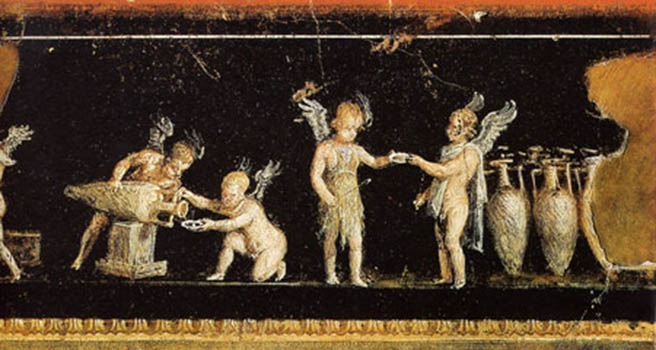
The aging of wines in Roman times (to age = vetustescere) was done with heat. It was made only for the best wines, which were decanted in amphorae, closed with cork and carefully sealed. After that, they were left under the sun or in warm rooms. These amphorae were found by the archeologists almost everywhere in Pompeii: in the atriums of the houses, under the arcades, in the attics, in the kitchens, in rooms specially heated with furnaces (hypocaustum), ... After a certain period of this treatment, they were stored in the fresh cellars. These aged wines, according to ancient testimonies, could last a very long time and were considered among the most renowned wines.
How could the taste of these wines be? We can find an answer to this question by looking for the use of heat for aging in times closer to us.
There is a wine that is still produced today with a system that closely resembles the Roman one. This is the Madeira, produced in an archipelago of Portugal, located off the northwest coast of Africa. The wine is added with sugar cane alcohol and then treated with the heat (around 50°C) for several months, in containers kept in rooms heated by stoves or left under the sun. This tradition of the heat use does not seem to derive from the memory of the ancient Roman use. The official history of Madeira wines tells that it was a recent rediscovery, which dates back to the 16th - 17th centuries. In this period the wine of the island began to be transported frequently by sea and they noticed that it matured remarkably when it crossed the equator twice. However, this wine has strong oxidative notes and is very stable, capable of very long aging.
Can we hypothesize that the aged wines of the Romans were similar to Madeira? The production is very similar. It is possible, but we will never be sure.
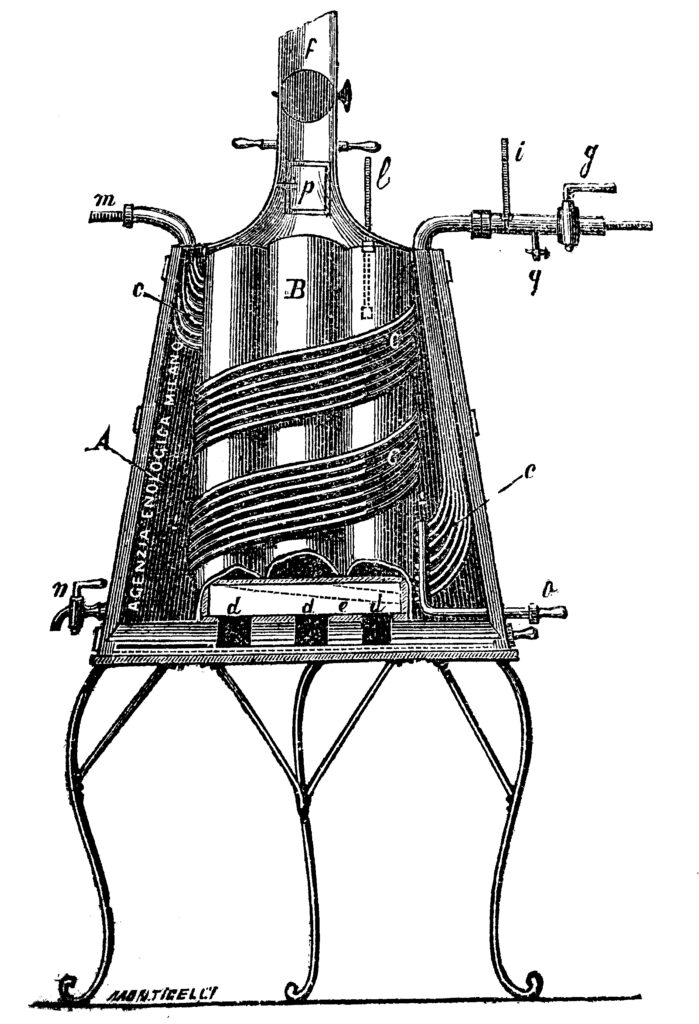
However, the use of heat was not completely forgotten after the ancient times. It continued to be mentioned in the agrarian texts of the following centuries, from the Late Middle Ages onwards, but we do not know if it was still used or not. For examples, Andrea Bacci ("Natural History of Wines", 1596) writes that, in his day, wine was produced in a much simpler way than the accurate systems of ancient times, of which only a vague idea remained. However, we cannot exclude a priori that this technique was not yet used by someone.
However, there was a great return of the heat use for the wine aging from the second half of the nineteenth century and a part of nineteenth century. It was stimulated by the intense studies of the time on the nature of fermentation (see here), which led to Louis Pasteur's important discoveries on the role of microorganisms in wine, and of oxygen in aging. Thanks to Pasteur, the pasteurization was born, a moderate heat treatment of short duration, used for the wine preservation. So, the idea of using heat for aging also returned. In particular, there was a very high interest in finding much faster and cheaper ways of wine aging, compared to the long times and high costs of the passage in wooden barrels.
The heat has a preservative effect because it eliminates the microorganisms and proteins (enzymes) that can cause the wine to deteriorate. There is also an aging effect (also favored by the high temperature) adding a (more or less) controlled exposure to oxygen. I remember that at the base of wine aging there is always an oxidation process. When it is very strong, it origins wines with a clearly oxidized taste. If minimal, it leads to finer and more elegant transformations.
There were numerous studies that tried to define the practices for an optimal fast aging, defining the heat cycles, the temperatures (betwen 40° and 80°C) and the treatment times. It was important to avoid altering the taste of the wine with a "cooked" aroma. It was demonstrated, as the ancient Romans already knew, that this procedure was feasible only with wines of high alcohol content, of a certain power and good acidity, while the less intense ones were completely ruined. The Romans were mentioned only briefly, but similar systems were used, such as stoves for heating the rooms or for the bain-marie of the bottles, as well as exposure to the sun. There was also the creation of machineries for the continuous heating of wine, called “enotermo” in Italian, designed to treat even very consistent productions. They also studied systems that provided for the passage of electric currents in wine, a practice called "electrification", but they were abandoned quite soon. At the end of all these treatments, the wine was stored for a few months in the cellar at fresh temperatures.
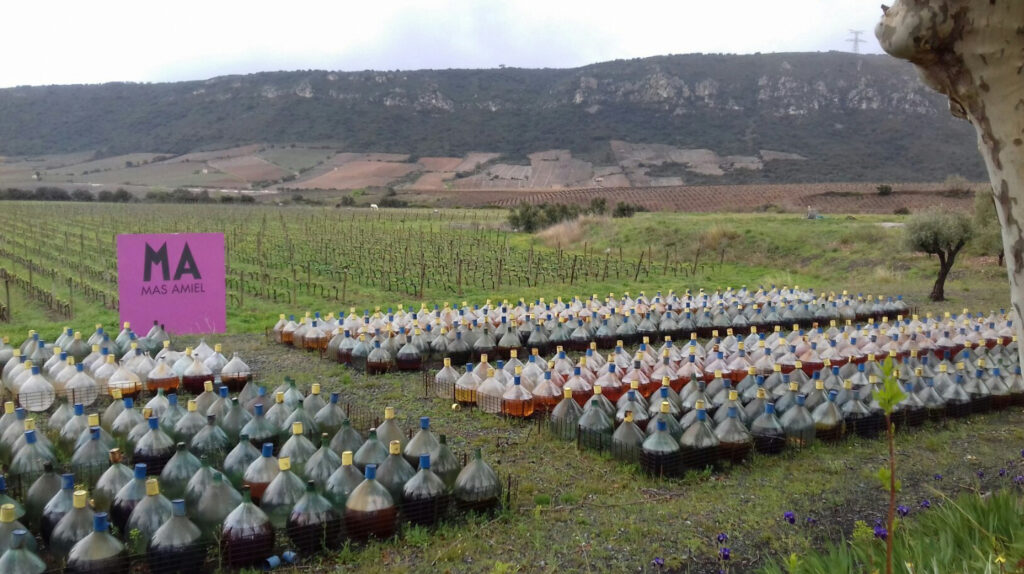
There was also a system of exposure to the sun, that was cheapest and least technological. It was made in clear glass containers, bottles or (more often) demijohns, not completely filled and well corked, left under the sun for some months. At the time, great importance was attached to the use of transparent containers because the antimicrobial action of sunlight on wine. We actually know that UV rays can have a sterilizing action, but also that they pass only minimally through the glass. The sun light has an effect of color altering.
Even if these heat aging systems were used for some time, the results were always quite controversial. However, from the texts of the authors of the time, it is not easy to understand what they meant by "good aging". For example, prof. Arturo Marescalchi made some tests with a wine (made with Freisa and Barbera varieties) in 1894, leaving some bottles in the July sun for 12 days. Some bottles were exposed to light, others covered with a black cloth and some, as control, were stored in the cellar. According to him, the best was the wine exposed to heat and light, which had become very old, with an orange color that today we would not considered so good. Some authors positively described these aged wine as similar to Madeira wines. However, many other authors disliked a so intense oxidation, because it standardizes the wines.
Professor Garoglio, in the 60s of the twentieth century, wrote that the success of heat aging was questionable and very casual. The results were quite appreciable in some cases, totally disastrous in others. In his time, the heat aging was still in use, but it was going to disappear. From the 1960s - 1970s, the use of aging in wooden barrels returned to growth, also thanks to the renewed economic capacity of the wineries. The pasteurization for conservation purposes was also increasingly abandoned for wine, while it remained for other foods (such as milk, beer and fruit juices). This treatment is yet permitted today. Perhaps there are those who use it, but without too much publicity, because it is not considered a very qualitative practice.
The poors' wines
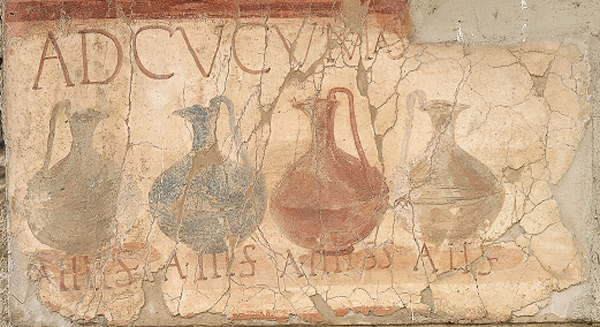 In ancient times nothing was wasted and wines of extremely low quality were produced for the poorest and the slaves. These practices of frugal peasant life will remain in use for centuries.
In ancient times nothing was wasted and wines of extremely low quality were produced for the poorest and the slaves. These practices of frugal peasant life will remain in use for centuries.
For example, the protropo wine was made with the must that Columella calls lissivo, that is the one that flowed by the weight of the grapes that were gradually accumulated in the pressing vat. Today, it would be like making wine with that liquid that remains at the bottom of the grape crates (especially if they have been a little too mistreated).
They produced wine also pressing used marc or lees, that were dunked in water for some days. These wines were called vini secondi (second wines) or lora. Cato calls the wine made with used lees vin fecato. These wines were very light and cheap, often used for servants and slaves. The practice of marc or lees wines has remained common over the centuries. Their production and sale, for consumption, was definitively prohibited in Italy in 1925 (royal decree n.2033 of 15/10/1925), because they were at the origin of many frauds (they were often saled as grape wines). In this period, they were still called second wines (vini secondi, in Italian), as in Roman era.
Is it possible to drink similar wines?!?!

Consider that, until not so many decades ago, drinking quality wine for pleasure, as we do today, was only a privilege for the rich. All the other people drank wines that ranged from moderate to very poor quality.
However, in the past, even the worst wine had a significance. It added extra calories to meals that were often too light, as well as giving a little more flavor and a light alcoholic vivacity. Also, these everyday wines were considered healthier than drinking just water. Today we know why: even a low alcohol content protected from microbiological contaminations, which instead were very frequent and risky drinking water.
We talked about many wines produced in Roman times, with techniques that have remained almost until today. Some wines were very good, others not so bad, some heavily adulterated, others very very light. Whether they drank for pleasure, for health or for any other reason, we close the question with the Roman toast. Instead of our "cheers", they said:
"Bene vos" or "Bene nos" or "Bene te" or "Bene me", …
"Bene vos" "Bene te" (I wish you the best), "Bene nos" (I wish us the best), "Bene me" (I wish the best to myself), ...
BIBLIOGRAPHY
“L’agricoltura di Lucio Giunio Moderato Columella” volgarizzata da Benedetto del Bene, con annotazioni adattate alla moderna agricoltura e con cenni sugli studi agrari d’Italia del cav. Ignazio Cantù, Milano, dalla Tipografia di Giovanni Silvestri, 1850.
“De re rustica”, Lucio Giunio Moderato Columella (60-65 d.C.), tradotto da Giangirolamo Pagani, 1846
“Interventi di bonifica agraria nell’Italia romana”, a cura di Lorenzo Quilici e Stefania Quilici Gigli, ed. L’Erma di Bretchneider, 1995.
“Il vino nel «Corpus iuris» e nei glossatori”, Cornelia Cogrossi, (2003) In: La civiltà del vino. Fonti, temi e produzioni vitivinicole dal Medioevo al Novecento. Atti del convegno (Monticelli Brusati, Antica Fratta, 5-6 ottobre 2001). Centro culturale artistico di Franciacorta e del Sebino, Brescia, pp. 499-531.
“Storia dell’agricoltura italiana: l’età antica. Italia Romana” a cura di Gaetano Forni e Arnaldo Marcone, Edizioni Polistampa, 2002
“Terra e produzione agraria in Italia nell’Evo Antico”, M. R. Caroselli.
“Origini della viticoltura”, Attilio Scienza et al., Atti del Convegno, 2010.
“La viticoltura e l’enologia presso i Romani”, Luigi Manzi, 1883.
“Storia della vite e del vino in Italia”, Dalmasso e Marescalchi, 1931-1933-1937.
“Storia del paesaggio agrario italiano”, Emilio Sereni, 1961.
“Il vino nella storia”, Enrico Guagnini, 1981.
Hugh Johnson, “Il vino, storia, tradizioni, cultura”, 1991
Tim Unwin, “Storia del Vino “, 1993
Antonio Saltini, “Storia delle pratiche di cantina, Enologia antica, enologia moderna, un solo vino o bevande incomparabili?”, Rivista di Storia dell’Agricoltura a. XXXVIII, n. 1, giugno 1998
E. Chioffi, “Anfore, archeologia marina”, Egittologia.net
“Storia dell’agricoltura italiana: l’età antica. Italia Romana” a cura di Gaetano Forni e Arnaldo Marcone, Edizioni Polistampa, 2002
“Terra e produzione agraria in Italia nell’Evo Antico”, M. R. Caroselli.
"Il vino da pasto e da commercio", di Ottavio Ottavi, 1875, Tipologia Sociale del Monferrato, Casale.
"Trattato completo di enologia", di Antonio Sannino, 1914, Stabilimento di Arti Grafiche, Conegliano.
"La nuova enologia" di Pier Giovanni Garoglio, 1963, Istituto d'Industrie Agrarie, Firenze.
The harvest of the vineyard Campo Bianco
Campo Bianco is the vineyard where Criseo, is born. It is a single vineyard with 5 white varieties: Vermentino, Fiano, Verdicchio, Manzoni Bianco, Petit Manseng. This is a field-blend: all the grapes are harvested together and they are co-fermented. It is the oldest way to make wine in Italy, and it gives rise to a unique and ancient wine.
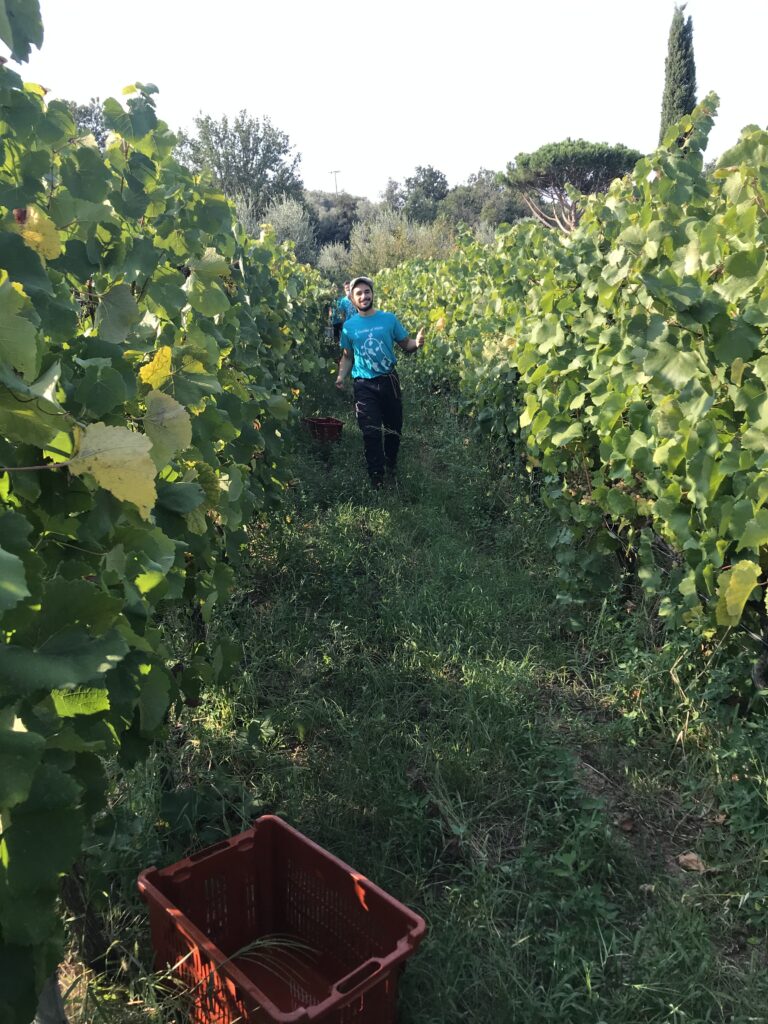
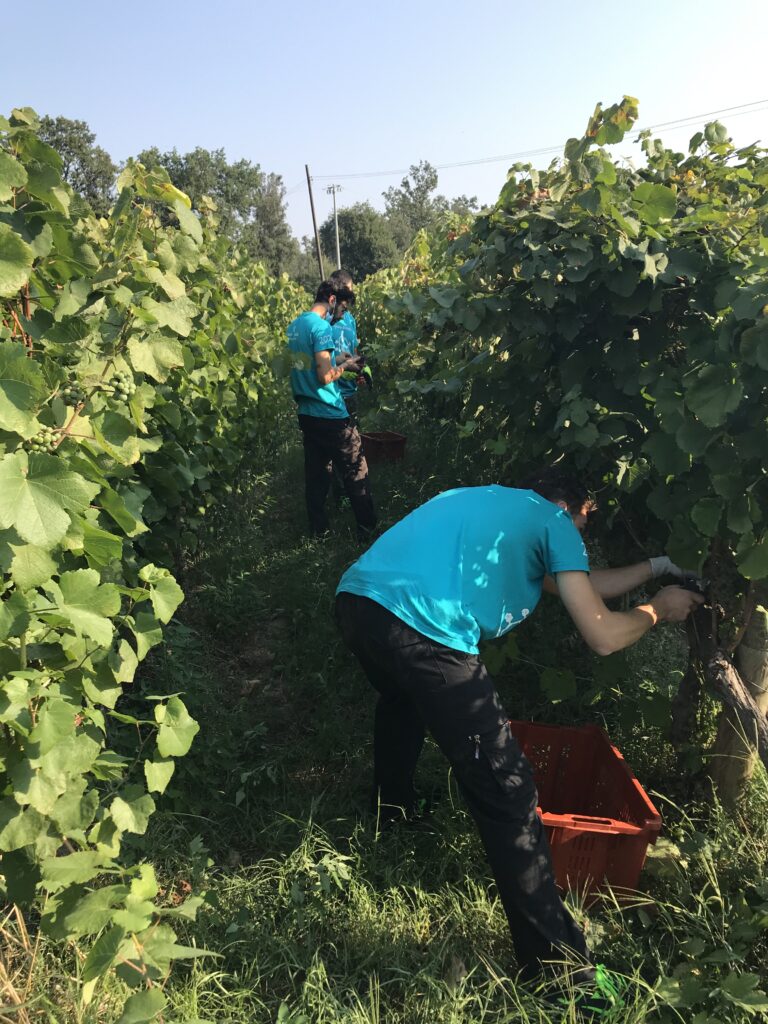
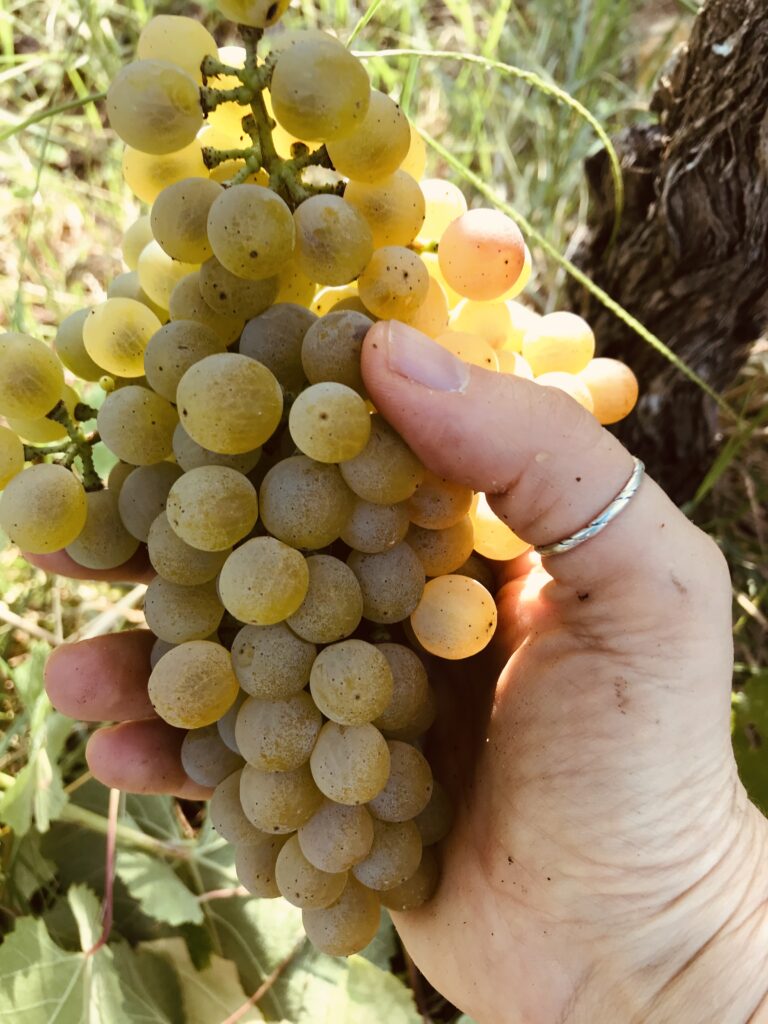
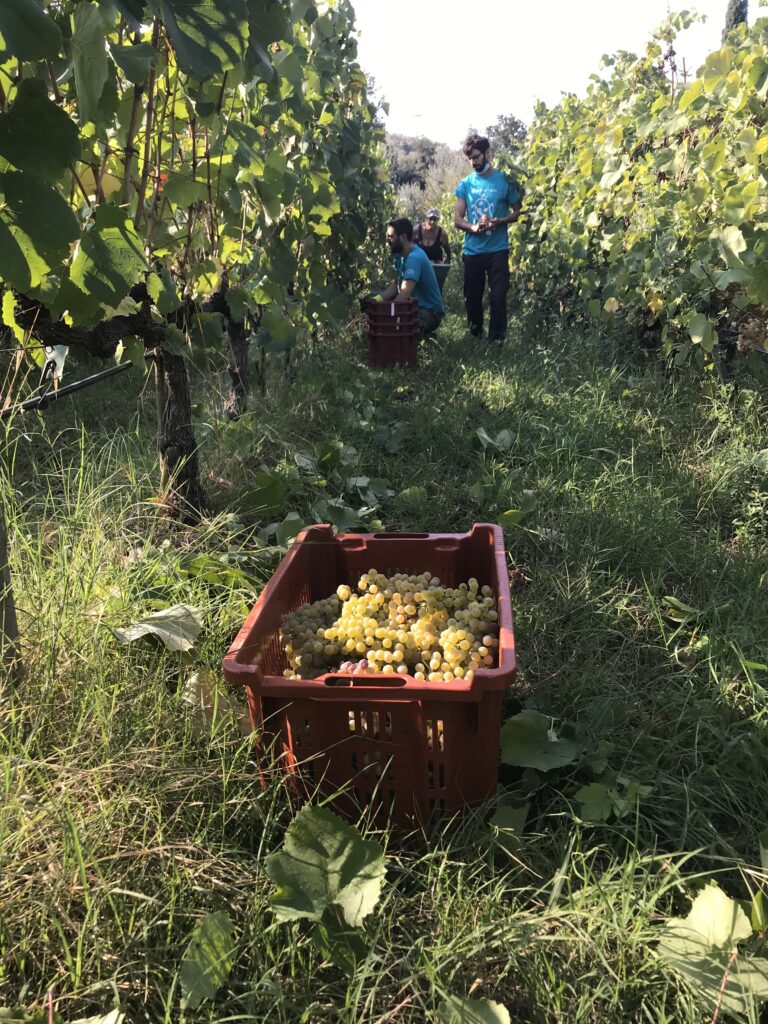
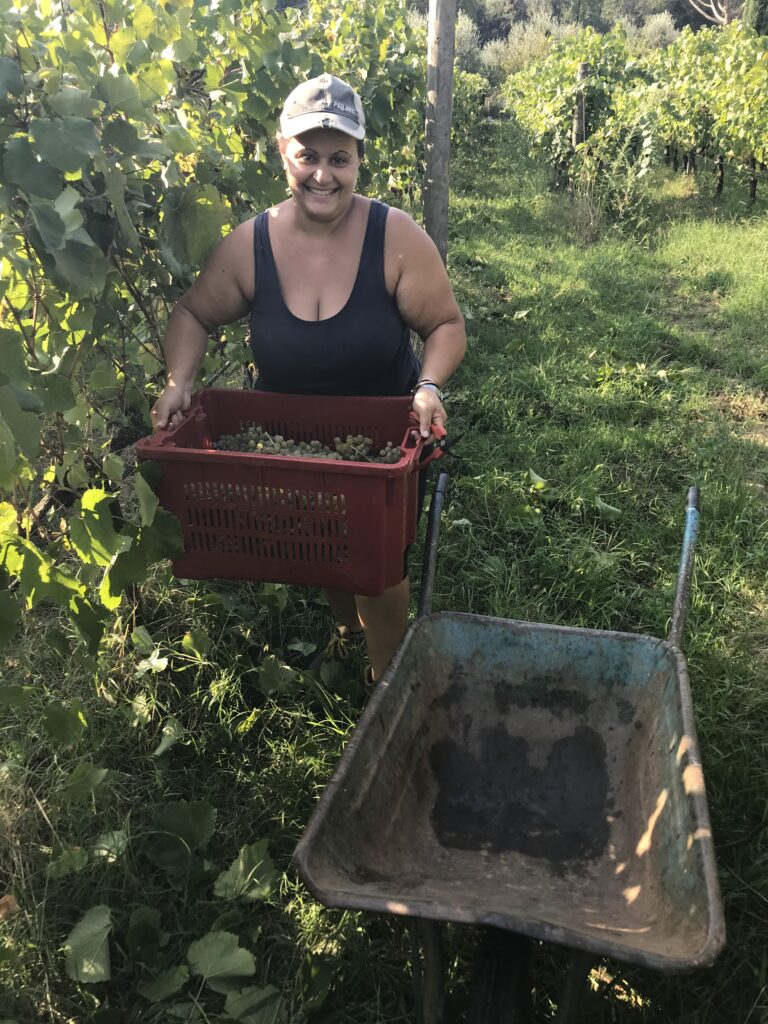
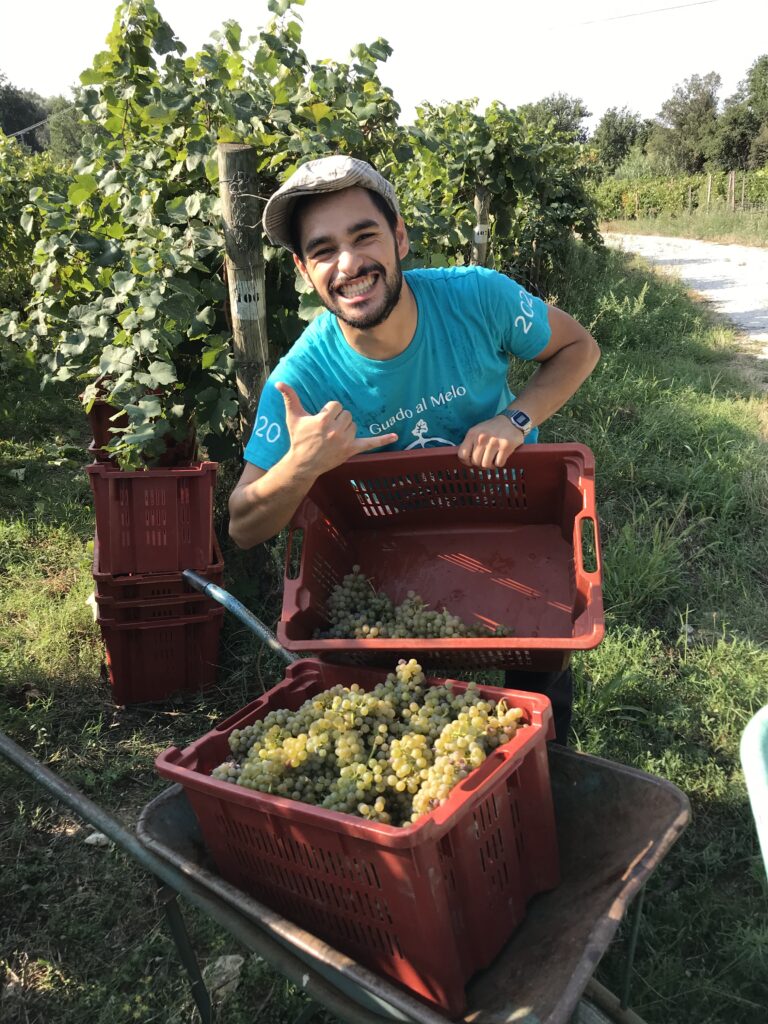
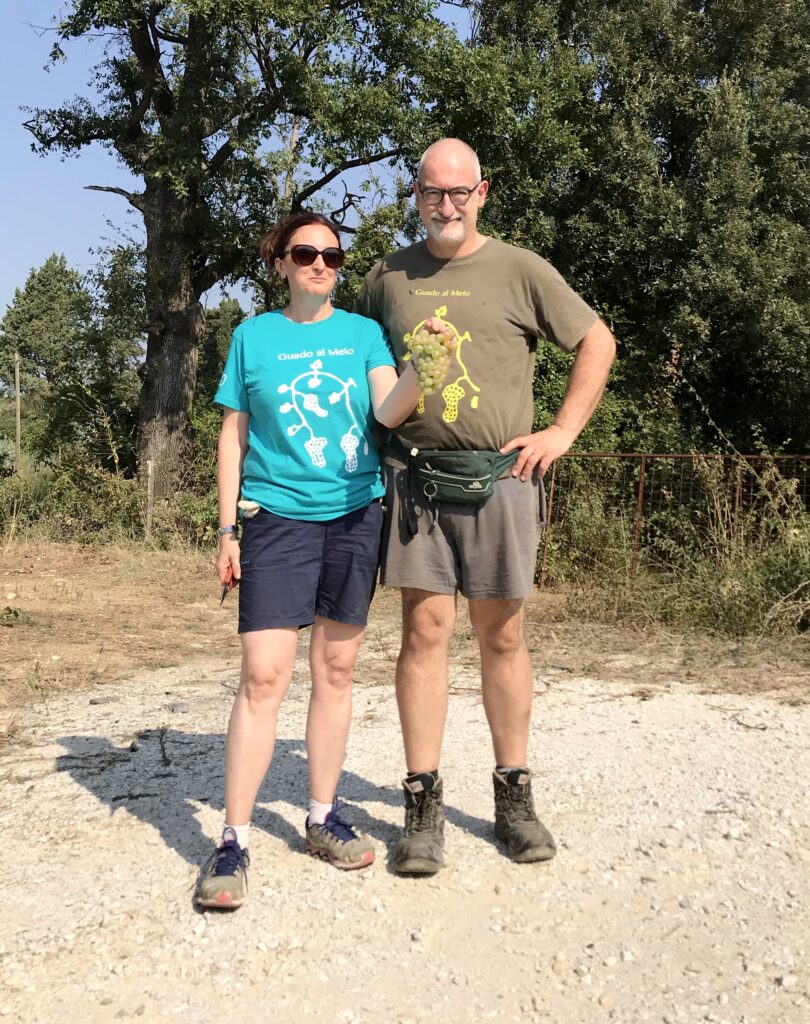
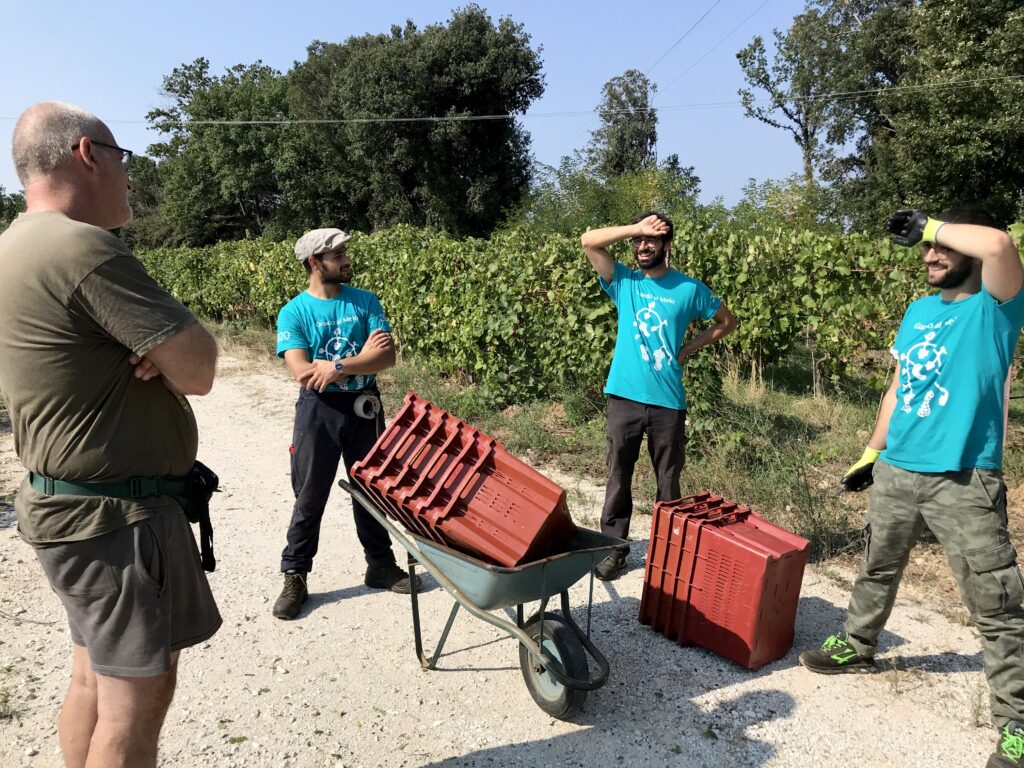
We have started the harvest
Yesterday, September 15th, we started the harvest 2020.
Yesterday and today, we picked up the vineyard Campo Pietrini, where there is the Vermentino, our mainly white variety and the most ancient of our territory.
The grape is very good and healthy. This vintage is very interesting.
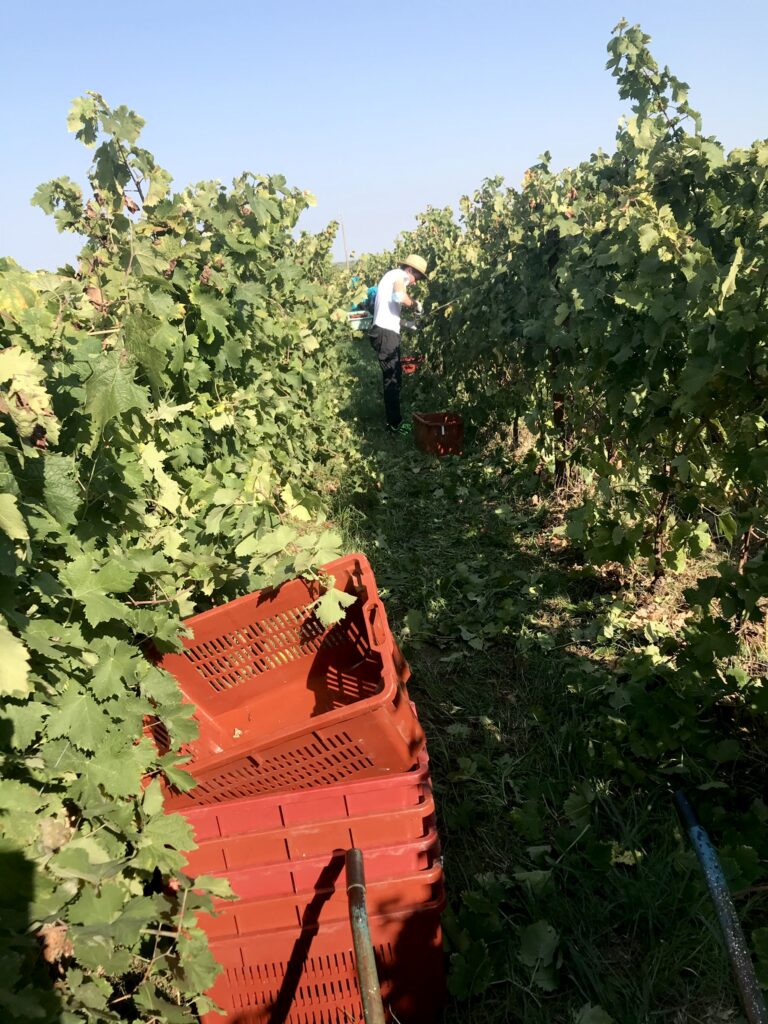

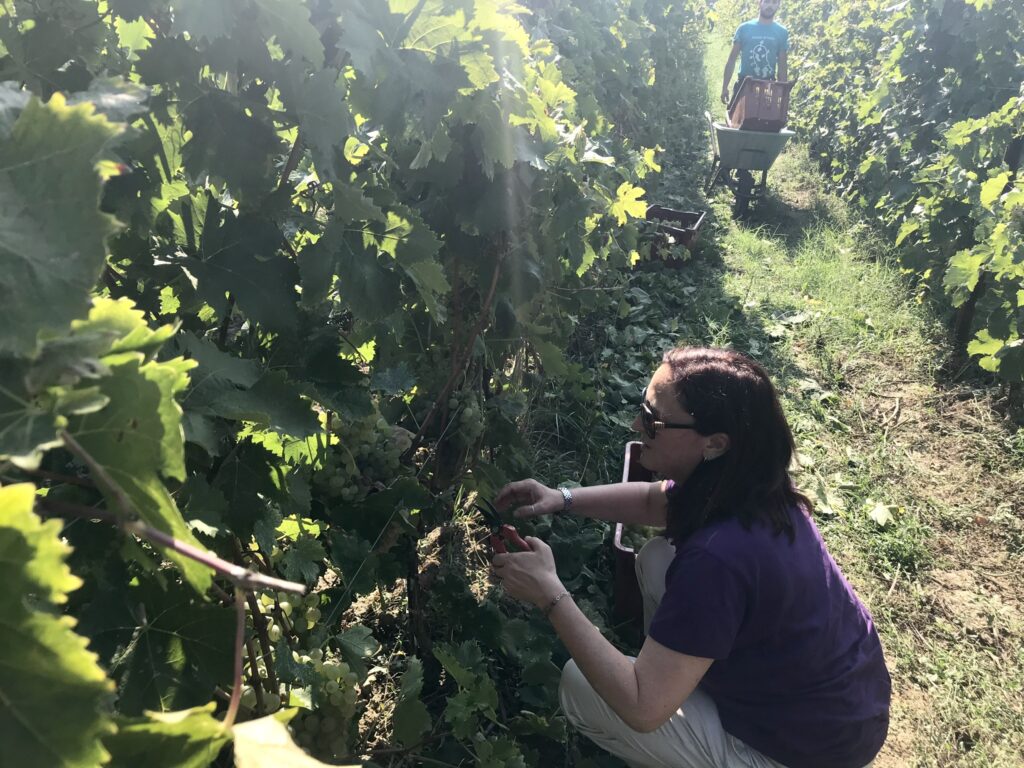
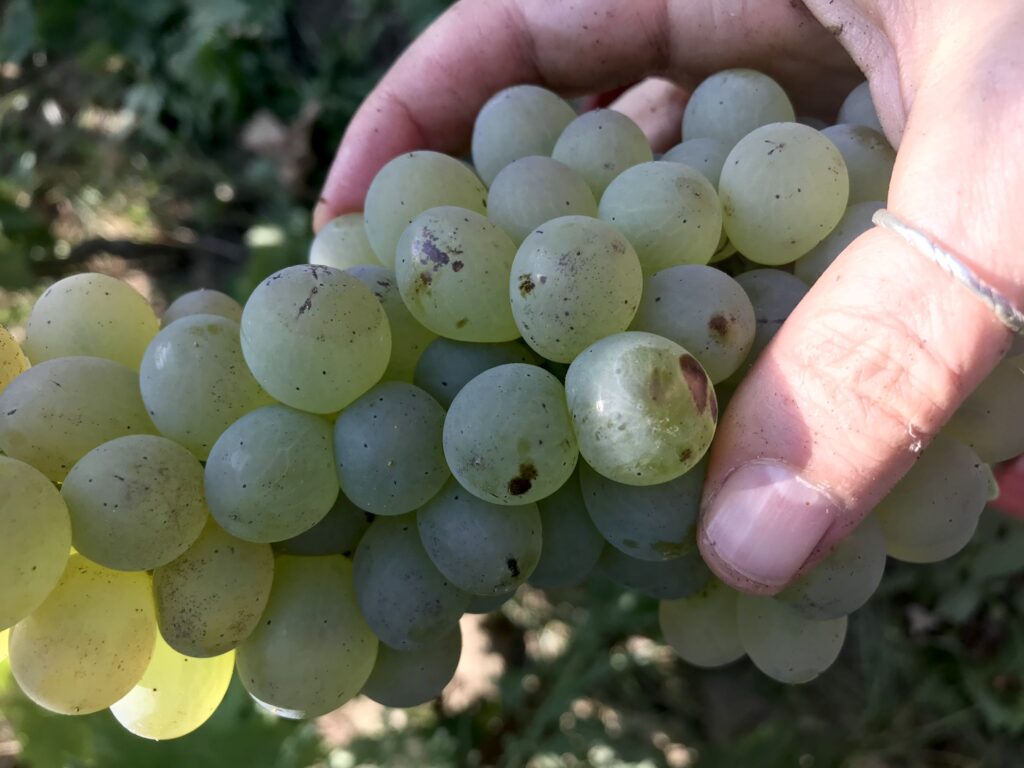
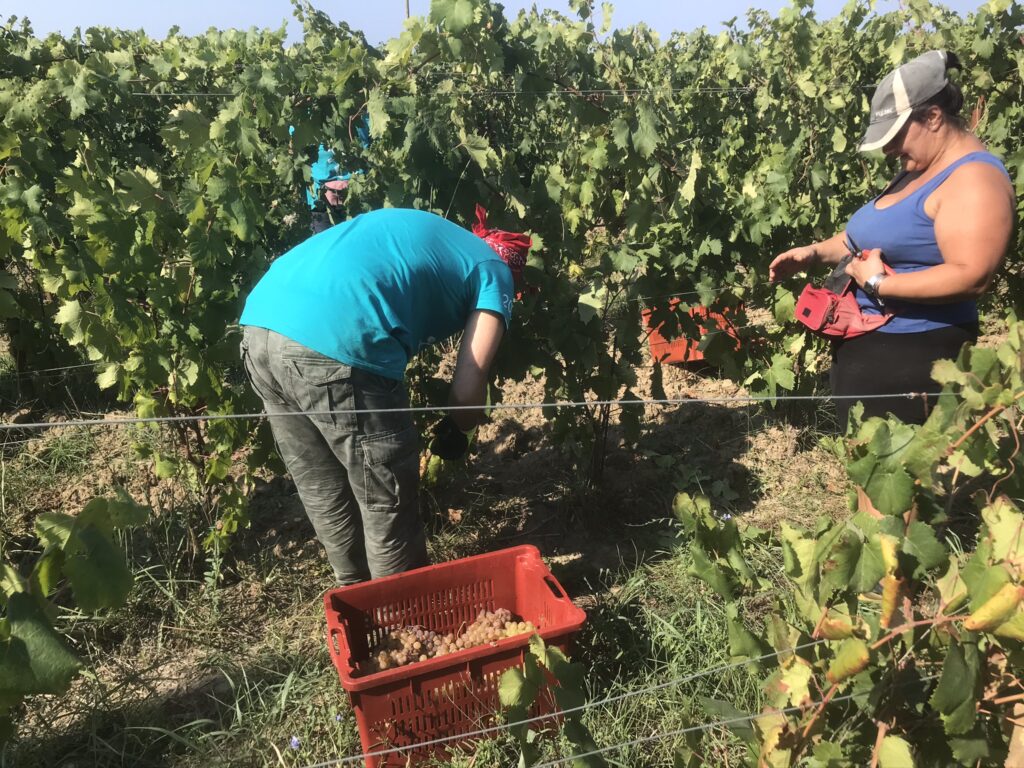
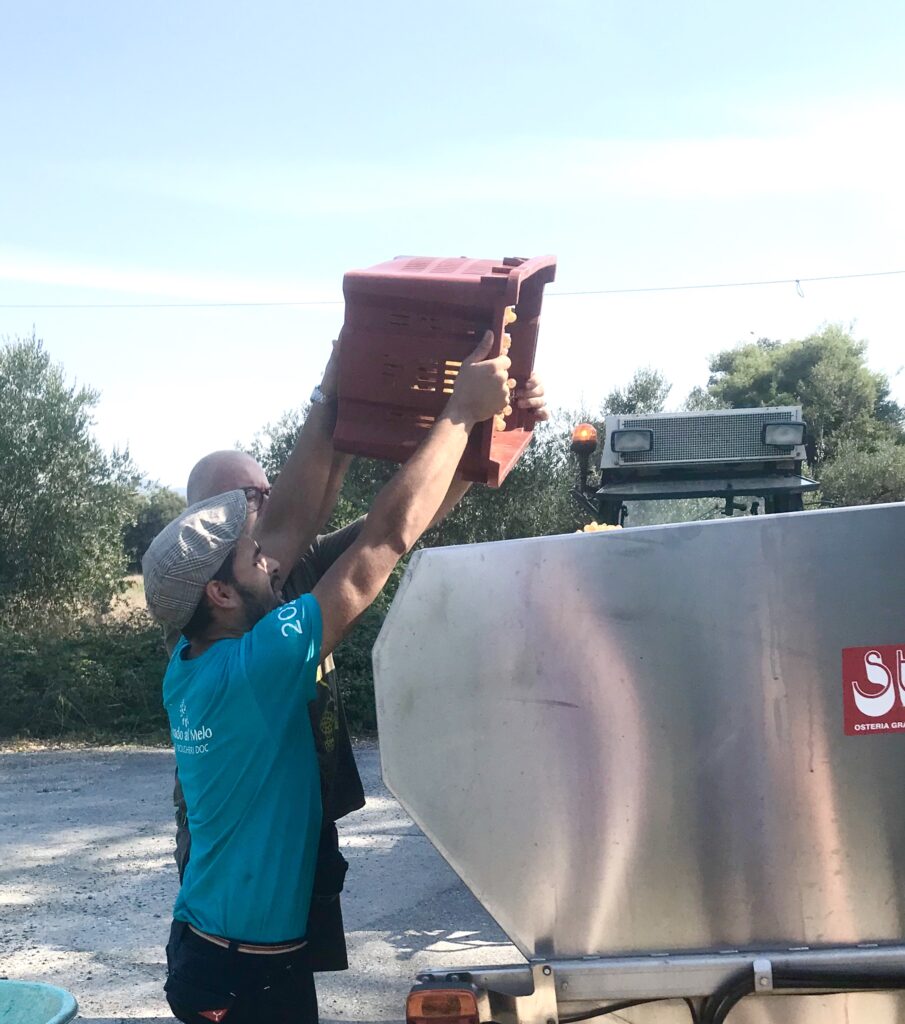
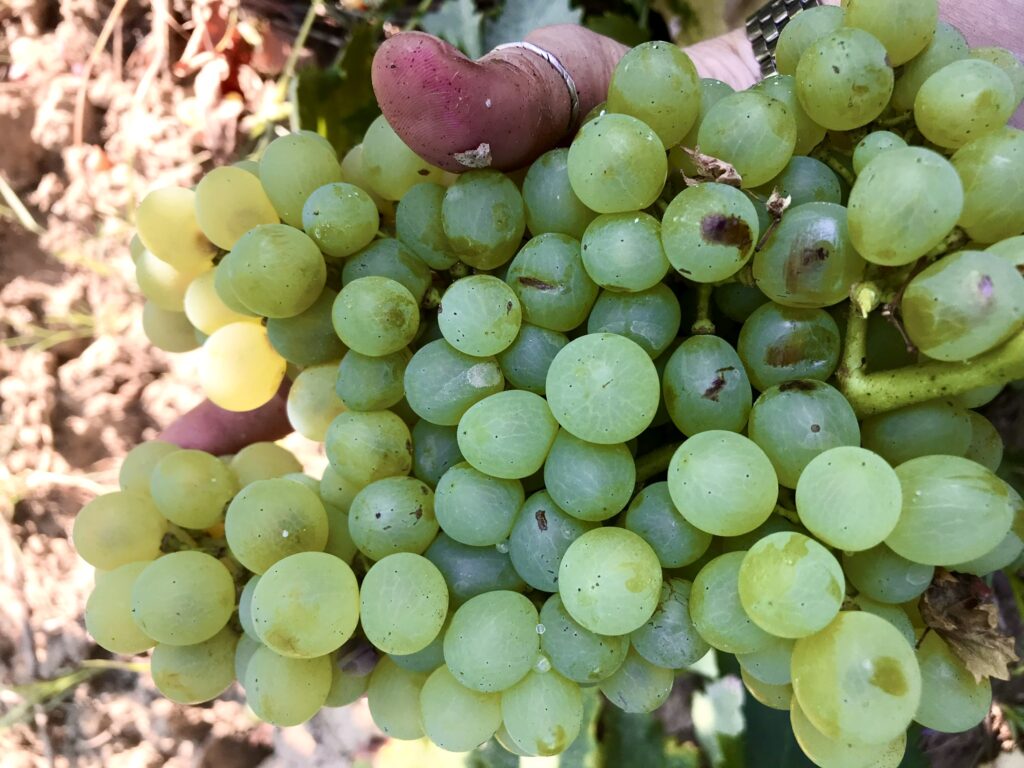
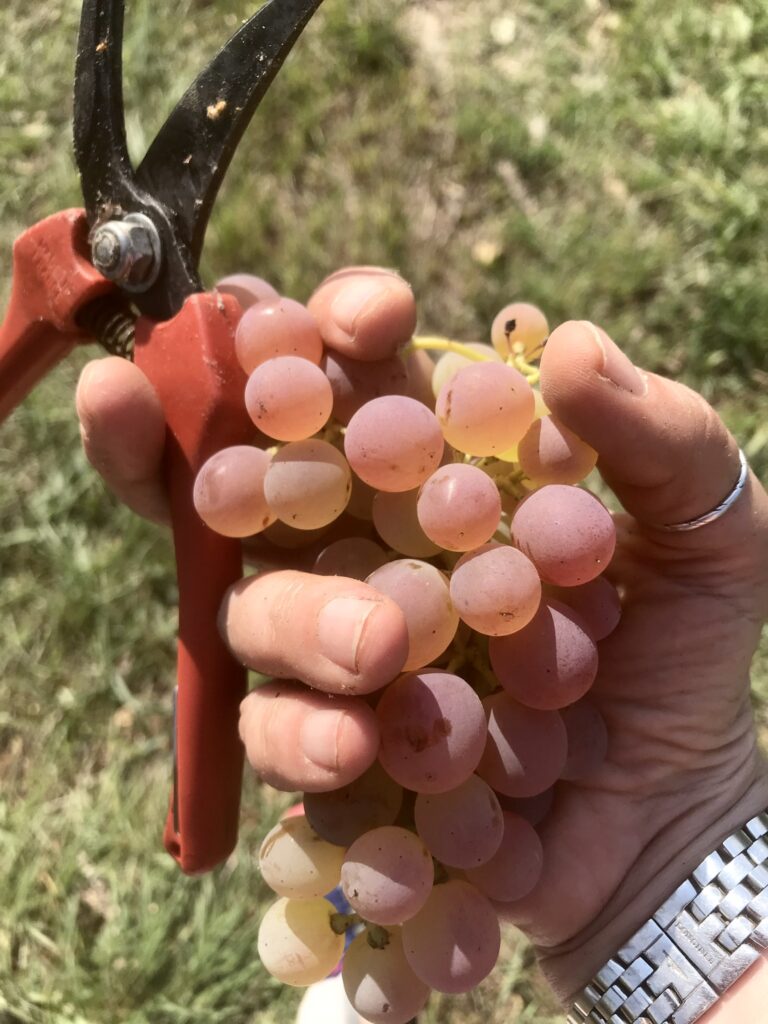
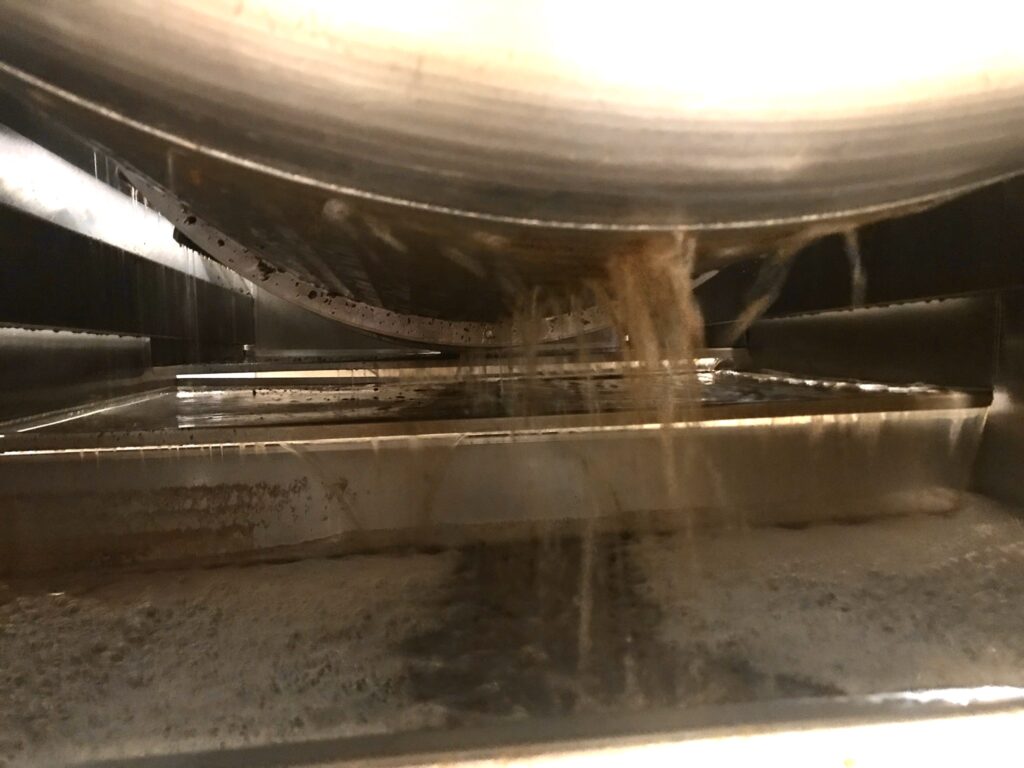
Fall opening hours
The days are shorter and the harvest is coming, so we change our opening hours: from Monday to Saturday, 10.00-13.00 15.00-18.00
Visits and tastings are by reservation only. On Sunday, guided wine tours are possible for groups with at least 6 persons.
We are waiting for you!
The vinification of the Roman era, the origin (1): let's enter the cellar
I told you about the taste of Roman wine (see here). Then we walked for a long time in the vineyards of the time (see here, here, here, here here, here). Finally, we enter the cellar.
[one_second][info_box title="" image="" animate=""] The wine consumption in Rome: sobriety or vice?
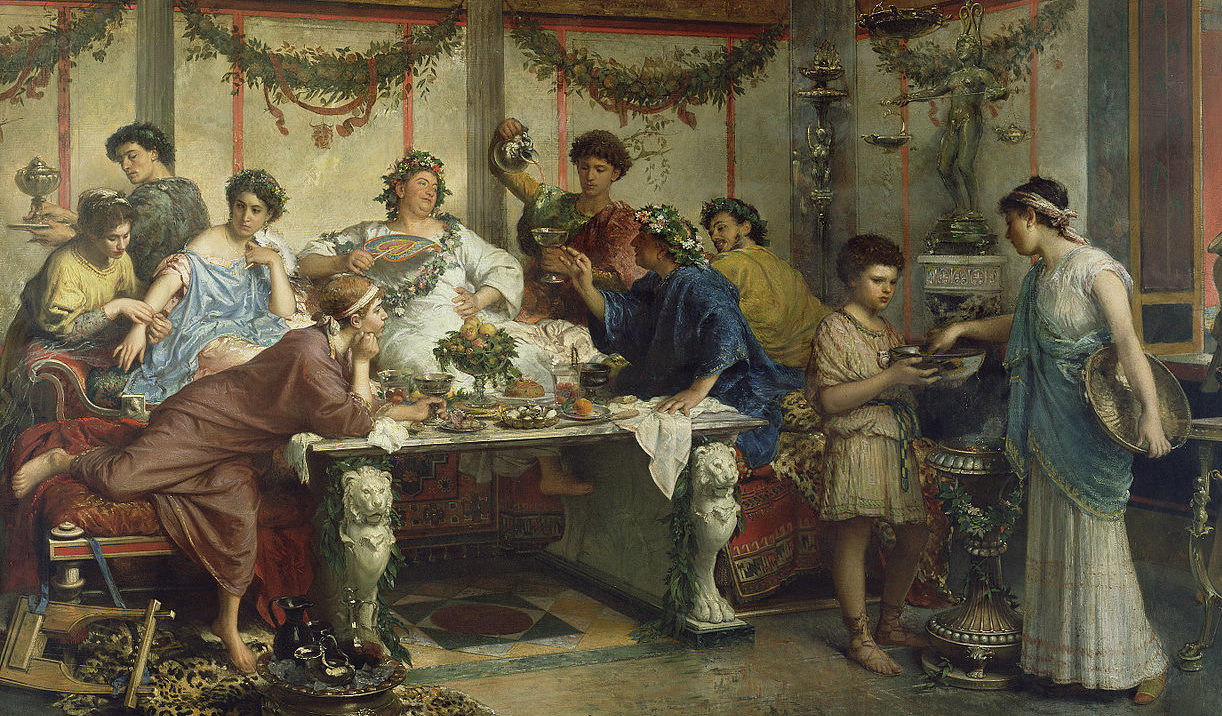
In our imagination we often associate Roman wine with banquets, with drunks in togas who puked their brains, due to many films or other representations that exalt the vices of the ancient world.
In fact, it is true that wine was consumed a lot in Roman times, but generally in a sober way. The prevailing culture was that which, more or less, remained in Italy: the wine was drunk almost exclusively with meals and without exaggerating, always diluted with water (to dilute the high alcoholic strength of the time). The only exceptions, like today, were the parties, the banquets. The excesses of some rich people were certainly not the norm.
The vice of drunkenness, called temulentia (from temetum the oldest word for wine in Etruscan and Latin) was rather frowned upon socially. For example, Octavian often accused Mark Anthony of loving wine too much, using this weapon to discredit him politically. True or not, Anthony is remembered yet today as a drunkard.
However, there has been a great evolution over the centuries. In the most ancient times, the wine was not abundant, both because the production was still limited, and because of the more rigid climate (see here the climatic changes of the Roman era). the wine was a luxury item for the most ancient Romans, reserved almost exclusively for banquets, for social and religious events. Later and thanks to theproduction expansion, it will be introduced more and more in common meals. Seneca says that the ancestors usually allowed themselves a little wine only at the end of the meal and considered those who drank it during the meal as glutton.
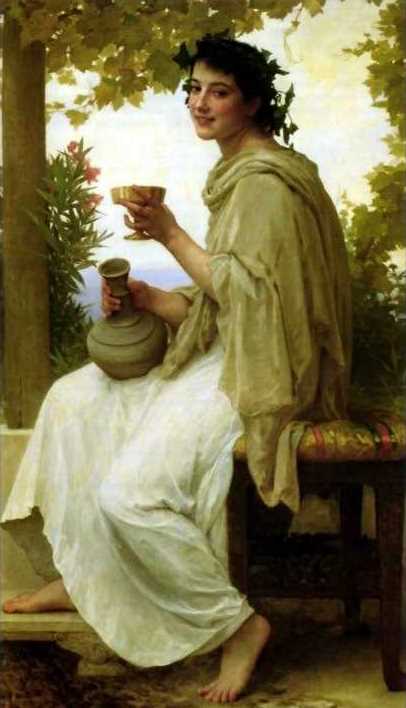 The strict customs of ancient Rome forbade wine to women. Wine was associated with the loss of control, hence the risk of adultery on the part of the wife. In the time of Romulus, Egnatius Mecenius killed his wife with stick for drinking wine and was even praised for the "exemplary punishment". Later in the history of Rome, women no longer risked their lives just for a little wine, but only a moderate consumption was socially accepted for the respectable ladies. For example, the judicial chronicles report the case of a woman who was fined by the judge, with the loss of her dowry, because she had secretly drunk more wine "than was deemed necessary for the health".
The strict customs of ancient Rome forbade wine to women. Wine was associated with the loss of control, hence the risk of adultery on the part of the wife. In the time of Romulus, Egnatius Mecenius killed his wife with stick for drinking wine and was even praised for the "exemplary punishment". Later in the history of Rome, women no longer risked their lives just for a little wine, but only a moderate consumption was socially accepted for the respectable ladies. For example, the judicial chronicles report the case of a woman who was fined by the judge, with the loss of her dowry, because she had secretly drunk more wine "than was deemed necessary for the health".
Over time, however, the production of wine increased more and more, arriving at large productions of low quality wine for the masses and a small elite of refined wines for the rich, and the customs became less and less severe. The consumption of wine became common for all the meals. In the Satires of Varro (1st century BC), he jokes about the meal without wine, calling it "prandium caninum", the dogs' meal (who certainly do not drink wine).
Arriviamo quindi all'epoca Imperiale, con gli eccessi celebrati nei tanti film in toga, dei quali Plinio dice di vergognarsi anche dal riferire. Nei casi più estremi, si poteva arrivare ad infilarsi una penna in bocca per indurre il vomito e poter ricominciare a bere e a mangiare.
During banquets, which were not necessarily always unbridled, it was customary to toast to the Gods, friends, lovers or the powerful. There was also the use of the nomem bibere (drinking the name): drinking as many glasses as there were the letters of the name of the beloved or the powerful to whom the toast was dedicated.
Pliny also reports the custom of "drinking the crowns", that is, lovers exchanged cups of wine with inside the petals of their crowns made of flowers and herbs. These vegetable wreaths, which became common at the banquets, were born from the belief that they would prevent drunkenness, by wearing them. Over time, they also became luxury items, made with the rarest and most fragrant flowers.
Among the many dark legends that circulated about Cleopatra, it is told of the time that, offended by Antony, she tried to poison him, offering him a cup of wine with the petals of her flower crown, which had been soaked in poison. At the last, however, she repented and stopped him before the fatal sip. Anyway, to teach a lesson to Antony, she made drinking the poisoned cup to a man sentenced to death, in front of him.
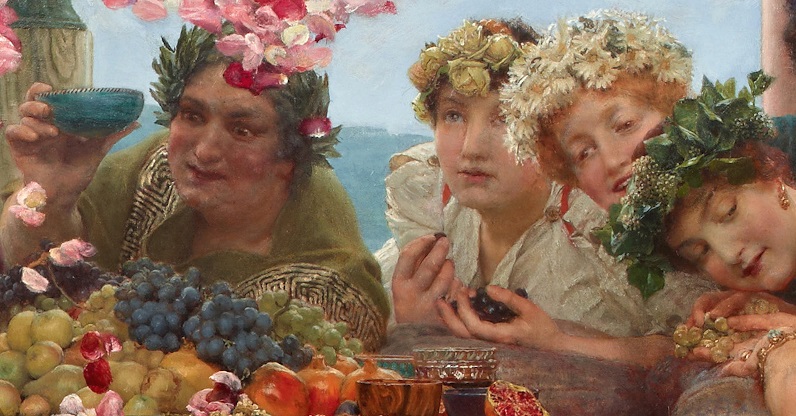
[/info_box][/one_second]
Our harvest is very close and it seems to me very appropriate to talk about winemaking again. I do it, however, by going to its origins, to the Roman era.
However, I do not want to tell you about the terracotta amphorae and other generalities that we all know well, for the umpteenth time, if not for quick hints. Instead, I really want to enter a cellar of the time, with the spirit of the wine producer, and understand their techniques, beyond myths and prejudices.
You will certainly have read of those who report, with perplexity, that they added many strange things during the vinification: sea water, milk, olive stones, marble dust, wild pea flour and more. In reality, these practices are not as absurd as they may seem, as I will explain you later. Indeed, they represent the first rudimentary approaches to the modern enology. In this period, in fact, various oenological practices were born that will be developed later, both for better and for worse, with even an excessive adulteration of the wines.
In general, we can say that the Romans had developed a technically accurate wine production at their peak, as you will see, even if some aspects are incomprehensible to us (especially due to the scarcity of information). We don't forget also the objective limits of the time. Anyway, this production level will be lost in the early Middle Ages, with a marked deterioration in wine quality, and will only be regained after centuries, before the definitive leap towards the modern enology.
Light and shadow
At the moment of the peak, they produced different types of wine: still, sparkling, dry, sweet, raisin wine, ... All these wines were good enough to be drunk without corrections, apart from the usual dilution with water (necessary to dilute the high alcoholic gradations of the time, due to harvesting of overripe grapes; it is, however, a natural system of conservation). In the even more ancient times, the production techniques were very primitive and the wines were so bad that they always had to be corrected at the time of service with herbs, spices and honey and more (see here), to make them drinkable. The honey sweetening will remain, but only for a particular "cocktail", called mulsum, served as an aperitif. Herbal wines will also remain, for medicinal use or pleasure, but they were specific products.
Roman wine production has therefore evolved considerably over the centuries, starting from primitive systems. This development has depended by integrating the knowledge of the time (the Latin authors cite many references, overall of Greek texts, which we have not received), through an empirical experimentation, and a remarkable technological evolution of the instruments (about which I have already told here, speaking of Etruscans wine production). The most advanced Roman presses did not change until the 19th century.
The apex period is represented by the texts of Columella and Pliny the Elder (as we have already seen for the part of viticulture), in the second half of the 1st century. A.D. These texts describe an accurate wine production, without however granting us many details and explanations. They focus their attention above all on practices aimed at improving low-quality wines, the great mass of production. They also mention a small niche of wines of great value, for which, they write, any modification isn't necessary during the winemaking.
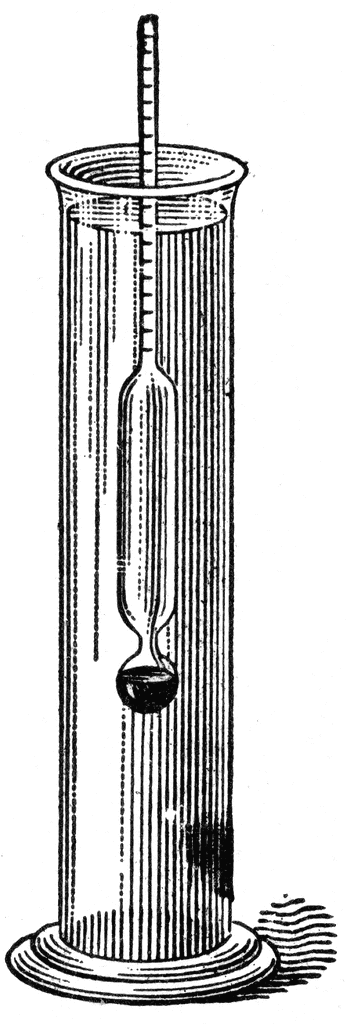
In the following period, there will be only some technological evolutions, such as the invention of the densimeter (hydroscopium), a tool for evaluating the density of liquids. As far as we are concerned, it is used to measure the amount of sugar and alcohol in musts and wine (opposite, a drawing of a more modern hydrometer). It is mentioned for the first time by Synesius, in a letter written to his teacher Hypatia, at the turn of the IV-V century AD. However, it seems that the common use dates back to the sixth century, as the grammarian Priscian recounts. This and other knowledge will be lost in the following centuries. A similar instrument will be invented again at the beginning of the 17th century.
However, there are still several inexplicable aspects for us in the production of wine from the Roman era. One of the most striking is represented wines with incredibly long aging, even of hundreds of years, that are praised by some poets. Considering that even today it is not possible to have such long-lived wines (which remain drinkable and pleasant), they were probably just hyperbole or poetic licenses.
Some important passages of winemaking are totally omitted in the ancient texts. For example, the maceration of the skins is never described. This fact has misled some modern authors of wine history, making them write that only white wines were produced , at the time. In reality, the Latin authors speak of a wide range of colors. Pliny writes about white, fawn (orange wine?), red and black wine. Galen also adds pale red (pink?) and pale, which he describes as an intermediate tonality between white and fawn.
In any case, the Romans certainly laid the foundations of some oenological practices, as I will explain you, but they did not know why they did them or why they added certain substances to wine, having no chemical knowledge on the compositions of musts and the products they used. They could just appreciate the final results. The other insurmountable limit of the time was the absolute ignorance on fermentation, as well as on microbiological alterations of the wine.
So, they might be good at making some wines, but they were always at the mercy of luck and chance. If something went wrong, they could do nothing and, simply, they downgraded the wine. However, this productive fragility does not belong only to the Roman era, it will remain for a long time. These processes will begin to be understood (and managed) only after the Pasteur's discoveries on the role of microorganisms in wine production, but we will have to wait until the second half of the nineteenth century.
Finally, let's not forget that, as in every past era, different realities coexisted: the richest wineries equipped with the most advanced tools, those (of all sizes) managed by educated or otherwise expert people, up to the many farmers who continued to making wine in a very primitive way.
Some core concepts
The Romans had already reached a certain awareness regarding some key concepts of wine production, which will be rediscovered only centuries after the end of the ancient era.
First of all, there is the importance of cleaning. They certainly did not know of the existence of microorganisms, they did not have our sanitizing products, the running water in the cellars and many other things. But they had realized how important it was to clean everything properly. The care and perfect cleaning of each container and tool, before and after each use, is a "mania" for the Roman authors, since the most ancient times of Cato. This way of working will be recuperated, in modern times, only quite recently. The cleaning of the wine containers was facilitated by the internal coating, made with vegetable resin, renewed with each use after having thoroughly scraped the old layer. They also recommended carefully cleaning them of any residual odors. In a cellar in Stabiae (today Castellammare di Stabia, in Campania), found totally intact by the archaeologist Fiorelli at the end of the eighteenth century, the grape pressing room was covered on the floor and the walls with a material made of crushed bricks and slaked lime, up to about one meter and eighty in height, with the limit marked by a red line. Lime is the oldest way to sanitize walls subject to the humidity. Its alkalinity prevents the development of molds and other microorganisms.

They also understood the importance of temperature during the winemaking process. Columella recommends bringing the wine containers to hot or cold places, as needed, or to have anphoras in different positions. He writes that if you feel the temperature rise too much by touching the wine amphora, you will certainly not have a good vinification. Today we know that fermentation yeasts work well at certain temperatures. Especially too high temperatures can compromise the process. In a cellar in Pompeii, an ingenious system was found to cool wine amphorae. These were leaned against a clay cavity in which fresh water was made to flow. In the description of the production of sweet sparkling wines, we read that the amphorae were transferred at a certain point in cold water tanks (to stop fermentation and leave a sugary residue). As still today, the cold was an ally of the cellar men to favor the processes of sedimentation and then racking of wines. In Late Empire texts, the importance to have fresh cellars is emphasized. If this was not the case, it was necessary to take advantage of temperatures seasonal changes to make certain operations. The ancient authors often link certain oenologist practices to some constellations (or other) for this reason: it is not a question of astrology, but their way of indicating the most appropriate seasonal moment.
They also understood the risks of wine oxidation (for them a generic alteration). In fact, the authors write to avoid exposing the wine to the air, especially at high temperatures. In the description of each winemaking step, the authors insist a lot on always having the containers carefully covered internally with vegetable resins and well closed.

The cellar and the winemaking
The production of wine was not so different from that of any winery of the past, at least until the nineteenth century, except for the wine containers.
The grapes were pressed with feet in the "palmenti" (stone or masonry tanks). The pomace or the whole bunches (closed inside wicker baskets or other material) were pressed. As we know, the main winemaking vessels were large terracotta containers called dolii (dolium in the singular), covered internally with vegetable resin, partially or completely buried. Their oldest name was calpar, already no longer in use at the time of Varro (1st century BC). There were also closed masonry tanks, although less widespread.
What was the purpose of the internal covering with resin of wine amphoras? It was made by resins of vegetable origin, which are substances of different nature produced by numerous plants, sometimes following wounds or parasitic attacks, so they are often also natural antiseptic. They have been used for thousands of years, for the most diverse uses, before the introduction of the synthetic resins or other materials. Often, they are also aromatic and we don't know how much this coating affected the taste of the wine or not. This coating certainly served to make these containers as inert as possible, as we try to do even today. The resin coating seals the porosity of the amphorae, against the risk of oxidation and makes them perfectly impermeable to liquids. It also guarantees a certain cleanliness, against the risk of microbiological contamination, since after each use the pots were carefully scraped from the old resin layer and re-coated.
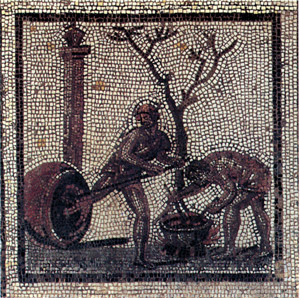
They considered important to evaluate the foam, that forms on the liquid, to understand the good proceeding of the fermentation. In particular, they describe one of the most common alterations of wine until not so long ago, the "fioretta" (I was not able to try the word in English). They describe it as a clear film, like a spider's web, on the surface of the wine. The altered wine became tasteless and flat, with a more or less intense aroma of vinegar. Above all, it happened for wines with a low alcohol content that remain too much in contact with oxygen. Now we know that it depends on the development of different species of aerobic bacteria.
After the fermentation, there was a period of aging on the lees. Then, they were poured into new containers, in the month of May. It was the moment to classify the quality of the product, through the tasting. The wine acidity was considered a very important parameter: if it was too low, it was not a good sign for the shelf life and quality of the wine (as we know even today).
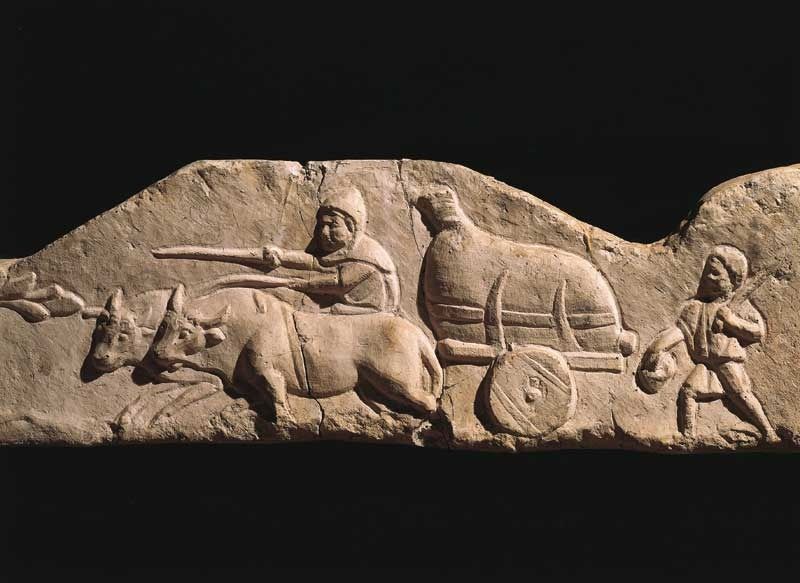
The low-quality wine, or that to drink young, was usually placed in new dolii (so it was called vinum doliare), from where it was taken for the sale or the consumption, pouring it into jugs or other. The transport by land was made by a large leather wineskin, called culleus or uter vini, placed on a cart.
The best wine was put in amphorae and for this reason it was called vinum anphorariarum. This container was used for storing, aging and shipping. The amphorae were always covered inside with vegetable resins, carefully closed with corks which was sealed with resin, clay or plaster. They were identified by a nota, that is, a brush writing made directly on the amphora or on a parchment or a strip of leather. This old kind of label was called pittacium. The nota reported the wine type (for example, the abbreviation rubr. means red wine), the place of origin and the year in which it was stored. Especially from the 2nd century AD., the wine could also be stored and transported in wooden barrels (cupa), and it was called vinum de cupa. Pliny already describes them in the second half of the first century BC, as typical of the area of the Alps.

To move the liquids (must or wine) from one container to another, long siphons were used, or smaller transport containers (amphorae or other). In more rich cellars, as in one found in Stabia, the grape-crushing area had a sloping floor towards a drainage channel, where lead pipes (fistula) could be inserted to carry the wine into the fermentation dolii. The aulon sysetera was a glass instrument used to take small tasting samples from the wine containers, similar to the wine tester (or pipette) still used today.
To eliminate sediments and lees, they used the system that has always been used in the cellars, i.e. the decanting after allowing the sediments to settle on the container bottom. For the cleaning and filtration of wines, the authors tell us of a colum or saccus vinarius, a basket or colander made of wicker, mat or rushes, in the shape of a cone (below, a similar nineteenth-century one).
CONTINUE ... with the oenological practices.
BIBLIOGRAPHY
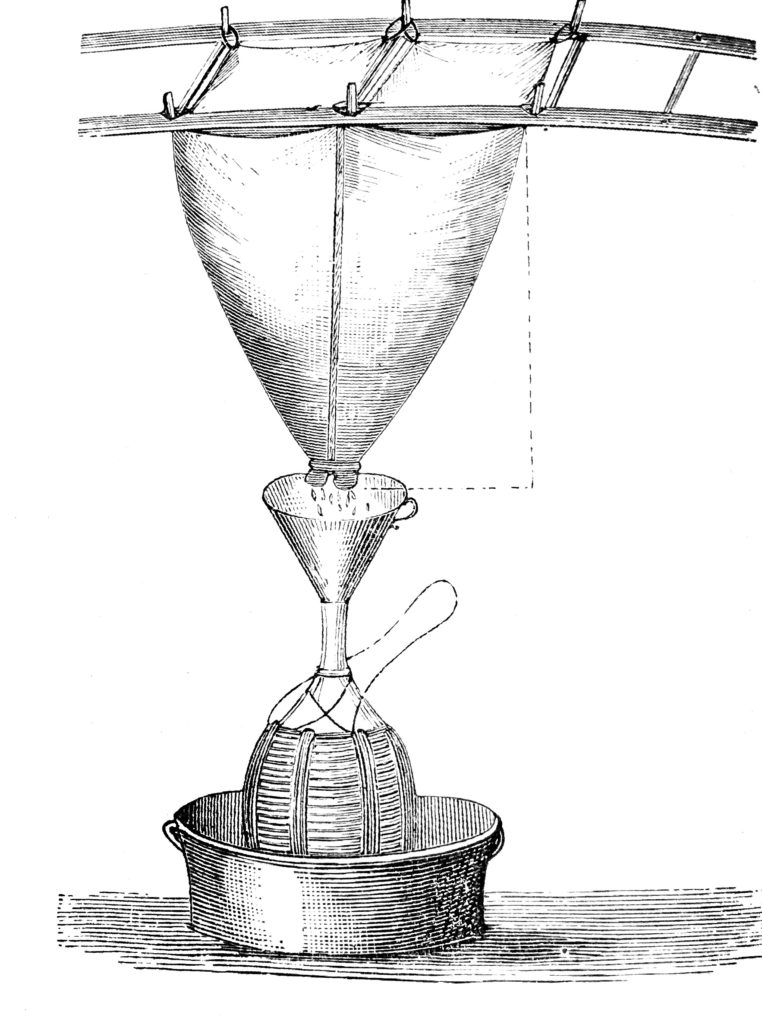
“De re rustica”, Lucio Giunio Moderato Columella (60-65 d.C.), tradotto da Giangirolamo Pagani, 1846
Luigi Manzi “La viticoltura e l’enologia presso i Romani”, 1883
Dalmasso e Marescalchi, “Storia della vite e del vino in Italia”, 1931-1933-1937
Emilio Sereni, “Storia del paesaggio agrario italiano”, 1961
Enrico Guagnini, “il vino nella storia”, 1981
Hugh Johnson, “Il vino, storia, tradizioni, cultura”, 1991
Tim Unwin, “Storia del Vino “, 1993
Antonio Saltini, “Storia delle pratiche di cantina, Enologia antica, enologia moderna, un solo vino o bevande incomparabili?”, Rivista di Storia dell’Agricoltura a. XXXVIII, n. 1, giugno 1998
E. Chioffi, “Anfore, archeologia marina”, Egittologia.net
“Interventi di bonifica agraria nell’Italia romana”, a cura d Lorenzo Quilici e Stefania Quilici Gigli, ed. L’Erma di Bretchneider, 1995.
“Storia dell’agricoltura italiana: l’età antica. Italia Romana” a cura di Gaetano Forni e Arnaldo Marcone, Edizioni Polistampa, 2002
“Terra e produzione agraria in Italia nell’Evo Antico”, M. R. Caroselli.
Grapes do not like sunbathing
In August we love the sea, the sun, and the tan. We can protect ourselves with a good sunscreen but grapes can't, so they don't like sunbathing or, better, the direct exposure to the torrid rays of the sun, which are particularly intense in our area.
In the very important period of ripening, we winemakers also evaluate the exposure of the bunch. We decide if the defoliation is necessary, that is the removing of some leaves around the bunch, or not.
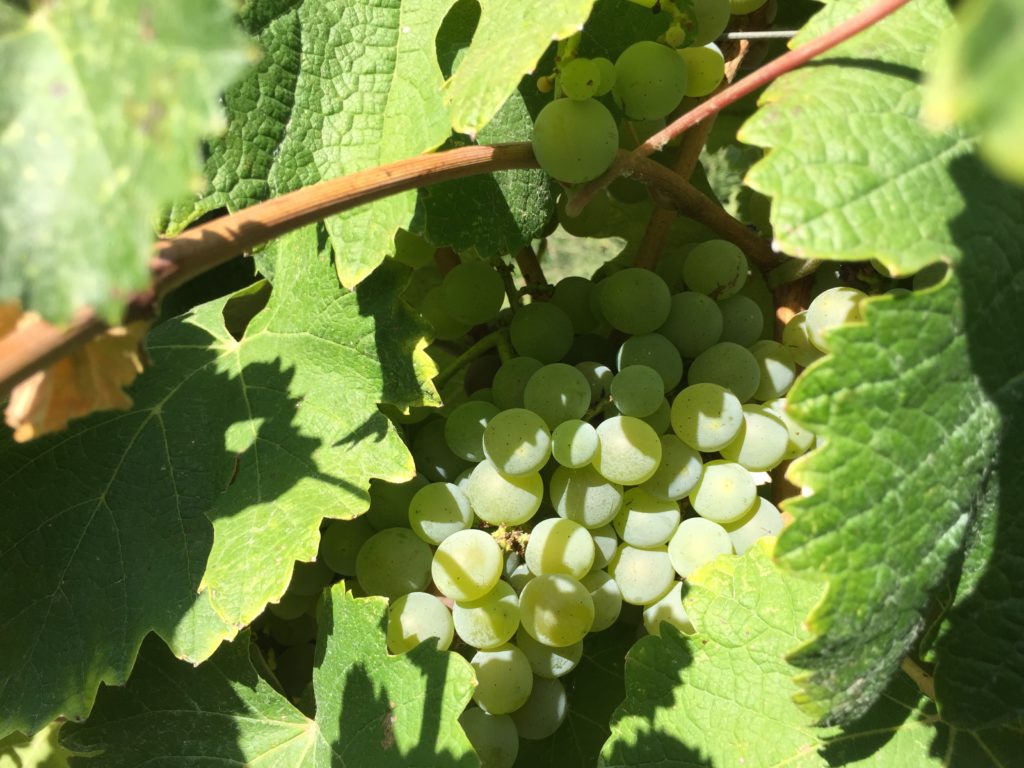
In general, the grapes need to be a little covered by leaves, however it depends on the climate and each particular situation. Especially, in hot climates and with intense solar radiation such as in Bolgheri (and for a large part of the center and the south Italy), grapes could undergo serious problems, if too exposed.
The defoliation.
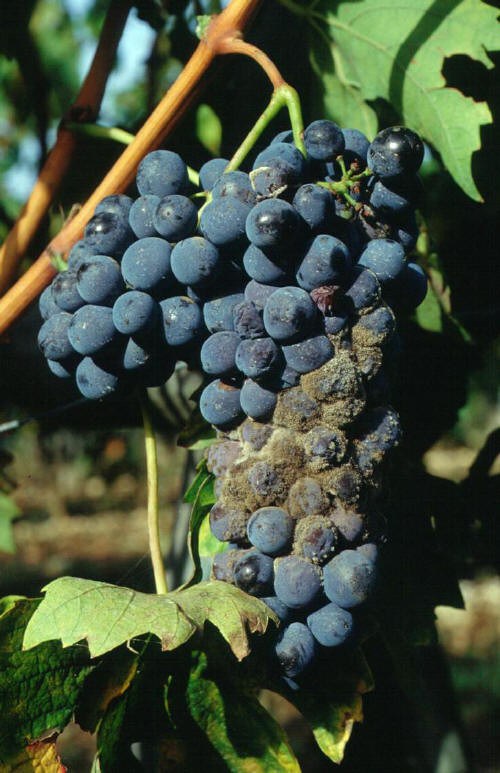
In the cooler and (above all) humid territories, defoliation in the last stages (from the veraison to few weeks before the harvest) is often necessary. Removing a little vegetation serves to avoid stagnation of humidity, micro-conditions that can favor the terrible rot and the mold of the bunch, with the consequent loss of the grapes. This need may also be present in our Mediterranean area, but only exceptionally, in particularly rainy vintages.
Normally, however, a balanced vine does not require defoliation. Scholars give us some parameters: the coverage is optimal up to about 40% -50% of the bunches surface.
However, if the vine is too lush and the excess of leaves completely covers the bunches, the defoliation can be favorable, especially in environments without intense sun radiation. In this case, the experimental tests showed that the lightening of the vegetation and the better exposure improve the maturation (favoring the increase of sugars, the increase of the color, there are more primary aromas, less acidity, a better accumulation of compounds phenolic).
If you decide that it is the case to remove the leaves, however, you must also understand how much to remove and how. So, it is a handiwork that should be done only by expert people, able to decide for each singular vine.
The leaves should not be chosen at random. It is better to remove the basal ones, which are under the bunch. They are the oldest but also those not directly involved in photosynthesis in favor of the ripening bunch. This role is instead played by the leaves above the fruit, which it would be better to eliminate as little as possible, except for those that are too shading.
In general, however, it is always better not to remove too many leaves, otherwise the plant's photosynthetic capacity (therefore the quality of the grapes) is limited. How many leaves we need? It depends on many factors: the climate, the intensity of solar radiation, the variety (for example, it also affects the size of the bunch), the vine training system, ...
The excess of light and heat.
In our territory, if the vines are in balance, as mentioned, we mostly avoid the defoliation: there are almost never any phytosanitary risks related to humidity, except in particular years. In particular, we want to avoid damage from excess of light and heat.
Numerous studies have shown that, in warm areas and with intense solar radiation, the optimal situation for ripening grapes is a microenvironment in which the bunch receives diffused light, with some flashes of light that infiltrate the vegetation from different directions.
In these climates, there is no fear of the scarce accumulation of the various grape components. On the contrary, there is a risk of too high sugar concentrations which lead to too high alcohol levels, inelegant aromas and poor color.
Excessive heat and drought, for grapes exposed directly to sunlight, can also lead to serious damages, as phenomena of dehydration of the berries, with the synthesis of unpleasant aromas, the degradation of some aromatic precursors, up to real "burns", which cause browning and necrosis of the tissues of the fruit.
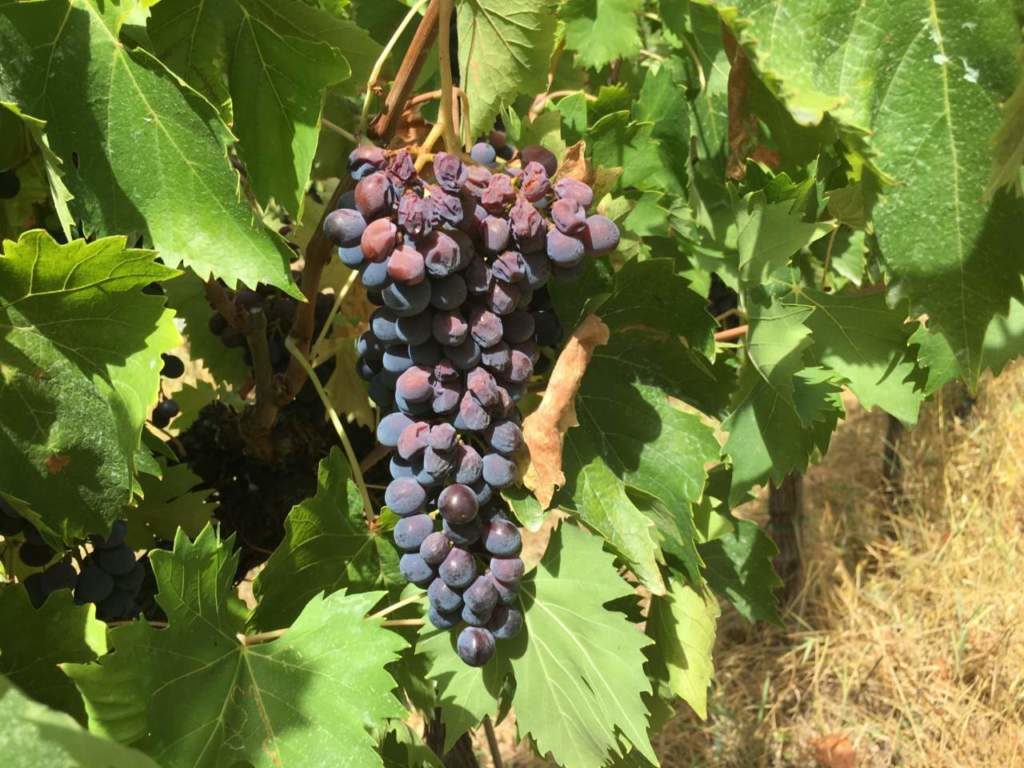
These serious damages occur more often to those bunches that have grown in diffused light and are suddenly exposed to sunlight. It can happen because of the vintner, who makes a mistake in managing the vine canopy, but also for unwanted events (for example the fall of the leaves due to pest attacks, etc.).
The problem is not only the direct light but also the temperature, which plays a relevant role in ripening, especially on color and aromas, and can become excessive for the bunches not sufficiently protected by the leaves. Studies have shown that summer temperatures of 35°-40° can inhibit the synthesis of anthocyanins (the color of red grapes) but also degrade the pigments that have already been produced. The high temperatures also seem to cause a degradation of the aromatic precursors (e.g. carotenoids), that is, those substances that are not aromatic in the grapes but will become aromatic in the course of winemaking. High temperature fluctuations between day and night, as happens in Bolgheri (especially in the hills), can also optimally balance certain excesses of daytime heat.
Only our continuous good work in the vineyard allows optimal ripening. There may be that few bunches can escape the protection of the leaves of an optimally managed canopy. We will take care not to collect it, with the selection during the harvest, as we do for every berry that is not exactly perfect.
Climate change, laws and harvest: the last steps in the Italian vineyards during the Roman times.
(continued from here)
We are concluding our journey through Italian viticulture at Roman times, with the latest works from the vineyard and the harvest.
First, however, I would like to complete the picture of the time with the description of the climate. The climate changes have had great importance in the historical events of humanity, all the more so as regards the evolution of agriculture.
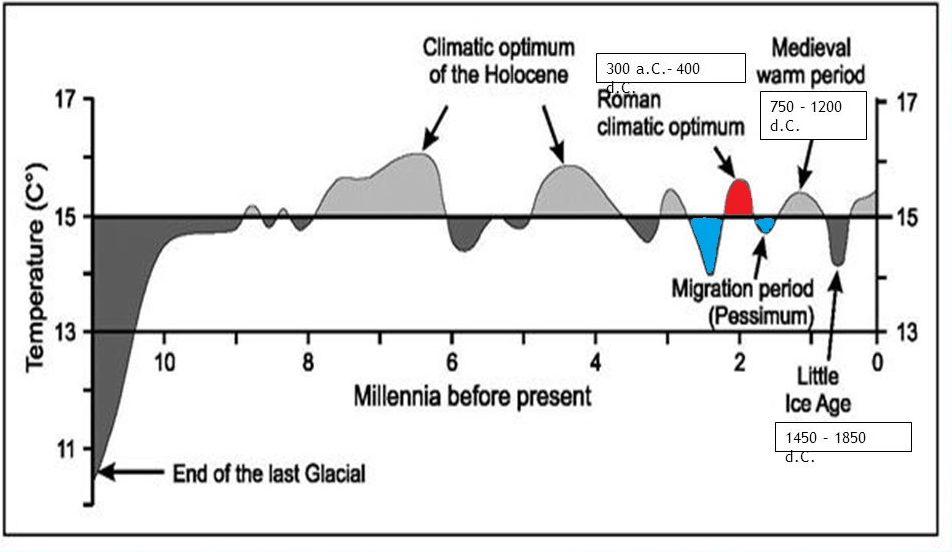
The foundation of Rome (753 B.C.) occurred in a period of small ice age (in the graph, it is the first blue descending peak), which lasted from about 900 to 300 B.C. This means that, in the first centuries of the Roman era, Italy had a decidedly colder climate than what we are used to today. The graph on the side shows the annual average temperatures from the Ice Age to today. The final vertical line represents our period.
Numerous Roman authors testify to the terrible winters of those periods. Columella and Juvenal say that, at the beginning of the fourth century BC, the winters were so severe that the Tiber was covered with ice. The woods of Latium and Etruria were constantly covered with snow. The winter of 399-400 B.C. remained in the history of Rome because of an incredible snowfall. More than 2 meters of snow (7 feet) fell. The collapses of trees and roofs throughout the city caused numerous deaths and wounded. Varro tells of very long winters in the Italian mountains. Saint Augustine reports that, still in the winter of 275 B.C., the Tiber froze and Rome remained under the snow for 40 days.

How can we imagine the viticulture of that period? We don't have references. We can think that it was present above all in milder areas, such as the coasts or other favorable areas, up to not very high altitudes.
After that, the climate started to undergo a remarkable change, with the rise of temperatures, up to the moment called the Roman Optimum Climatic, a hot period. It lasted from about 250 B.C. to 400 A.D. and locally affected Europe and the North Atlantic. The climatic passage towards higher temperatures corresponds with the expansion of Rome in the Mediterranean. In ancient times, in fact, the sailing was possible only during the favorable seasons. The better climate allowed longer sailing periods. It also corresponds to the exponential increase in Italian viticulture. The warmer climate allowed it to expand even in areas that were previously unfavorable. Thus, the massive export of wine also began.
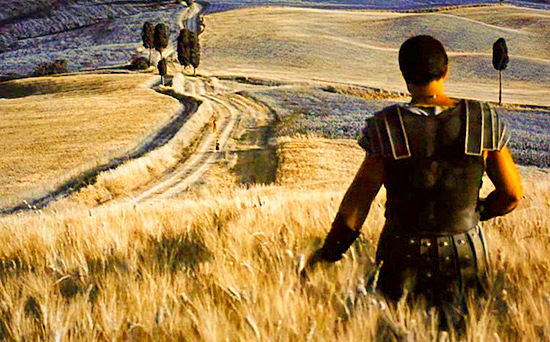
The increase in temperatures determined, in general, the shift to the north of the Mediterranean crops line, such as the olive tree. Pliny writes that the beech, which previously only reached the height of Rome, pushed its habitat to the north of Italy. Then, the hot period favored the spread of viticulture by the Romans in most of Europe, even in the territories that had never seen the vine before. They took the vines up to England, as well as to considerable altitudes. From many of these extreme areas, the viticulture will disappear with the subsequent Little Ice Age
Instead, a cooling period began from around 400 A.C. According to several scholars, the instability and the climate worsening, with the consequences on agriculture and people's health, contributed to the fall of the Western Roman Empire.
It is not known exactly how much the human activity of the time could have influenced climate changes. We know, however, that the Roman era recorded the first massive human interventions on the transformation of the Italian natural landscape.
In pre-Roman times, Italy was made up of immense expanses of woods, interrupted by marshy areas in the coastal areas or in the plains. Only a very small part was occupied by agriculture, restricted around the colonies of Magna Grecia in the south or the city-states of central Italy.
For example, the vast area between Aquileia, Ravenna, Mantua, Brescia, Reggio and Como was all marshy. The Adriatic, Tyrrhenian and Ligurian coasts were covered with dense forests, from which timber, considered valuable for the size of the trunks, was taken. The hills of Rome themselves, such as the Palatine Hill or the Quirinal Hill, were covered with woods. Between Modena and Bologna, the forests were still so dense in the Republican era that they considerably slowed down the construction work of the Via Emilia. Livy says that the Cimino forest in Etruria was more terrifying than the Germanic ones described by Tacitus. The Cisalpine Gaul (north of Italy) was very rich in oaks, in fact it was the main breeding center for the empire's pigs. The Gargano promontory, in Apulia, was covered with oaks and other trees that reached the sea.
[one_second][info_box title="The vineyard even before the law" image="" animate=""]
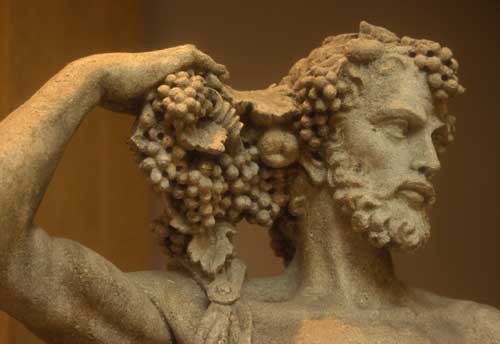
«Sed etiam a vinea, et balneo, et theatro nemo dubitat
in ius vocari licere».(Gaius, Liber I ad Legem XII Tabularum)
"It is not allowed to sue (bring to court) anyone who is in his vineyard, in the thermae or at the theater".
This sententia, cited by the jurist Gaius, is included in the most ancient written laws of Rome, the Laws of the XII Tables (Lex XII Tabularum) (450 B.C.). It shows how important the works in the vineyard were considered in the most ancient eras of Rome, to the point of also suspend legal proceedings. They had to wait for the vintner to finish his job.
In general, the importance of viticulture in Roman period can be understood from the large number of laws that concerned it, with respect to successions, sales, legacies, etc. In agricultural contracts, it was always recognized the increase in the value of a land in which a vineyard had been made. In the event of early termination of the rental contract, also due to arrears, the owner had to indemnify the tenant farmer who had planted vines there.
There are also numerous court cases concerning the vineyard, which offer us not always edifying scenes of the life of the time. For example, the jurist Sextus Pomponius tells of a man who, taking advantage of the great luxuriance of the vines (trained to the trees) of the neighbor, collected and sale the fruits from the shoots that stretched up to the trees of his property. At one point, the owner of the vines noticed it and he wanted to cut those branches. The man opposed the cut, and he sued the neighbor to prevent it to him. However, the court ruled against him, reiterating that the branches always belong to the owner of the land where the vines are planted, wherever they go.
In ancient Rome, there was the first example in the history of a government intervention to regulate the planting of vineyards and, therefore, the wine market. In 92 A.D., the famous Domitian's Edict prohibited the planting of new vineyards and introduced the obligation to destroy half of those in the provinces. According to some scholars, the edict was born in a moment of general stagnation in the wine trade. In particular, the Roman patricians, who were wine producers, did not want to have external competition. Cicero already had protectionist intentions when he wrote in De Re Pubblica (55-51 BC): "We do not allow the Transalpine peoples to cultivate the olive tree and the vine, so that our olive growing and viticulture remain superior". According to others, the edict was also born from the choice to curb the excessive expansion of the vineyards that was taking place in that period, to avoid famines due to lack of wheat.
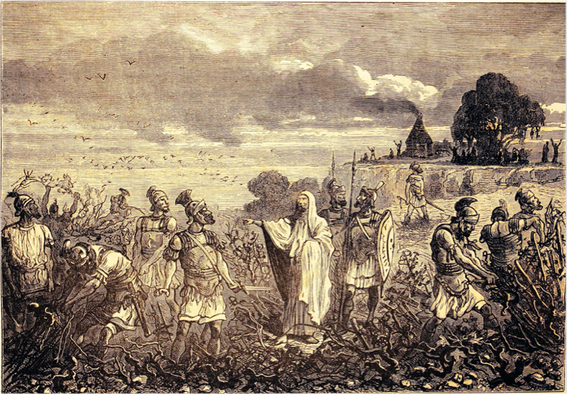
The subsequent decline of viticulture in Italy made the ban disappear and, vice versa, several emperors worked to stem this phenomenon. For example, around 275 AD, Aurelian distributed slaves free of charge to the landowners, from Etruria to the Maritime Alps, to expand their vineyards.
Instead, the ban on creating new vineyards outside Italy was lifted by the Emperor Probus, towards the end of the third century A.D. Probus finally allowed "all the Gauls and all the Spaniards and even the Britons to cultivate vines and make wine", and to "own the vineyards to the Gauls and the Pannonians" (Historiae Aug. Probus, 18, 8). He also introduced corves for the Roman centurions, dedicated also to the planting of vines, such in Germany.

Towards the end of the ancient era, the Italian viticulture was in sharp decline also because it was oppressed by bureaucracy and ever more suffocating taxes. Cassiodorus says that the producers went so far as to cut their vines to avoid unsustainable taxation. In the Codex Theodosian Code (413 A.D.), it is written that those who cut the vines to escape the tax authorities were condemned to the death penalty and confiscation of property:
"Si quis sacrilega vitem falce succiderit, ..."
If someone had cut down the vine with a profaning sickle ..." Cod. Theod. l. XIII. Tit. XI. leg. 1.
The Lombards will return to write laws for the vineyards some centuries after. [/info_box][/one_second]
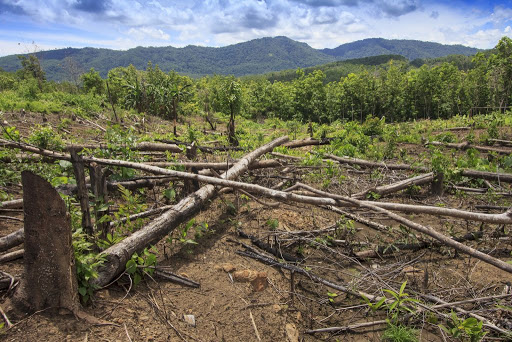
These woods had always been used by man but, in Roman times, the population increased considerably compared to the past and so did the technical applications. The use of timber became massive, used as fuel, but above all for the building, in considerable expansion, and the construction of the great Roman naval fleets, ...
So, over the centuries, the Romans deforested a large part of the peninsula, also to make more space for agricultural land and pastures. Compared to today, however, there was still a big part of uncontaminated nature
In archaic times, the king Ancus Marcius had placed the woodland patrimony under the protection of the gods and the decemviral magistrates, declaring it Public Natural Property. More than a protection, probably, it was only an economic question: an important part of the public income derived precisely from the management of this patrimony. However, we know that the Romans themselves noticed the degradation that ensued from the intensive exploitation of natural resources. Pliny and other authors tell us about it, talking about landslides, floods, erosions, water shortages and agricultural problems, recognizing the human hand behind them
But, let's go back to the last works of the vineyard.
Green pruning
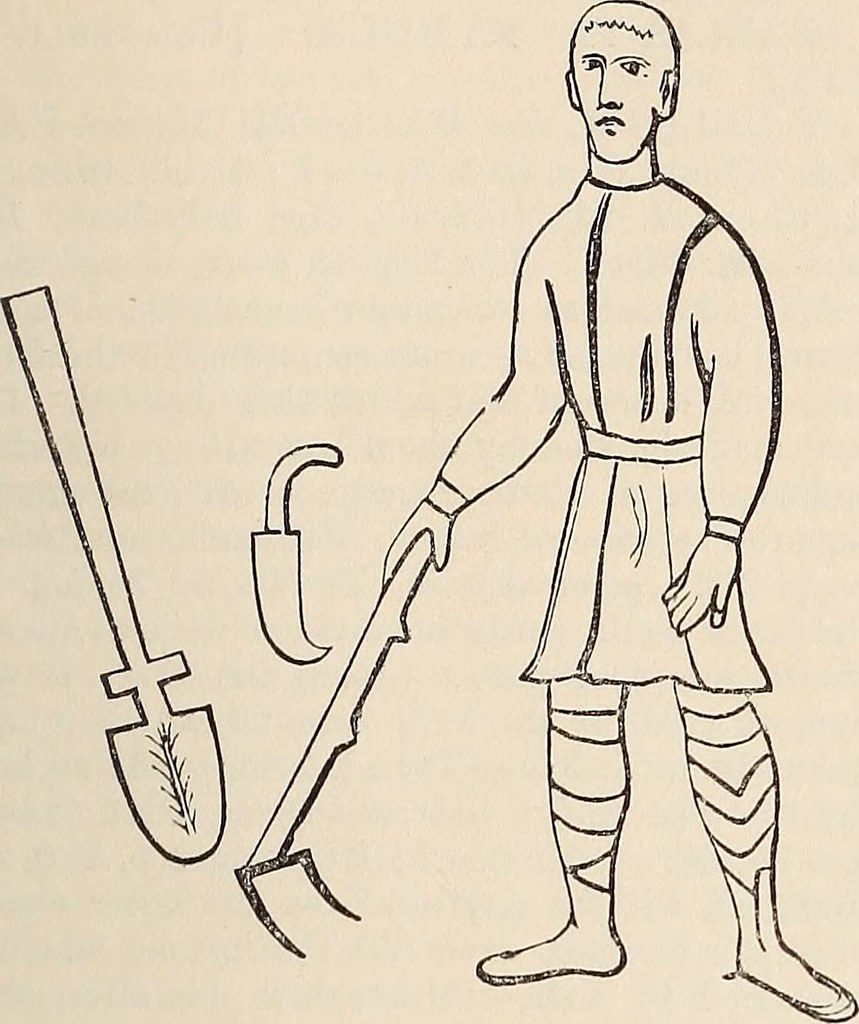
The Roman agrarian authors tell of the various works that we include under the term "green pruning", at the time called vites pampinari. For Varo, it is even more important than winter pruning and must only be done by expert people. Already Cato mentions the work of pinching off the suckers, binding the shoots and tearing off the leaves. Columella also adds the topping and thinning of the bunches, completing all the works of green pruning, as in our day.
They used the cultelli minores, small curved knives, to take off the suckers. The shoots of the vines were tied so that they would not be broken by the tools and animals during the passage, taking care to direct them upwards. These choices were made without knowing the physiology of the vines, as today. It was an empirical knowledge, born from the careful and rational observation of the response of plants to the different ways to done the works.
In August, Columella explains, the leaves are removed around the fruits in the territories where the climate is cooler and rainier, to avoid the bunches rot. Instead, he advises not to do it in hot places, like we do today. He also tells how vines were shaded with wattle matts in areas with a torrid climate, as his uncle Marcus did in Betica (southern Spain).
Soil tillage
Soil tillage and weeding were also important then as today. The operation was called fossio and who did it fossor. Virgil uses the verb jactare.
Where possible, it was always done with the plow pulled by oxen. Where it wasn't impossible the use of the plow, they worked with the simple spade (pala or ligo) or with the bipalium (a spade with a transverse bar, which digs twice the depth of the common one). The marra was a large, toothed head hoe. The rastrum and the sarculum were different types of rakes. The irpex was a heavy rake pulled by oxen, like the modern harrows
The Latin authors recommend hoeing the vine at least three times a year: one when it sprouts, the other at flowering and the third for ripening. The vineyard with young vines must always be carefully dug to remove all weeds. These works are essential even today, even if done differently, to remove the vegetation close to the vine and to avoid unfavorable competitions in delicate moments of the life of the plant.
Another job was to dig out the soil under the vines (ablaqueare or circumfodere) with the dolabra or the dolabella, which were small axes. At the time of Palladius it was said excodicari: the earth was lightly dug around the vine and the most superficial roots were cut. Then, in the territories with a cooler climate, the bases of the vines were covered again with earth in the winter. This traditional work is no longer practiced today.
Grape harvest
The grape harvest was an event linked to religious practices, mainly dedicated to Jupiter, as already described here. The Vinalia Rustica festivities took place on August 19th and they served to propitiate the good weather during the ripening of the grapes. During the festivities, the grape harvesters could make jokes of all kinds, even offending passersby, without them may to react. Cicero speaks of the Auguratio Vineta, augural practices before the harvest. The official start to the harvest was given by the festivity called Auspicatio Vindemiae, with a ritual officiated by the Flamen Dialis, the high priest of Jupiter. He collected the first bunch in a public vineyard and offered it to the god, making an animal sacrifice. The ritual had to guarantee a good harvest. The period of the festivity varied every year, in relation to the harvest period. Pliny the Elder instead mentions a magical ritual used to ward off bad weather: they put a bunch of fake grape in the vineyard that should have attracted damage to himself, saving the rest.

Instead, Columella writes about the search for rational methods to decide the ideal moment of the harvest. He examines the systems proposed by various authors, such as the evaluation of the softness of the berry, the color and brightness of the fruit, the fall of the leaves. This latter is not surprising, because at the time it was frequent the late harvest. However, according to Columella, these are not good systems because they can also depend on other causes besides maturity, such as the bad weather or other. There are those who taste the grapes but even this method can be misleading for Columella, because he says that it is not always possible to understand by the tasting the relationship between sweetness and acidity of the grape, especially for the sourer varieties.
According to Columella, the best and error-free system is to evaluate the color of the grape seeds:
“The best thing, as I do, is to observe the natural maturation. Now, the natural maturity occurs if, after squeezing the grape seeds which hide in the berry, they are dark in color or black. In fact, only the natural maturity can give color to the grape seeds ... "(De Re Rustica").
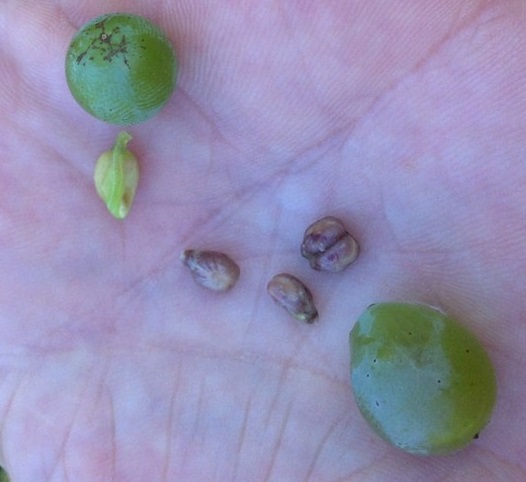
In fact, the grape seeds are a good sign of the ripening of the grapes. At the moment of veraison (the moment of change of color of the berries), they change from green to yellowish or brownish, depending on the variety. Then, they become darker and darker. It is an objective parameter, good enough for the past. It has remained in use for centuries, although it is not very precise. In fact, it becomes increasingly difficult to evaluate the different shades of brown in the final stages. Today we evaluate a set of different parameters to decide the time of the grape harvest (see here). The grape seeds complete the information necessary, especially by tasting them on the maturation of the tannins.
Another recommended system in ancient times consisted in evaluating the growth of the size of the berries which, when ripe, stops. The suggested method is to remove a berry from a bunch and check it after some time. If the grape is not yet ripe, the other berries continue to grow and fill the void left by the removed one. When the berries no longer grow and the hole is not filled, the grape is ready. This system is also based on careful observation of what is happening in the vineyard. Like the previous one, it is a fairly good system but does not allow the precision that we are looking for now.
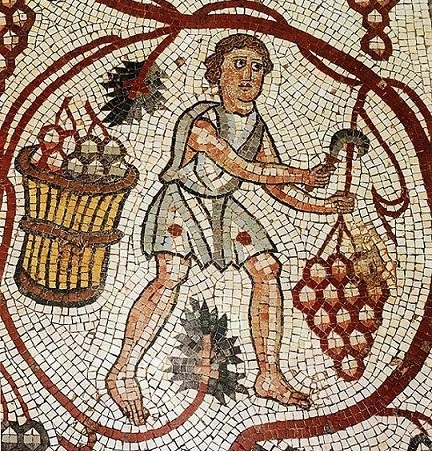
In any case, this knowledge, like that related to other vineyard works, had advanced for the time. Let us remember that, most likely, they were known and put into practice only by those who had the culture to read the agricultural treaties of the time. Certainly, most of the winemakers collected the grapes without knowing these techniques and without great precision for maturity, as happened in the vast majority of the vineyards until not long ago.
Often, in the past, much winegrowers collected the grape in the same period every year, when the neighbor started, when there was time from other works, ... In ancient times, people also went to ask it to fortune tellers. In fact, Cato and Columella, in their texts, scold the winemakers who rely on astrologers, haruspices or other similar sources to decide the time of the harvest, instead of learning their craft!
When did they harvest?
Columella offers us the most precise testimony on the dates of the harvest, in his calendar of agricultural works (book XI of De re rustica). Columella wrote it in the second half of the first century. A.D., so in the Roman Optimum climate period. The harvest period seems very similar to ours.
In the monthly calendar of works, Columella begins to talk about the grape harvest in August, when he says that grapes are being harvested in lands with remarkably hot climates, such as Betica, in southern Spain (that of his Uncle Marcus) and north Africa. At the beginning of September, he writes, harvest begin in Italy in places near the sea and warm ones in general. In the second half of the month, he says that harvest is done in the great part of the vineyards. Finally, in October the harvest starts in the cooler areas. I remember that in the times of Columella the Julian Calendar was followed, we the Gregorian one, but more or less the months coincide.
The collection was done with small curved sickles, called falcula vindimiatoria. To reach the bunches of the vines trained to the trees, they used stairs. Pliny recommends to not harvest hot grapes or covered with dew, excellent advice also for today. The bunches were placed in baskets, as showed in many Roman mosaics or frescoes, or in wooden containers, as Cato writes.
How much did a vineyard of ancient Rome produce?
"Vinea est prima, si vinum multum siet"
Cato wrote in the second century B.C.: "The vineyard is the most convenient of the crops, if it produces a lot of wine".
In fact, in general, compared to our parameters, the production told by the Latin authors is really high, as we have already seen in preview with the wonderful vineyard of Palaemon (here).
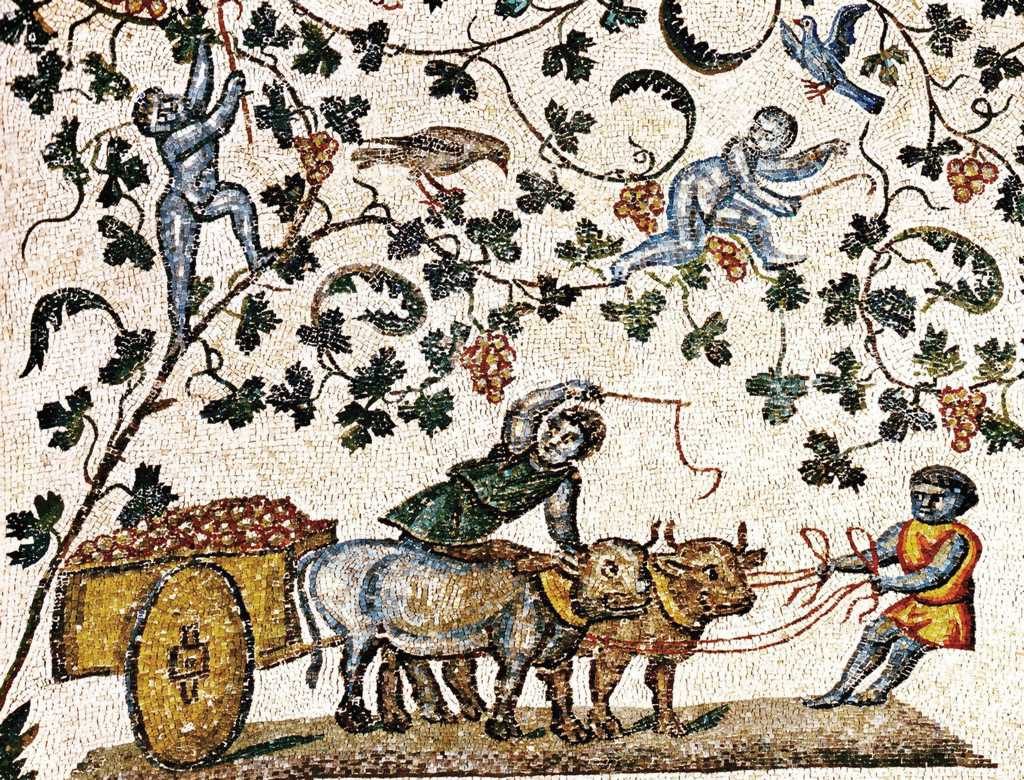
During the Roman time, as in all past eras even closer to us, the value of the vineyard was linked to a high productivity, even if they recognized an appropriate reduction in yields for wines of great value. With the exception of this small part, the large mass of grapes was used to produce large quantities of cheap wine. The various ancient authors provide us with some estimates.
In Cispadania (currently Emilia Romagna and also part of the Marche) it seems that an average of around 10 cullei* of wine was produced per jugero* (about 200 hl/per hectare), with extreme peaks of 15 cullei (about 320 hl/ha). A lower yield is witnessed for central Italy. Do you remember the wonderful vineyard of Palaemon which, according to Suetonius, produced 360 bunches for each vine? Columella also mentions it, after it had passed under the ownership of Seneca, with a production of 8 culei per jugero (about 170 hl/ha). Columella states that it was better to stop using a vineyard if it had fallen below 3 cullei per jugero (about 65 hl/ha). Of course, the few precious vineyards were excluded from this consideration, for which the mentioned minimum is of 1 culleo/jugero (about 21 hl/ha).
Consider that today the average yield in Italy is around 100-120 quintals/hectare (108 quintals/hectare in 2019), which correspond to around 75-90 hl/ha. In Tuscany, where the average quality is very high, in 2019 the average yield was 66 quintals/ha, i.e. just over 50 hl/ha. (these data came from the very useful blog "I numeri del Vino", here)
Therefore, the Roman yields are enormous compared to ours, considering also that at the time the vineyards did not have the density of today. On the contrary, they were often in promiscuous cultivation. Thus, each single vine produced exaggerated quantities of grapes. We should also remember that the most common form of cultivation was the "married" vine (trained to a tree), which is very expanded form and leads to high production.
Some scholars have justified these numbers by thinking they were the maximum possible yields. There are those who argue that they should not be taken literally. There is the suspicion that some Roman authors may use a certain emphasis when they want to praise something. Certainly, the quantity, for mass production, was not lacking at that times.
We stop here for now, on the threshold of the cellar, with a grape basket on our shoulder. We will enter another time.
[alert style="warning"]*Units of measurement mentioned in this article:
The used unit of the capacity for the wine production was the culleus, which corresponded to a large wineskin of about 520 liters, the largest Roman volume unit. Below it, there was the amphora which corresponded to about 26 liters. It took 20 amphorae to make 1 culleus. The basic unit of measurement was the sextarius, which corresponds to just over half a liter (about 540 ml). 1 amphora = 48 sextarii.
The most used unit for agricultural areas was the jugerum, about 2553 m2, more or less ¼ hectare (which, I remember, is 10,000 m2). The basic unit was the actus quadratus, half of the jugerum.[/alert]
Bibliography:
"L'agricoltura di Lucio Giunio Moderato Columella" volgarizzata da Benedetto del Bene, con annotazioni adattate alla moderna agricoltura e con cenni sugli studi agrari d'Italia del cav. Ignazio Cantù, Milano, dalla Tipografia di Giovanni Silvestri, 1850.
"Interventi di bonifica agraria nell'Italia romana", a cura di Lorenzo Quilici e Stefania Quilici Gigli, ed. L'Erma di Bretchneider, 1995.
"Il vino nel «Corpus iuris» e nei glossatori", Cornelia Cogrossi, (2003) In: La civiltà del vino. Fonti, temi e produzioni vitivinicole dal Medioevo al Novecento. Atti del convegno (Monticelli Brusati, Antica Fratta, 5-6 ottobre 2001). Centro culturale artistico di Franciacorta e del Sebino, Brescia, pp. 499-531.
“Interventi di bonifica agraria nell’Italia romana”, a cura d Lorenzo Quilici e Stefania Quilici Gigli, ed. L’Erma di Bretchneider, 1995.
“Storia dell’agricoltura italiana: l’età antica. Italia Romana” a cura di Gaetano Forni e Arnaldo Marcone, Edizioni Polistampa, 2002
“Terra e produzione agraria in Italia nell’Evo Antico”, M. R. Caroselli.
"Meteo, clima e storia. Le variazioni climatiche del periodo Romano". Marco Rossi, 2007.
“Studi sui Libri ad edictum di Pomponio”, Emanuele Solfi, 2002, ed. LEM
“Origini della viticoltura”, Attilio Scienza et al., Atti del Convegno, 2010.
“La viticoltura e l’enologia presso i Romani”, Luigi Manzi, 1883.
“Storia della vite e del vino in Italia”, Dalmasso e Marescalchi, 1931-1933-1937.
“Storia del paesaggio agrario italiano”, Emilio Sereni, 1961.
“Il vino nella storia”, Enrico Guagnini, 1981.
“Il vino, storia, tradizioni, cultura”, Hugh Johnson, 1991.
“Contadini perfetti e cittadini agricoltori nel pensiero antico”, Valerio Merlo, Alce Nero.
2020 shirts
The official harvest shirts have arrived! 2020 is turquoise: the color of the sea, of tranquility but also of a new beginning, all of which we need this year.

The last Attilio's book wins the Biblioteca Lunelli Award
We have known, with pleasure, that the work of Attilio Scienza and Serena Imazio, "La Stirpe del Vino" (ed. Sperling & Kupfer 2018), English edition "Sangiovese, Lambrusco and other stories of vines", is the winner of the first edition of the Biblioteca Lunelli Award, an important italian prize for books on the theme of wine.
Summer opening hours
From the next week (from Monday July 6th), we will change our opening hours:
- from Monday to Saturday morning h 10.00-12.30 4.00-8.00 pm,
- Saturday afternoon 3.00-6.00 pm,
- Sunday by reservation only (for groups).
We are waiting for you!
Annalisa and Michele

